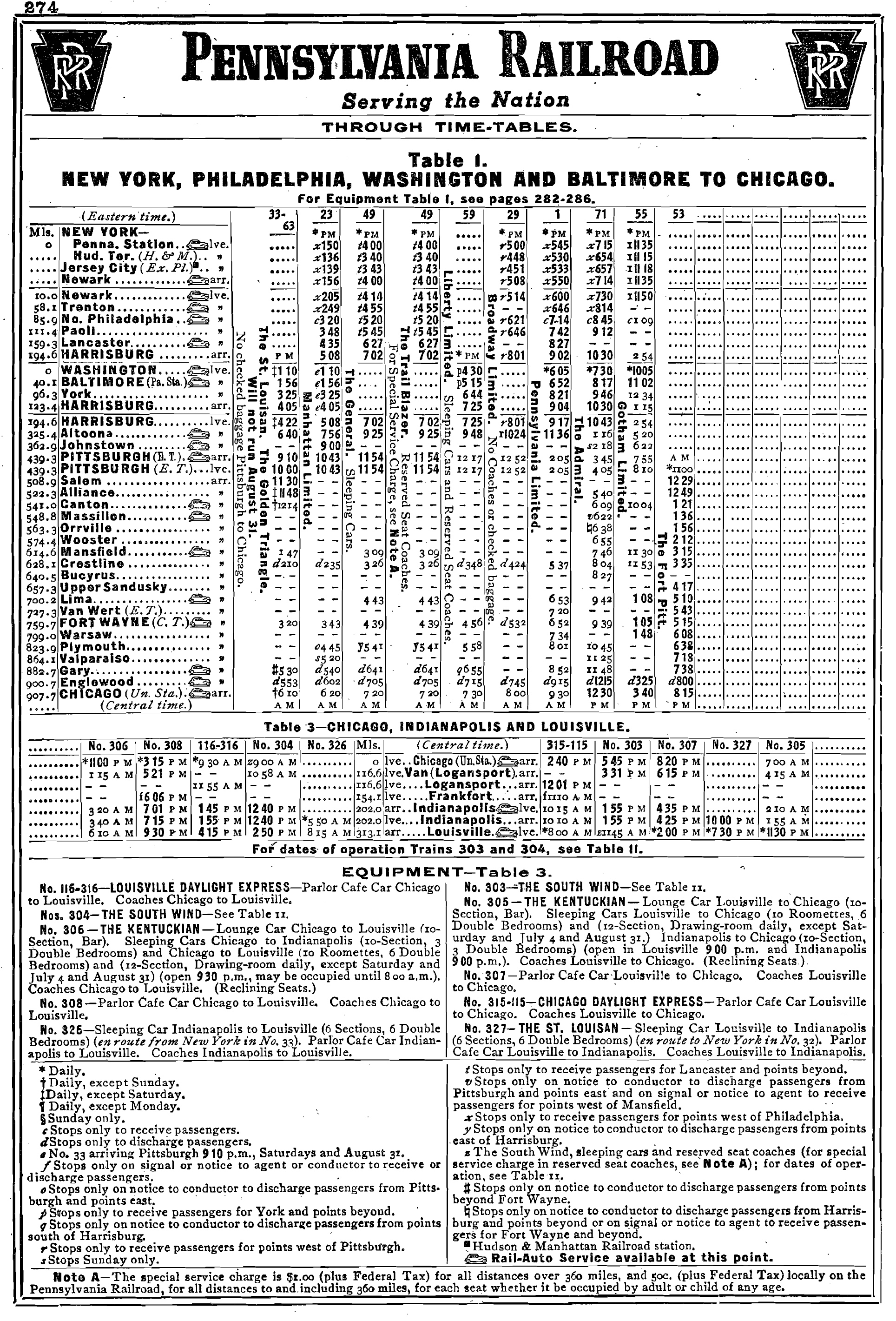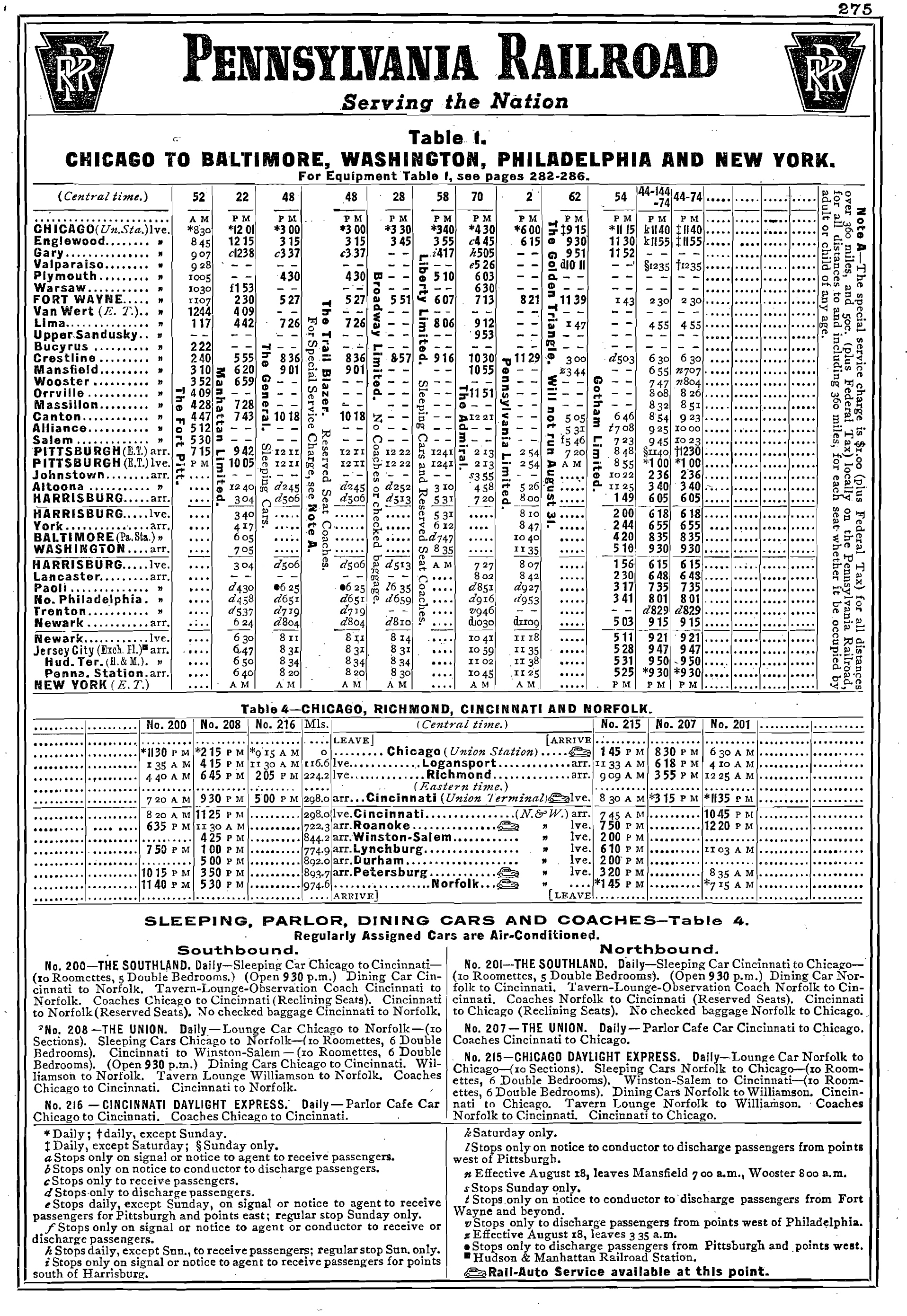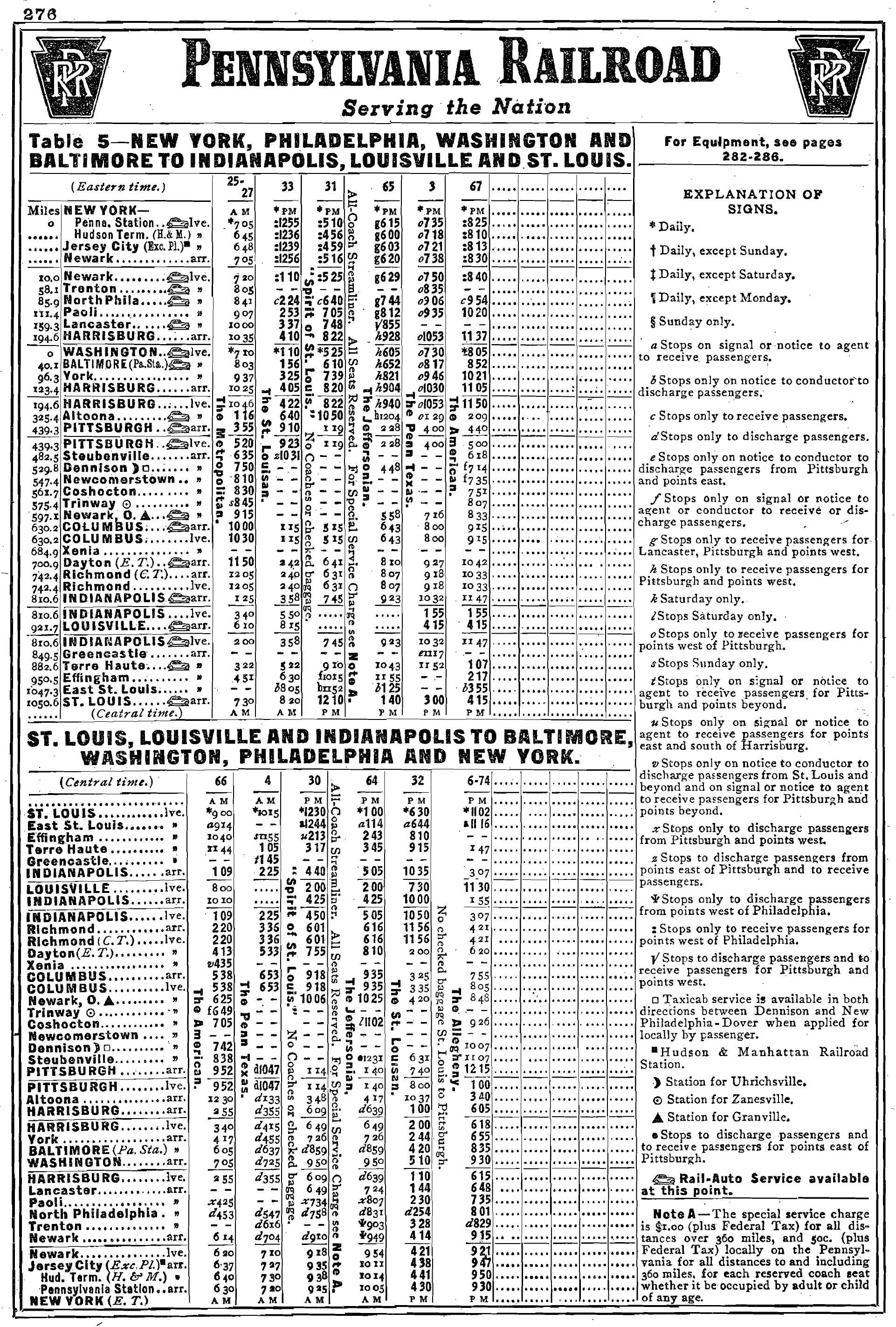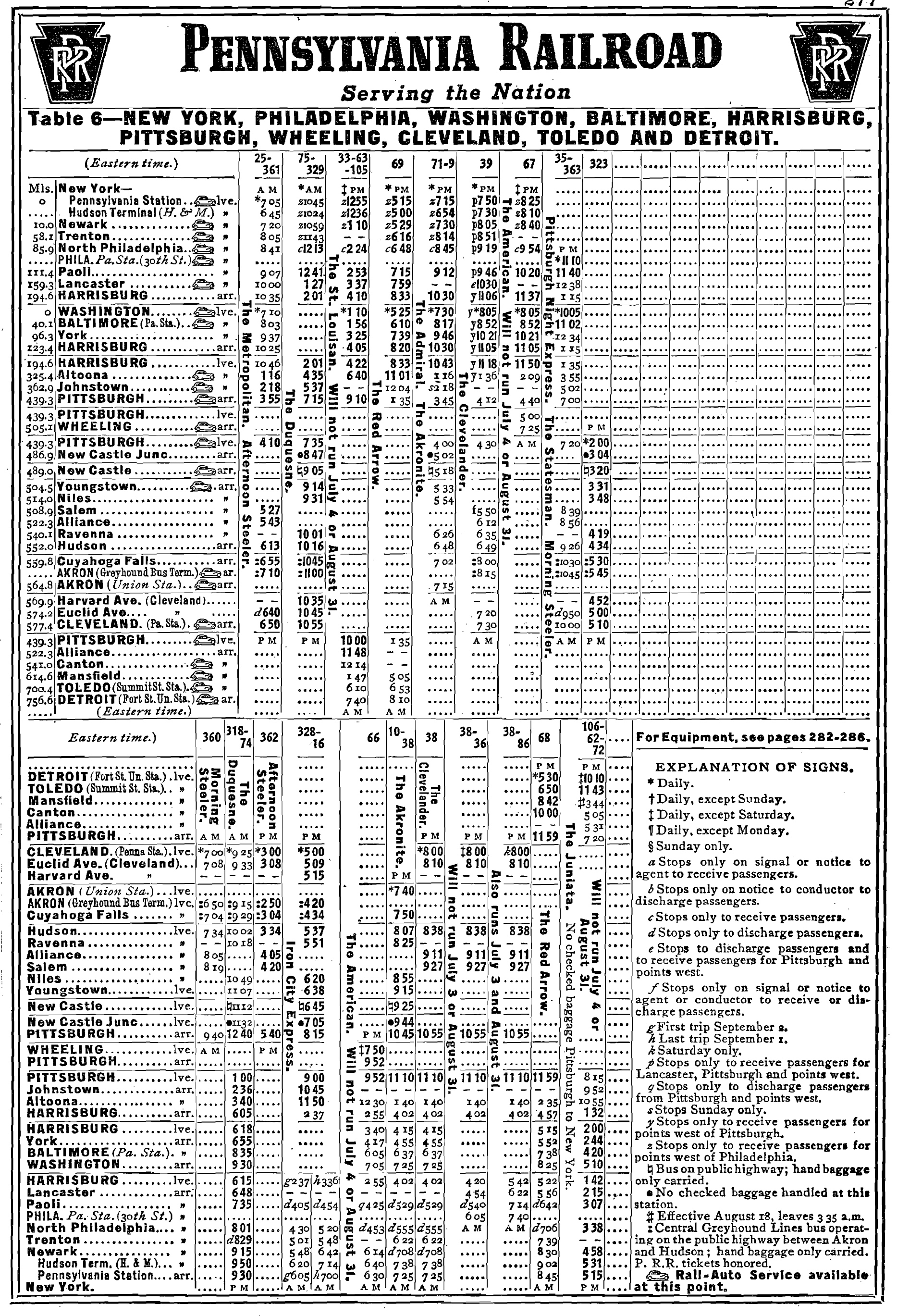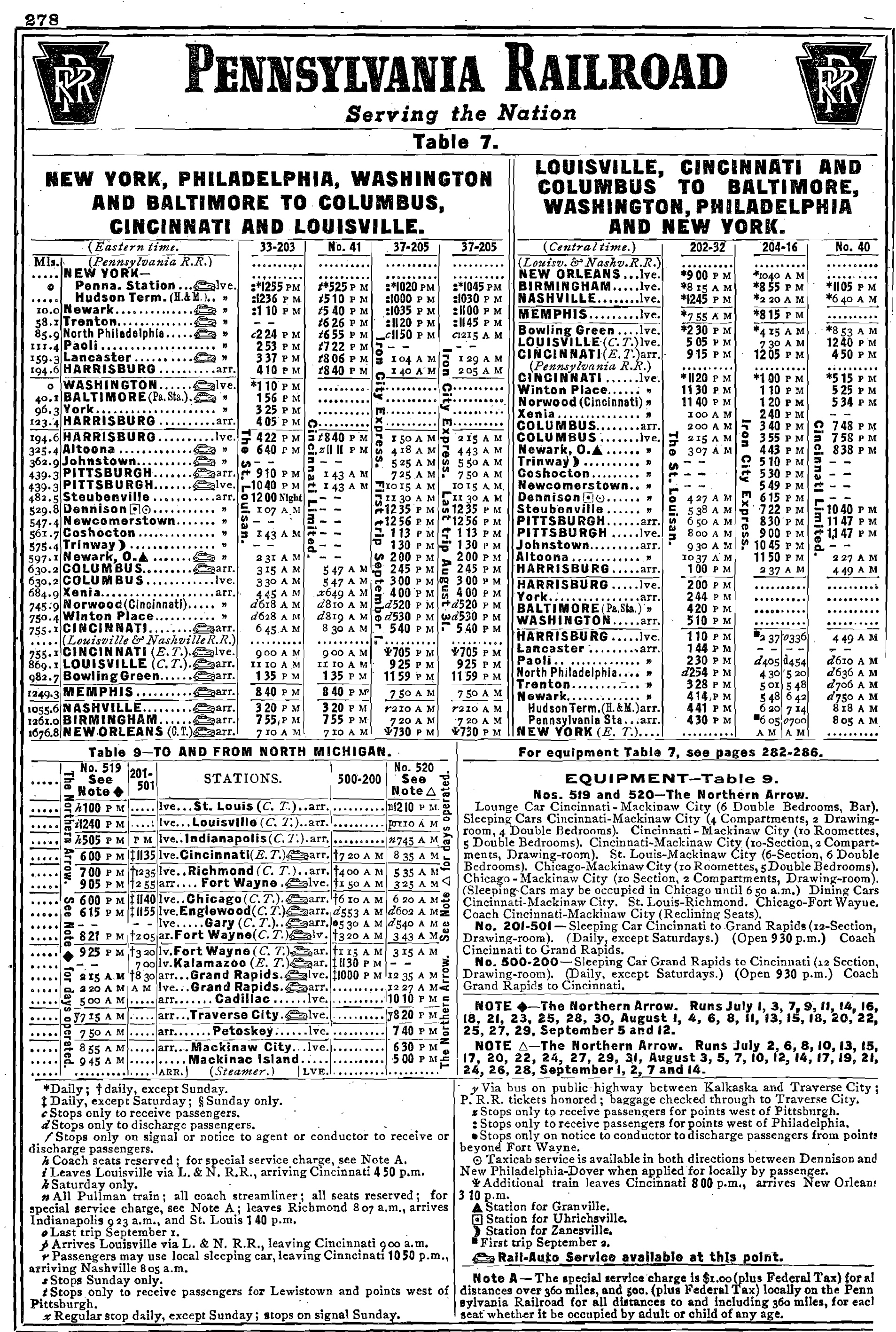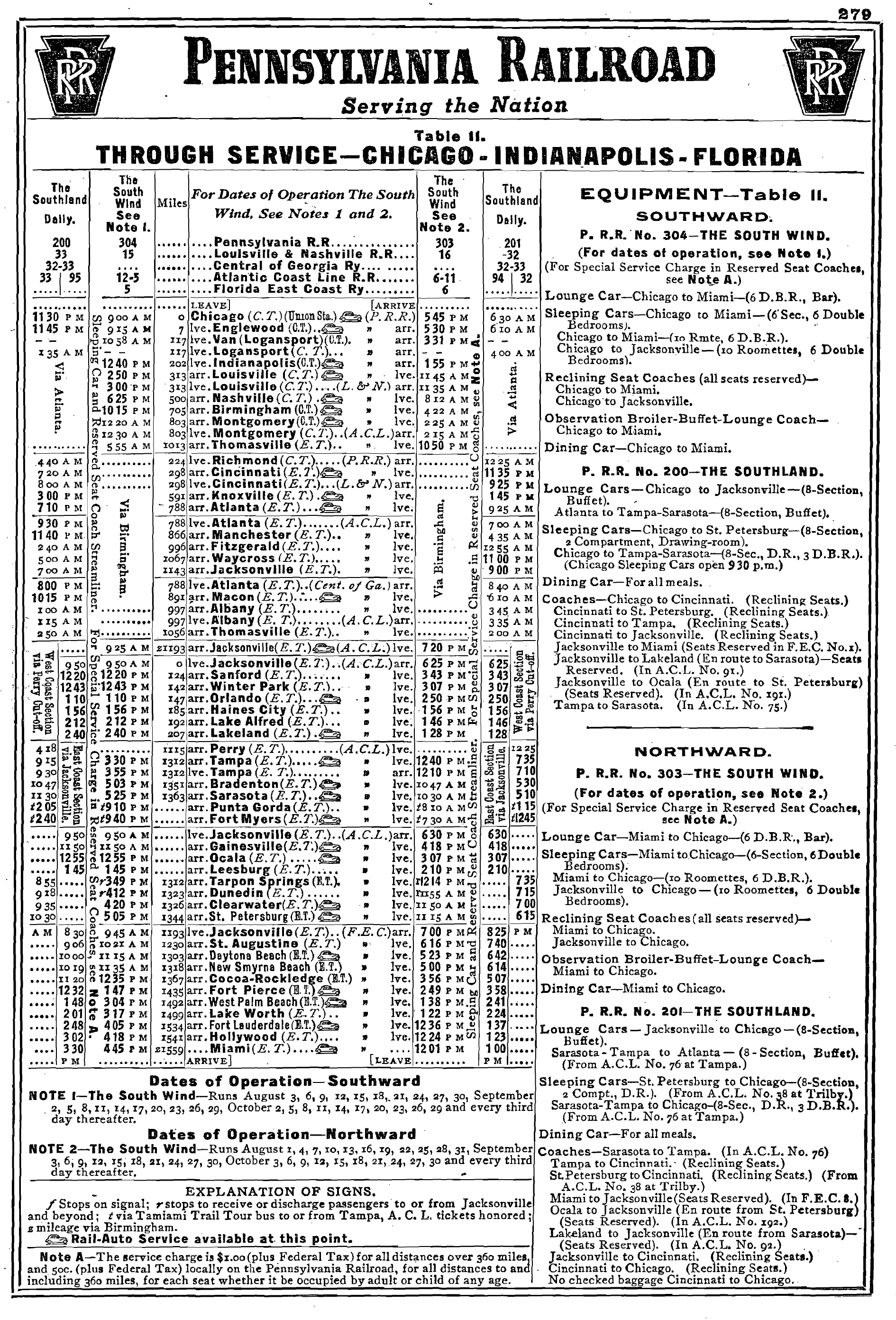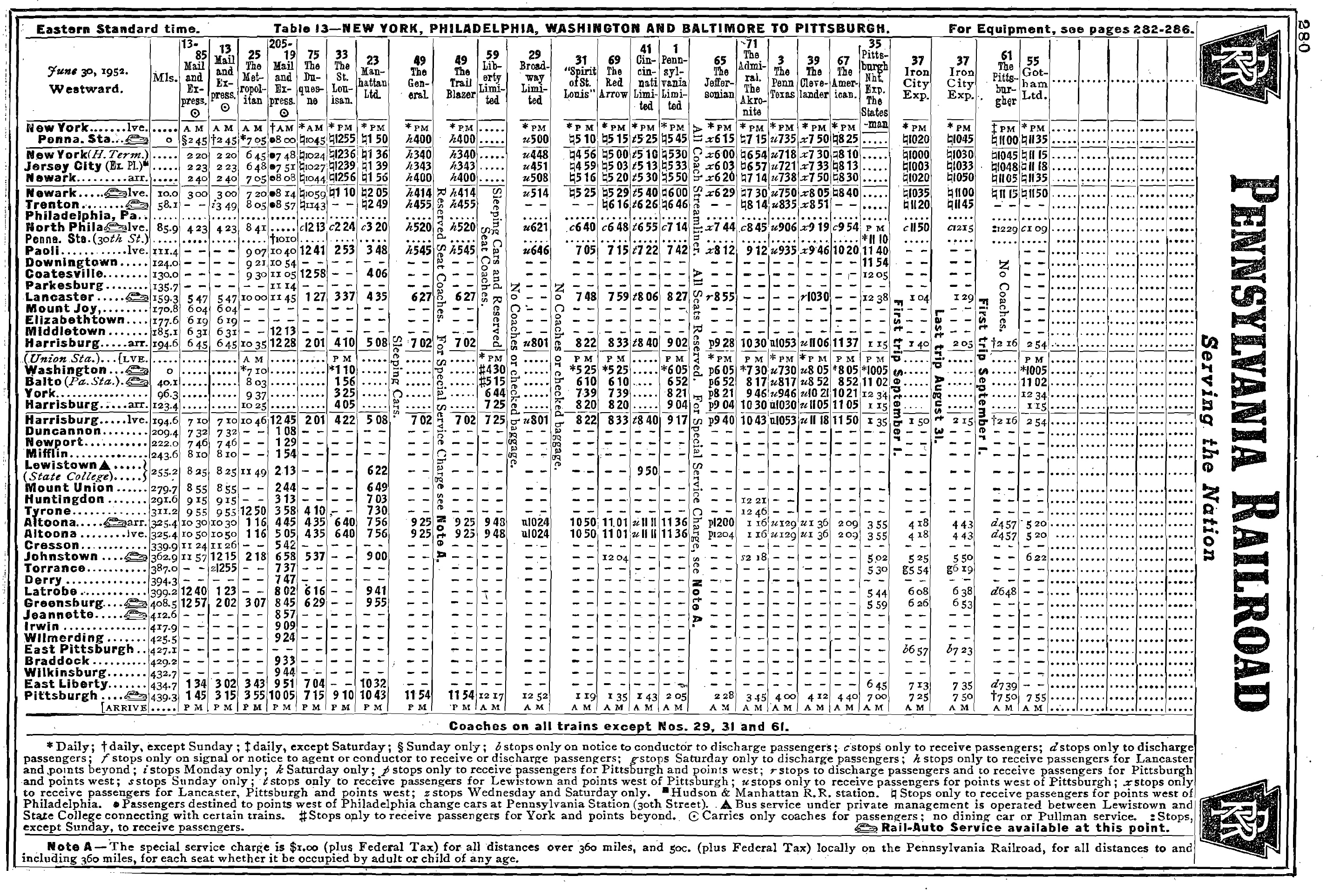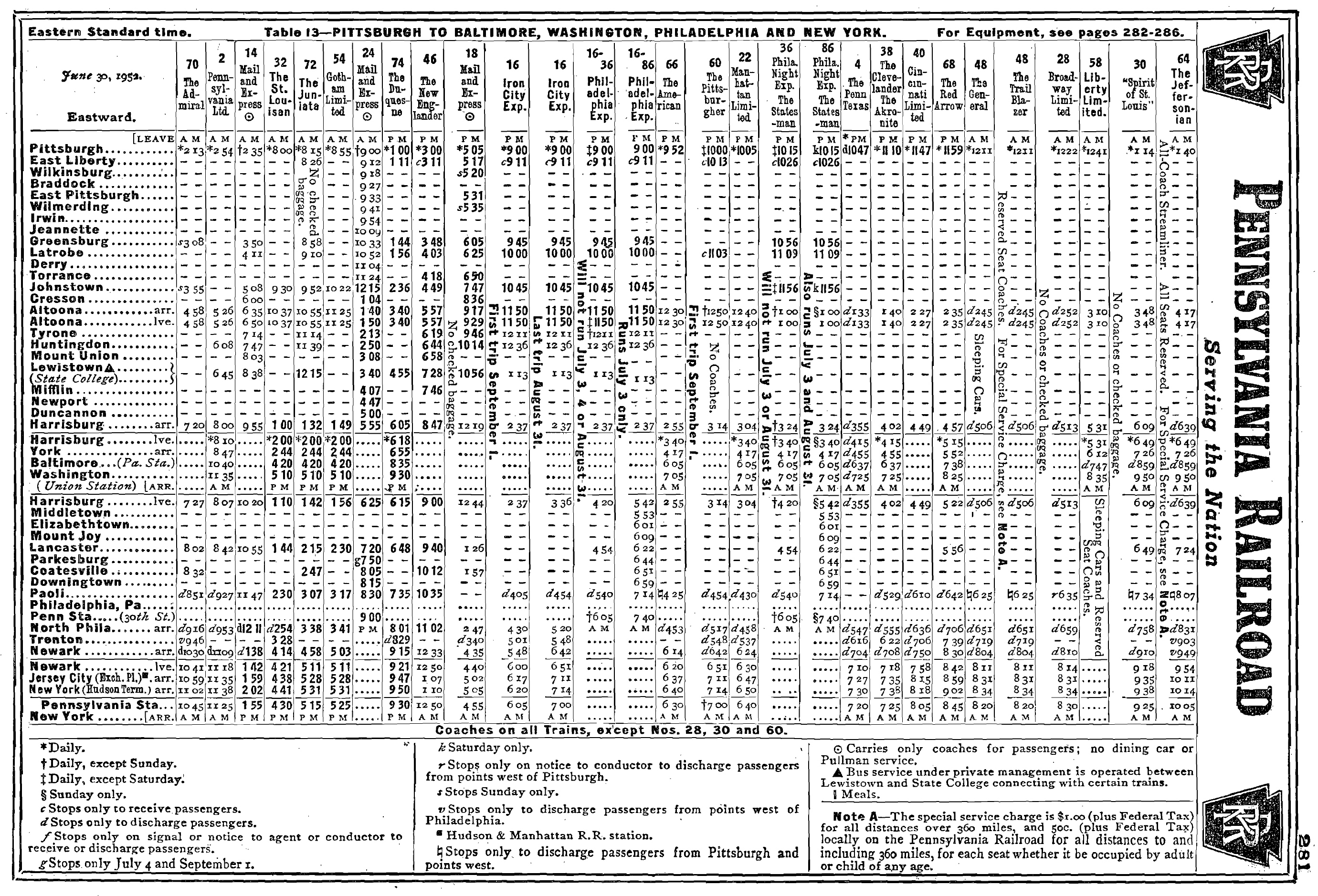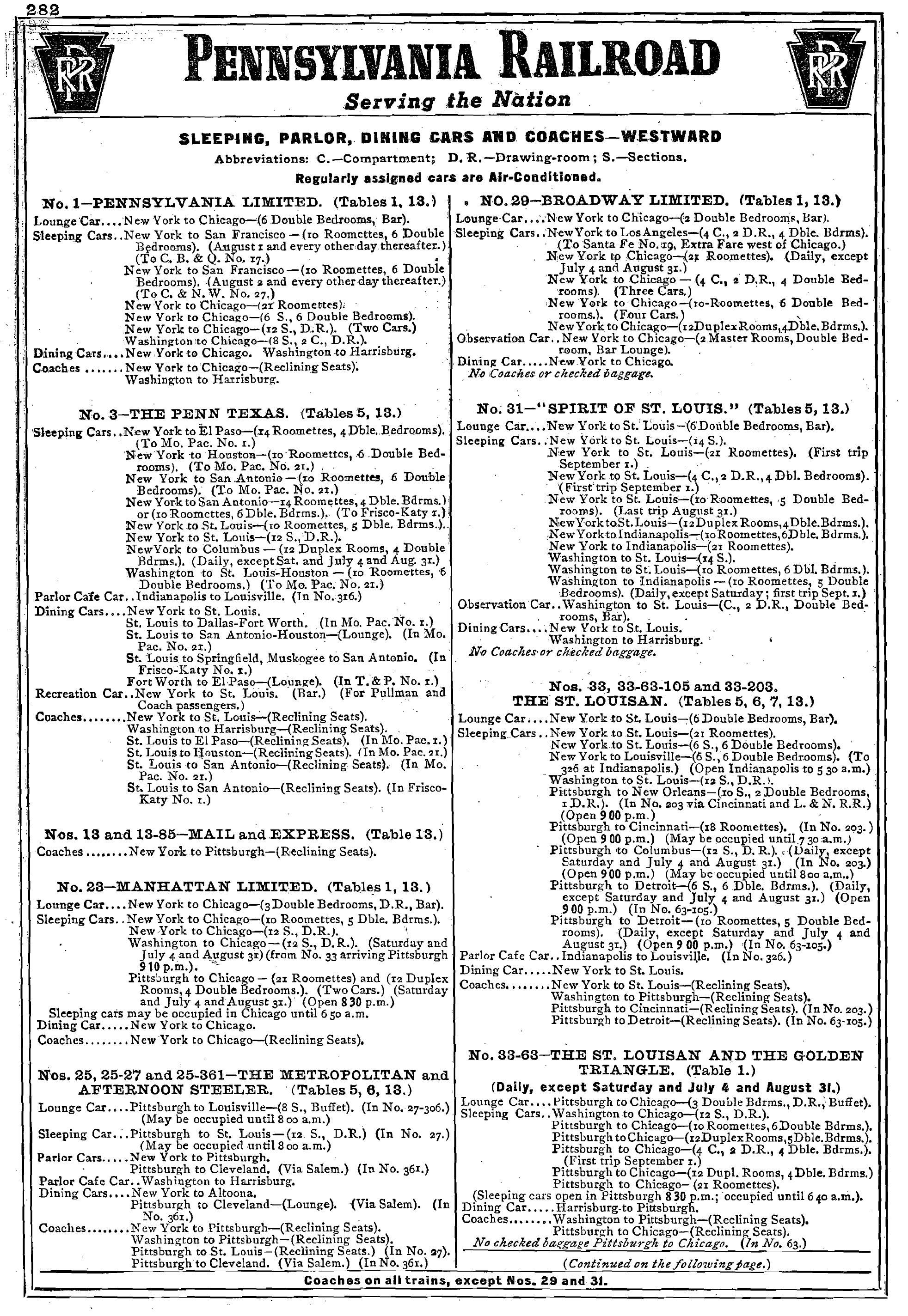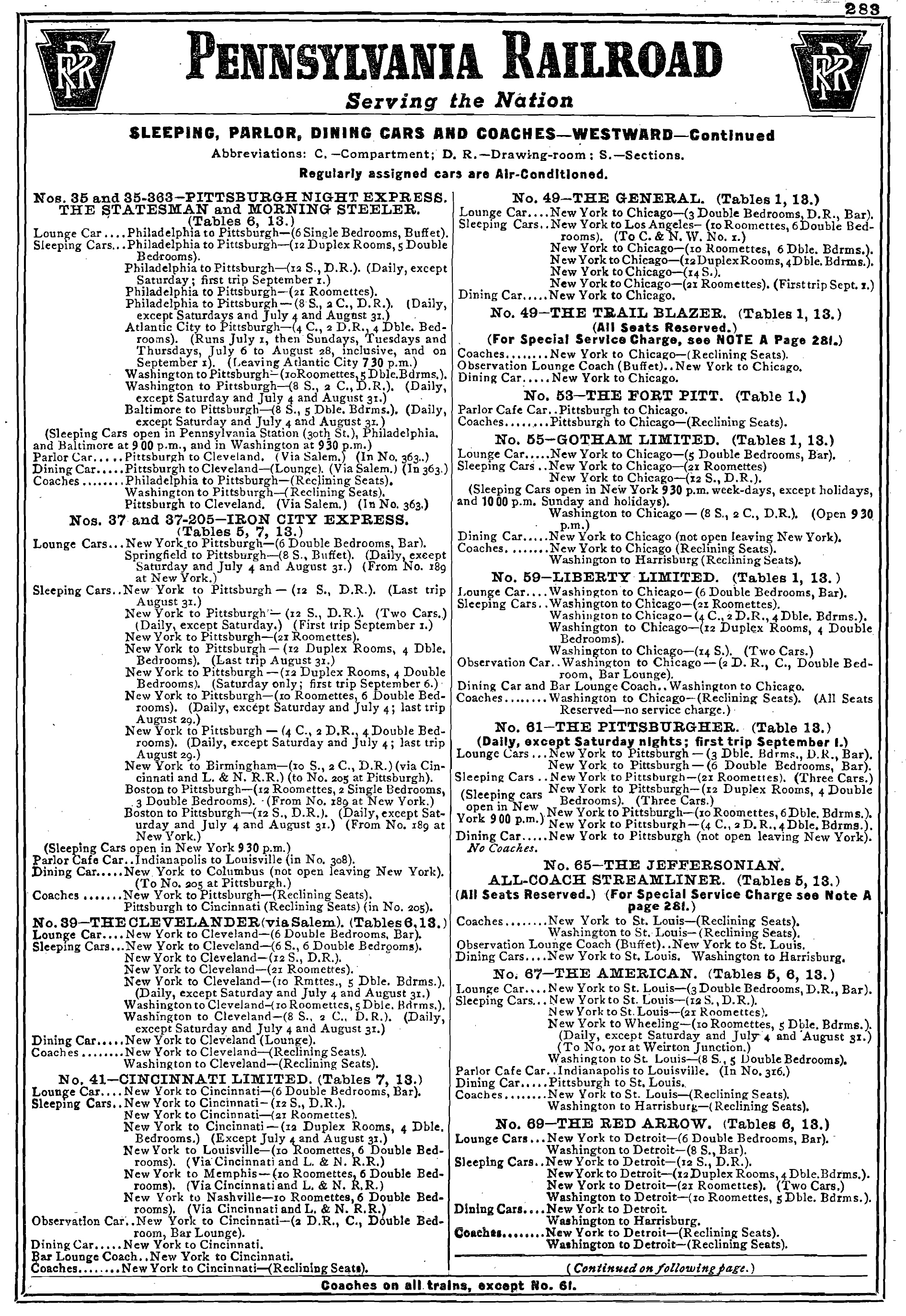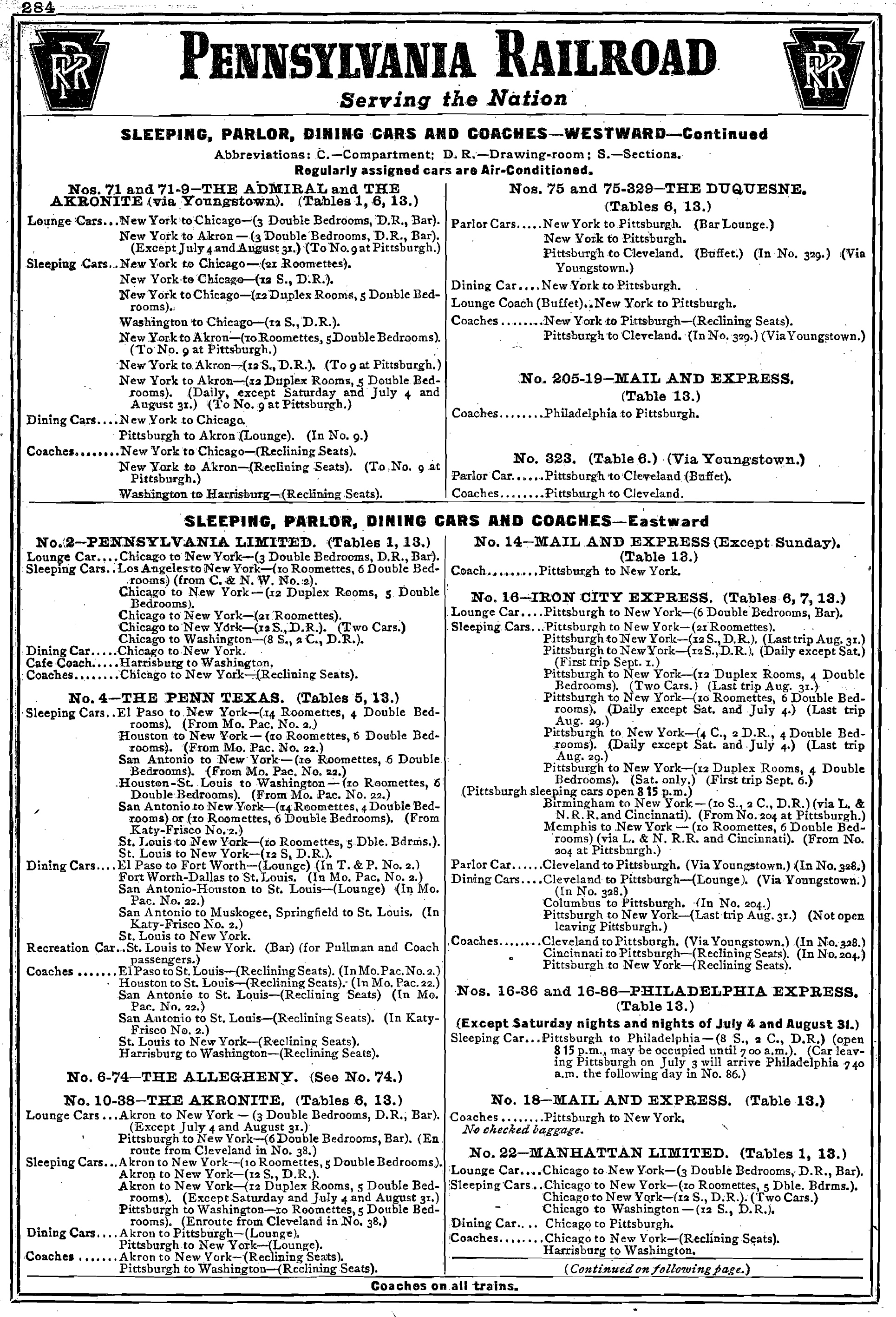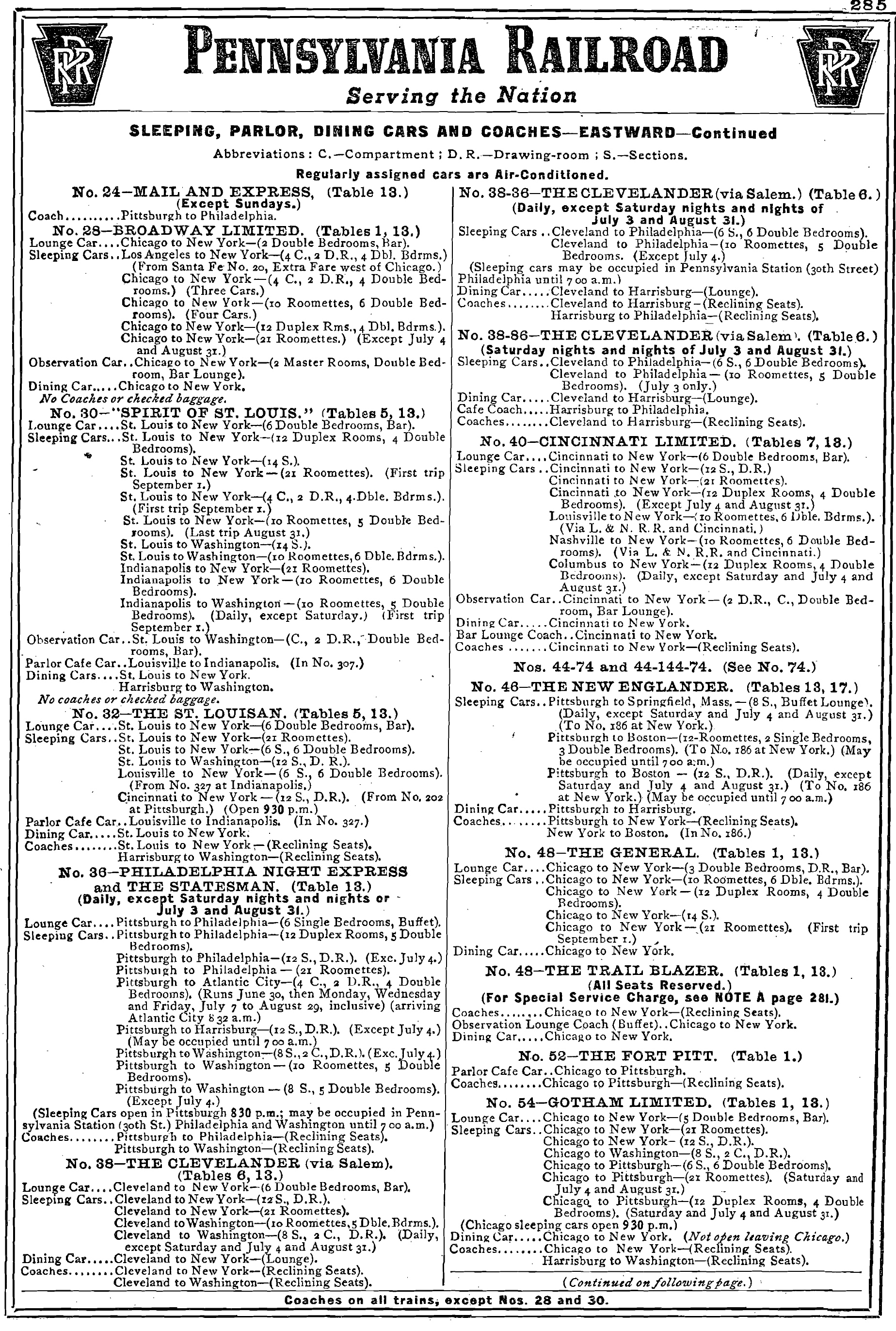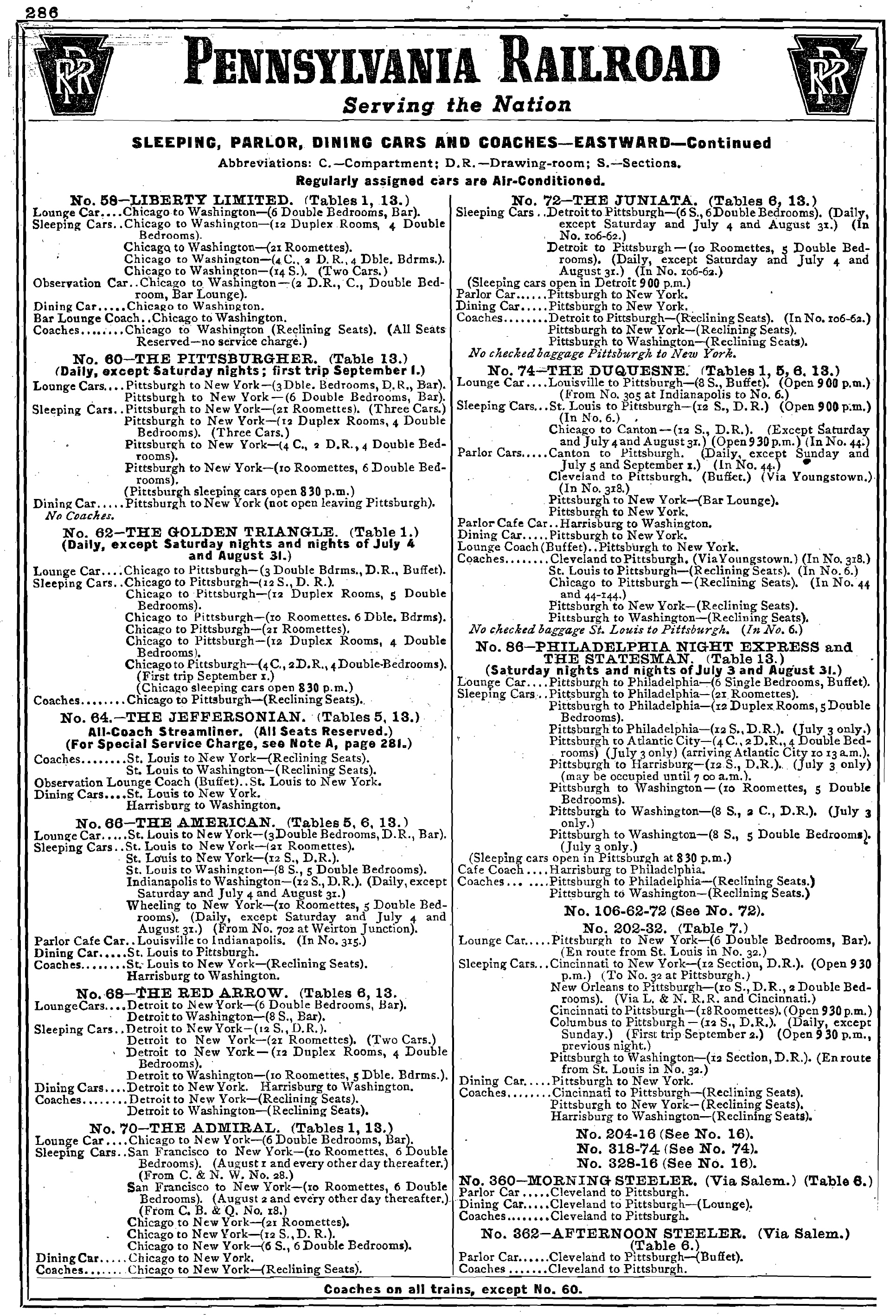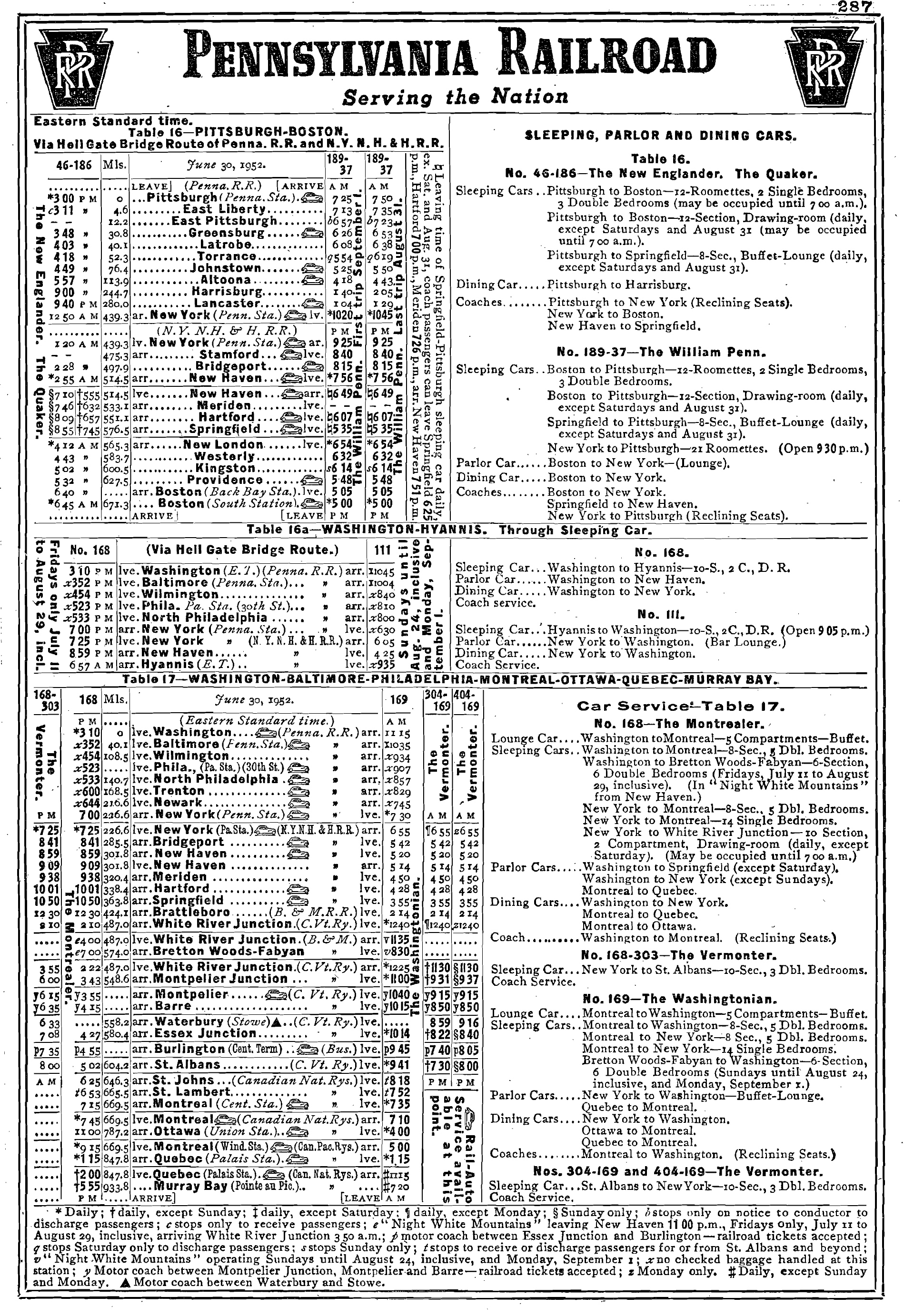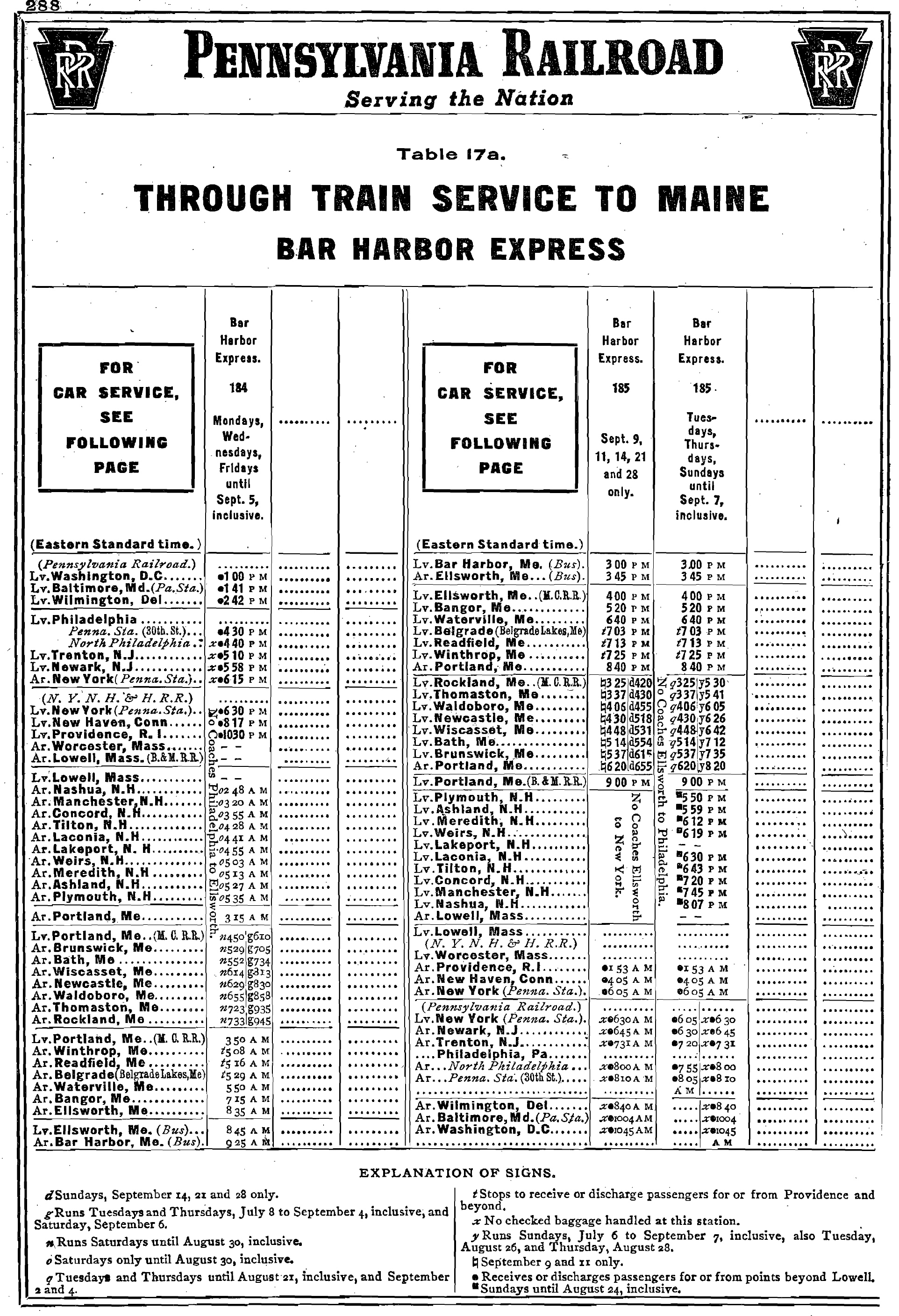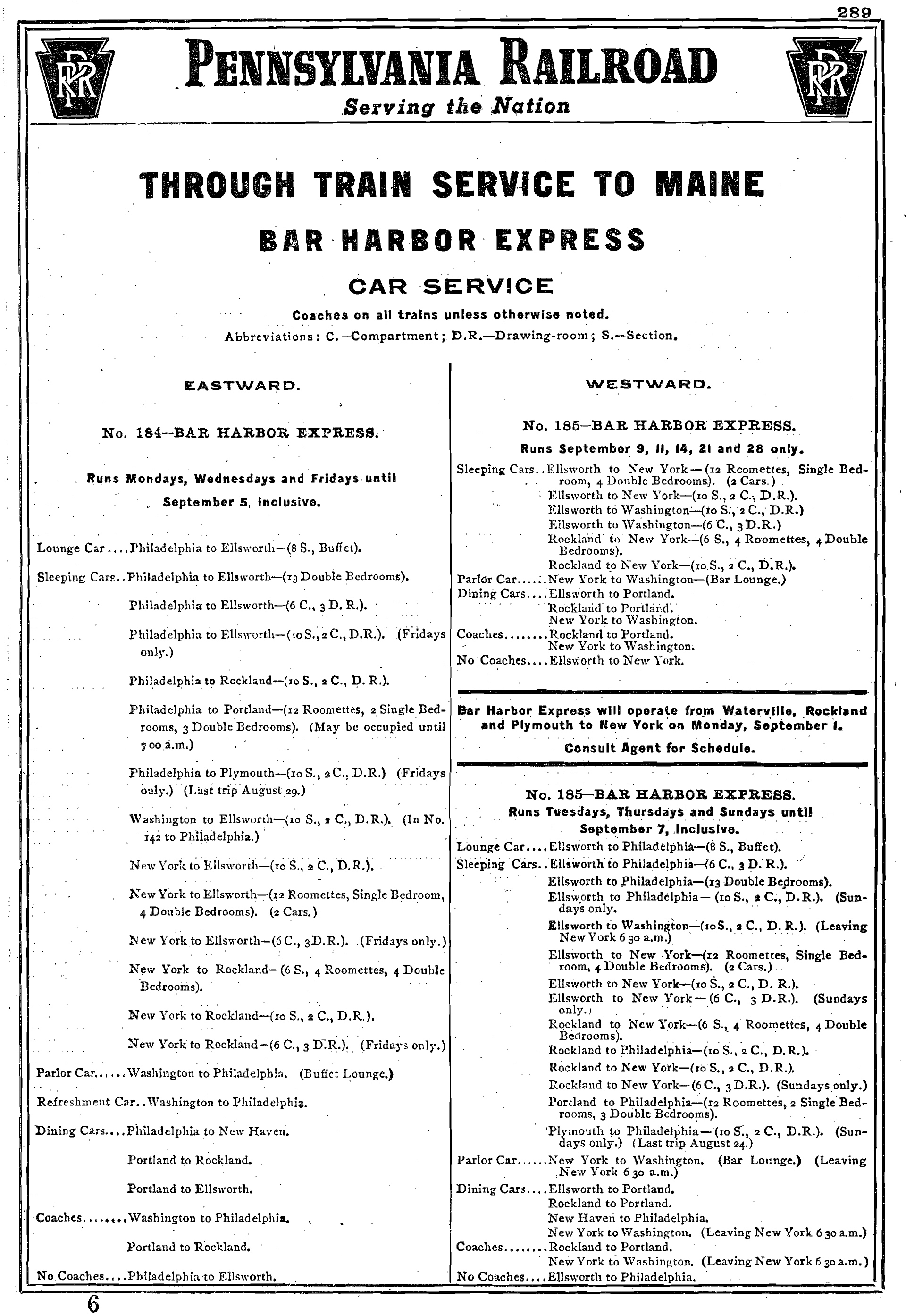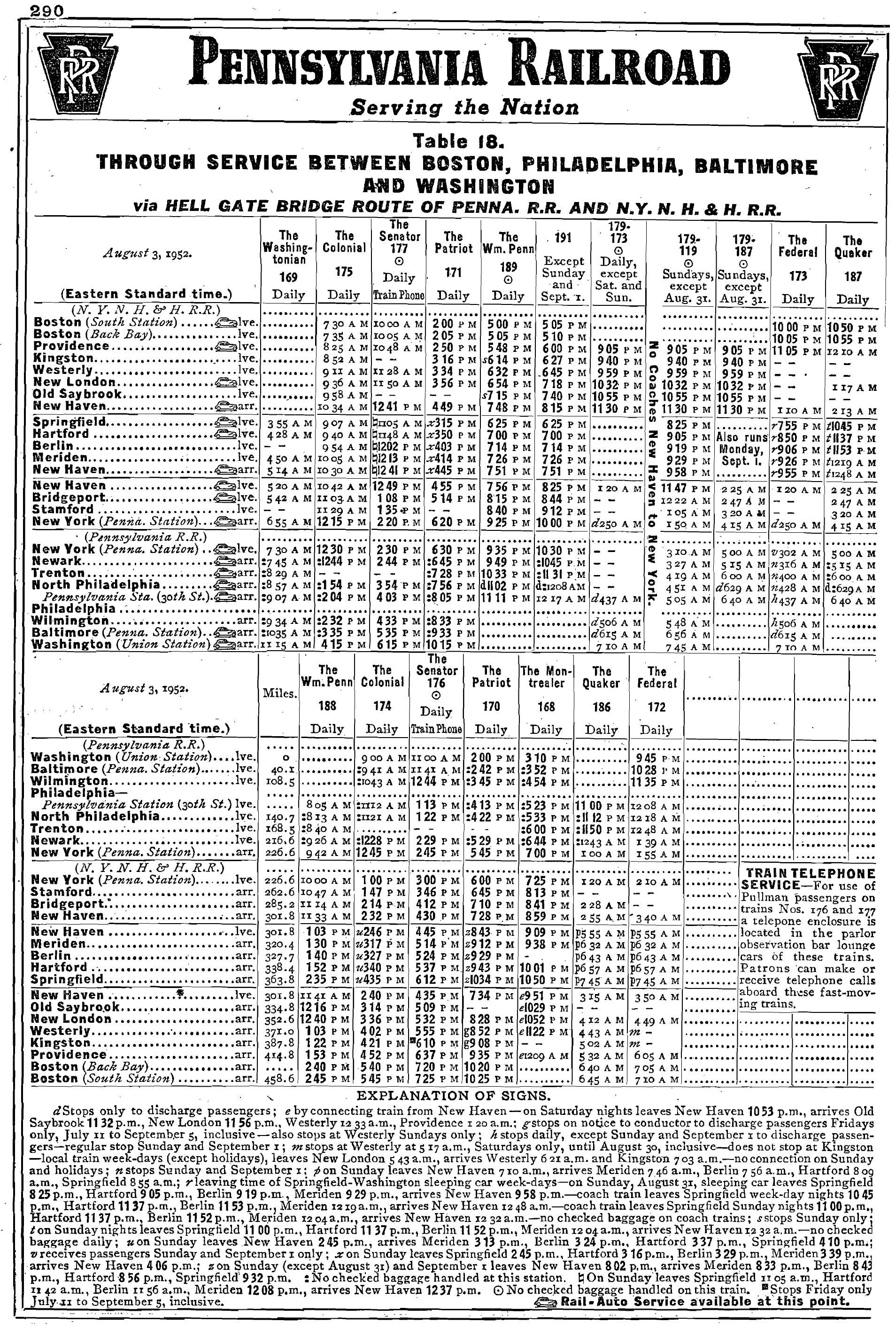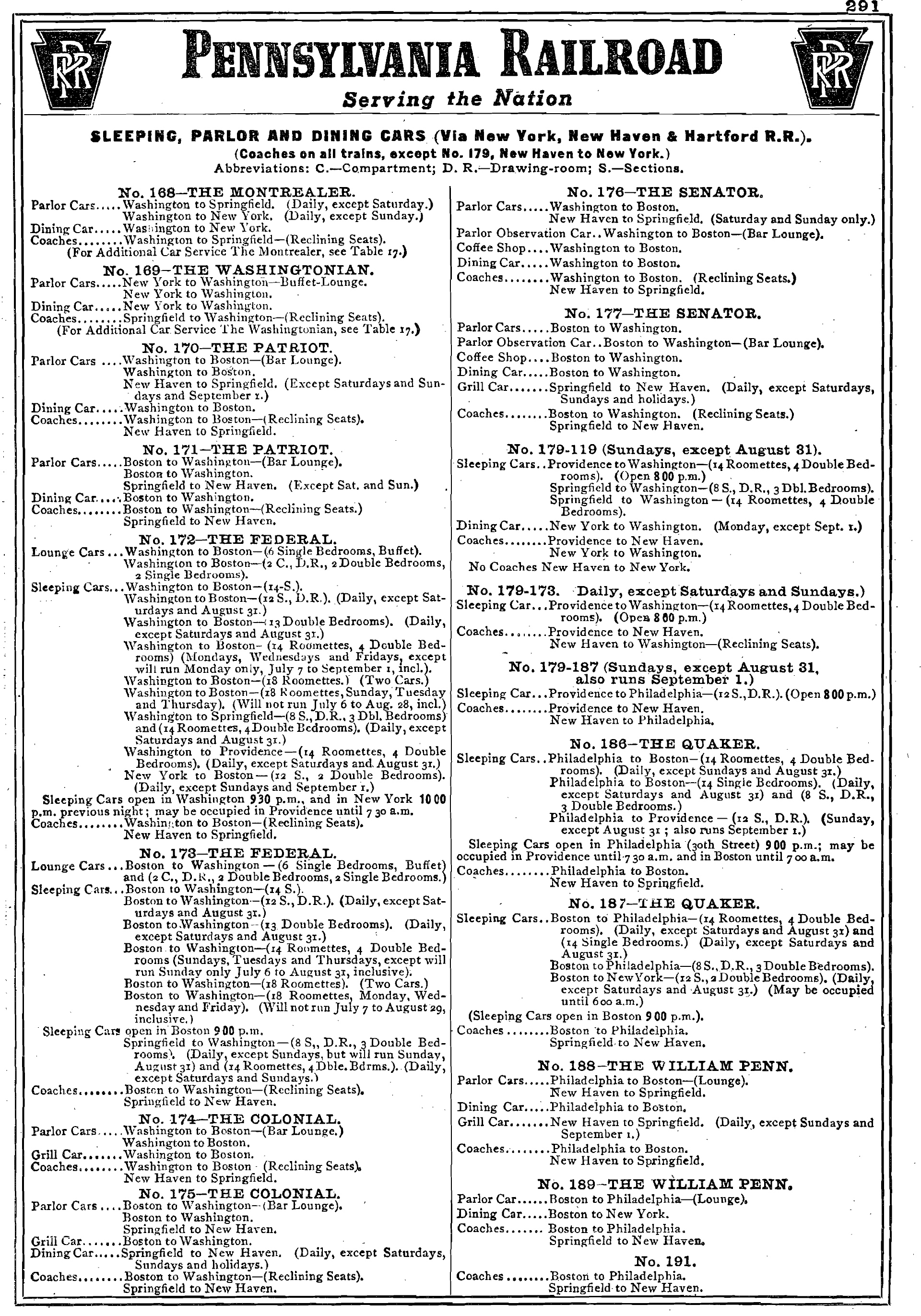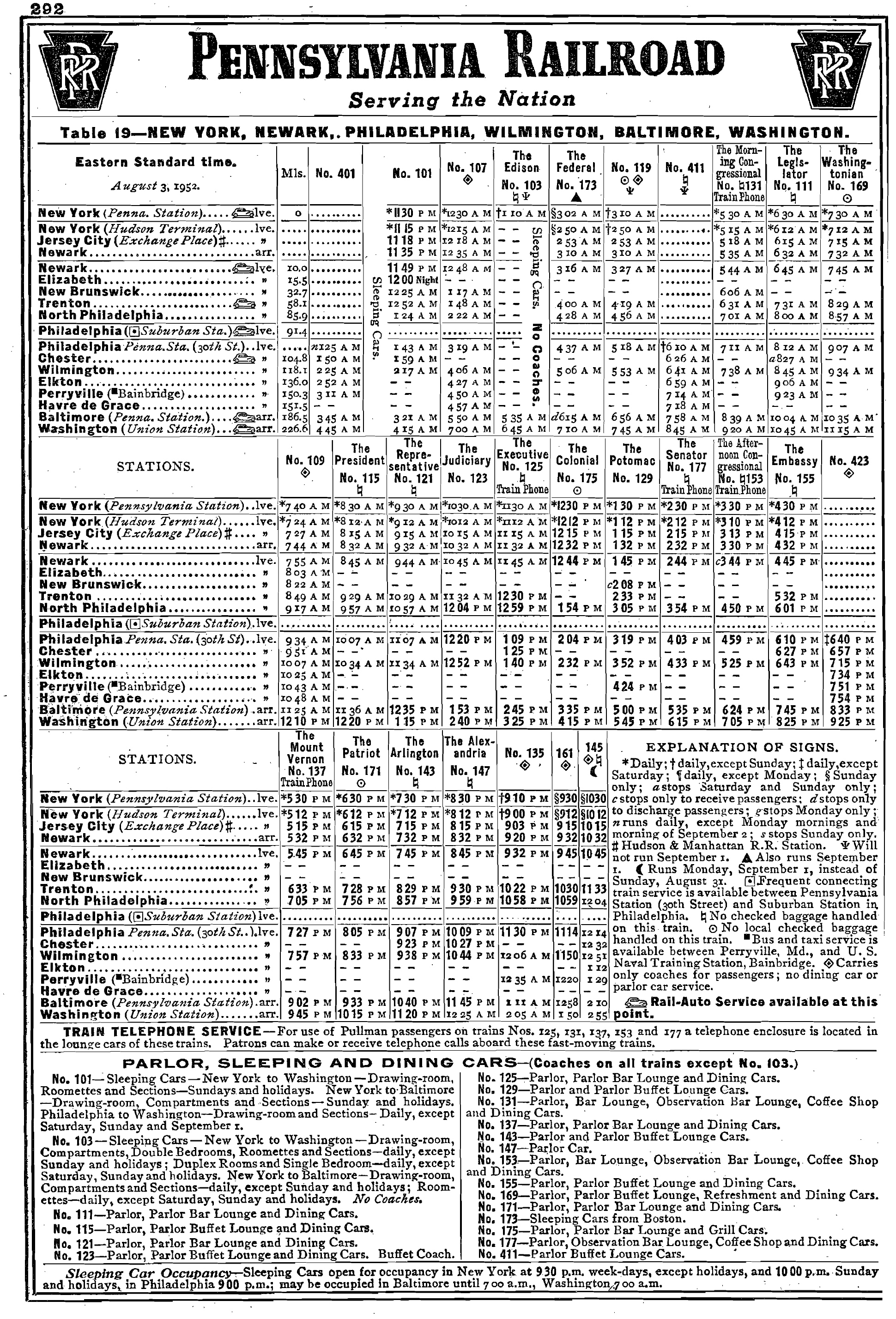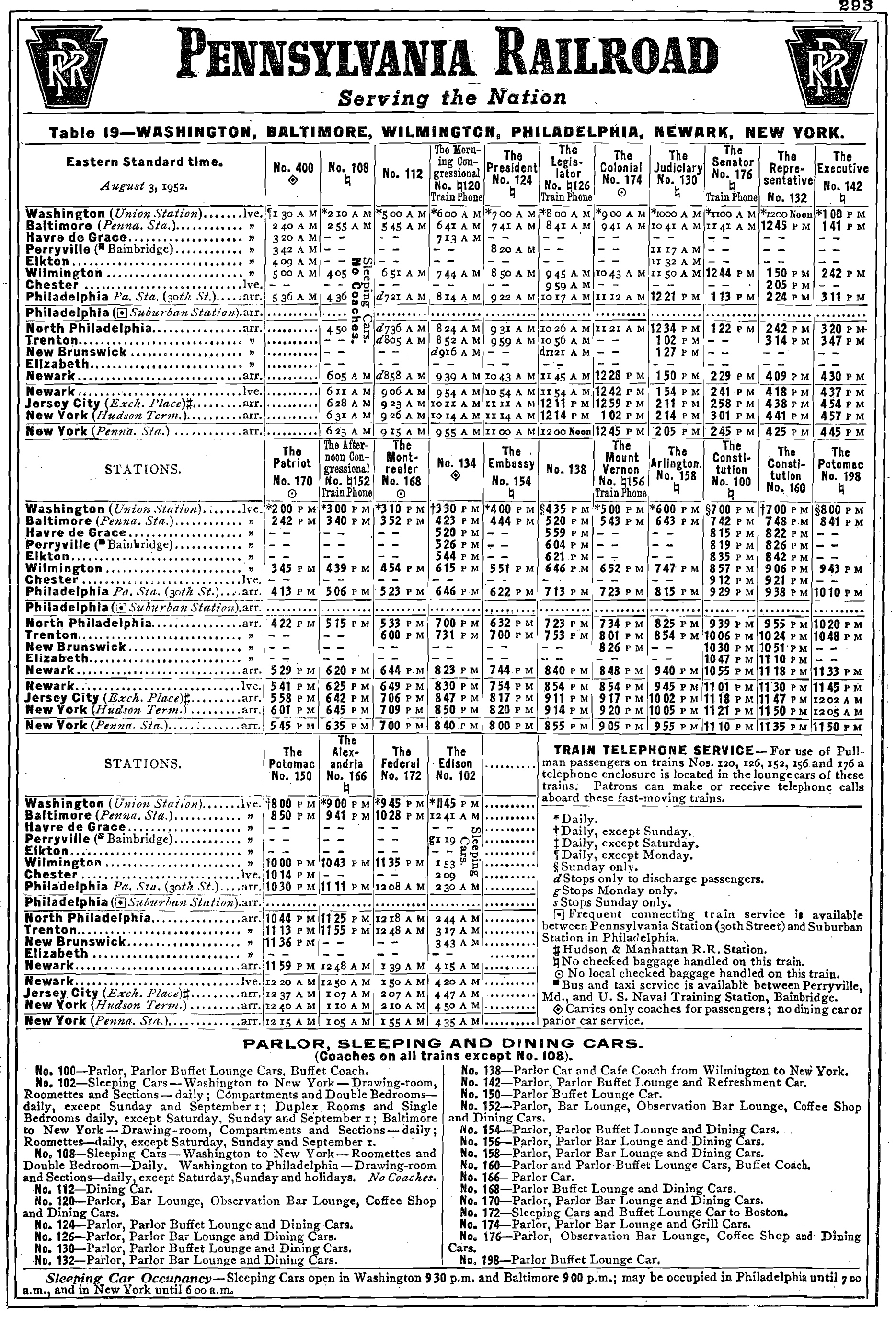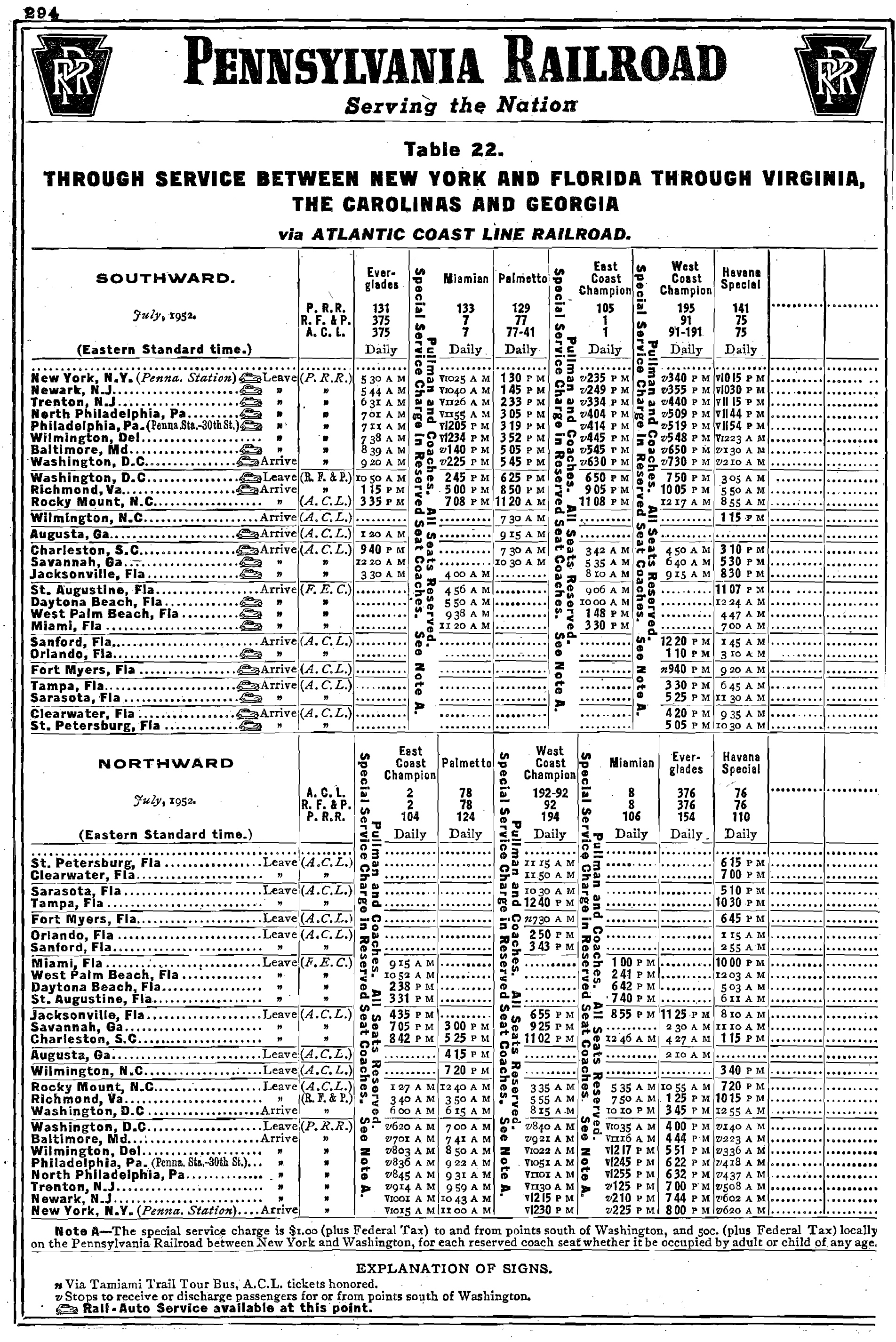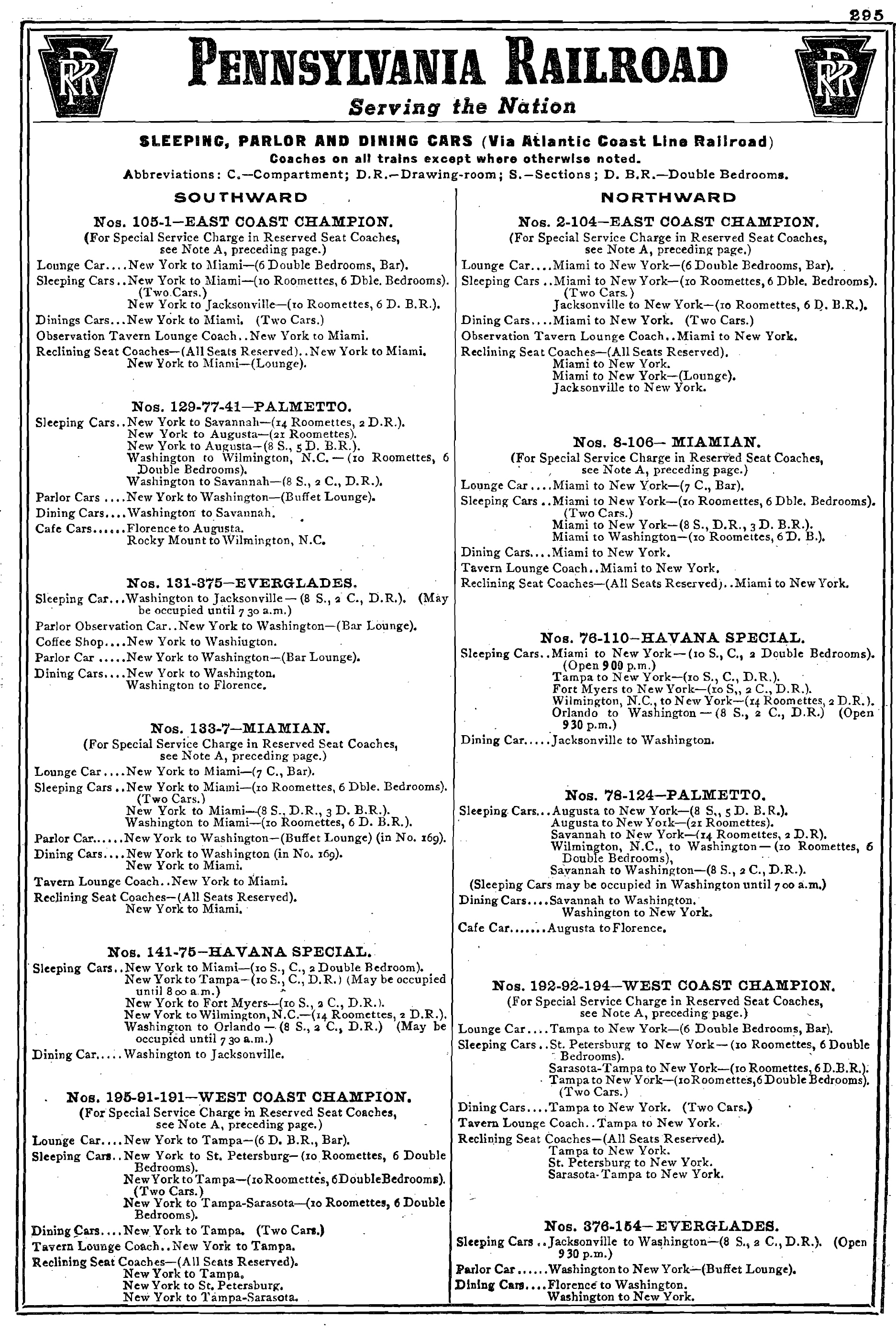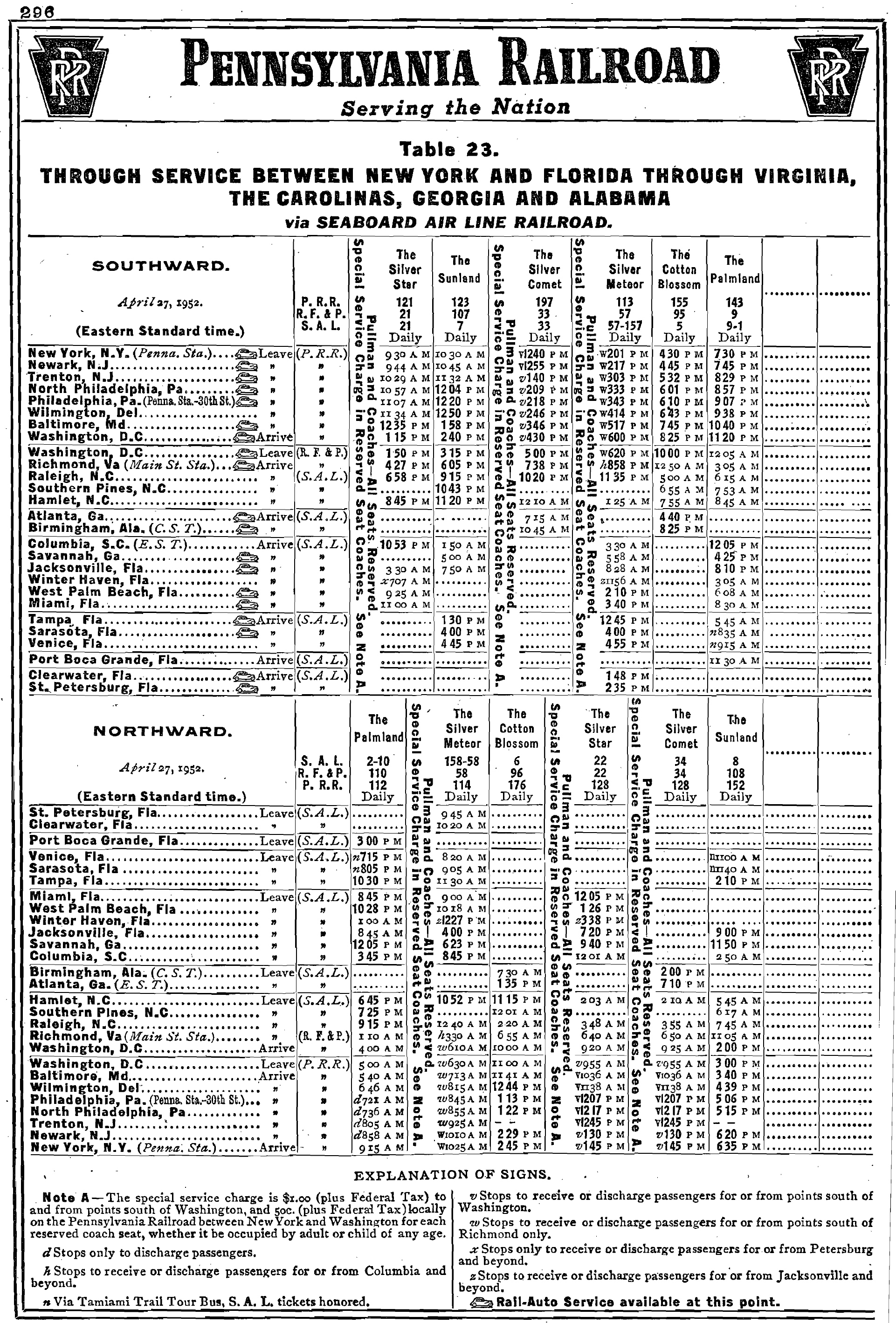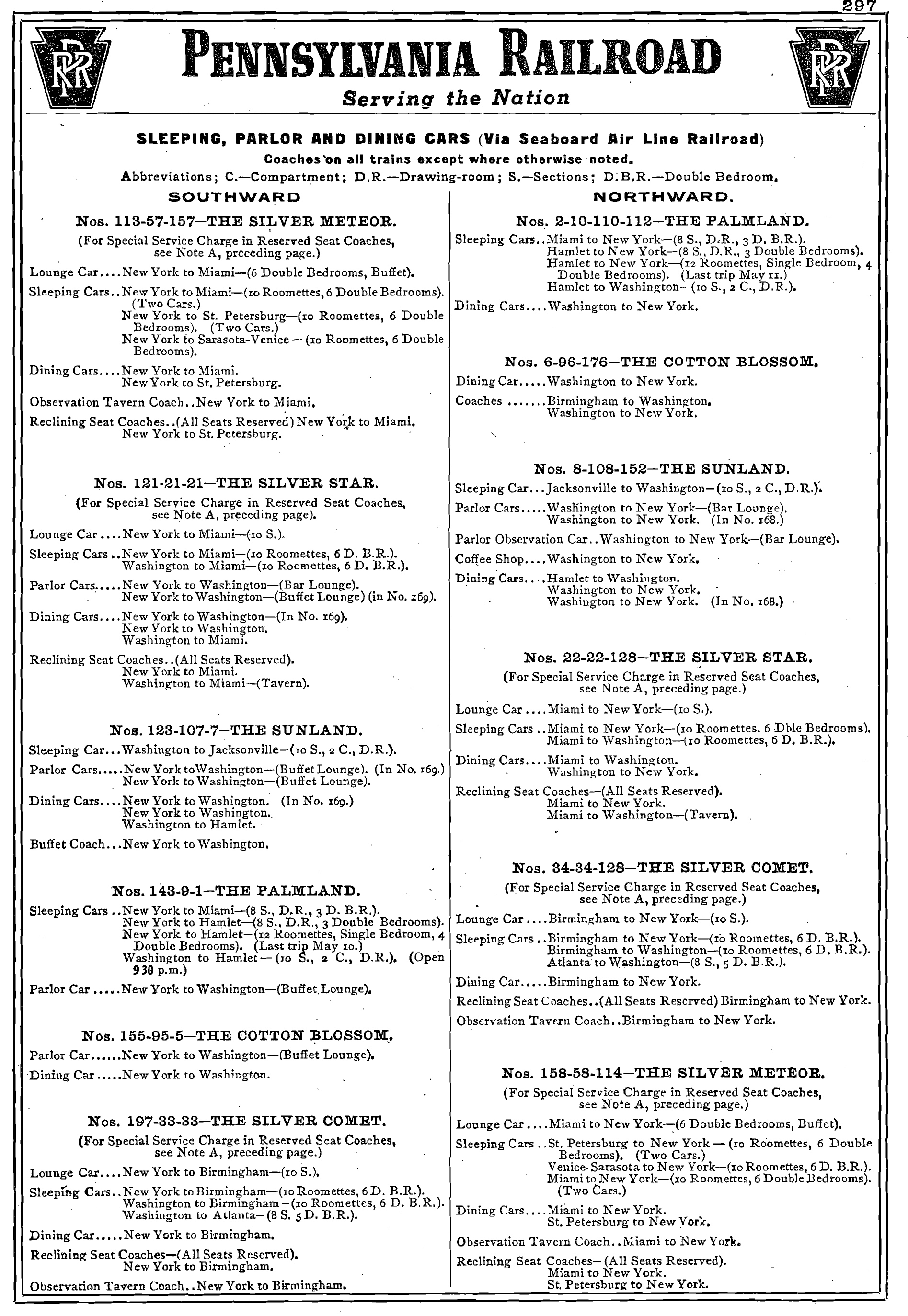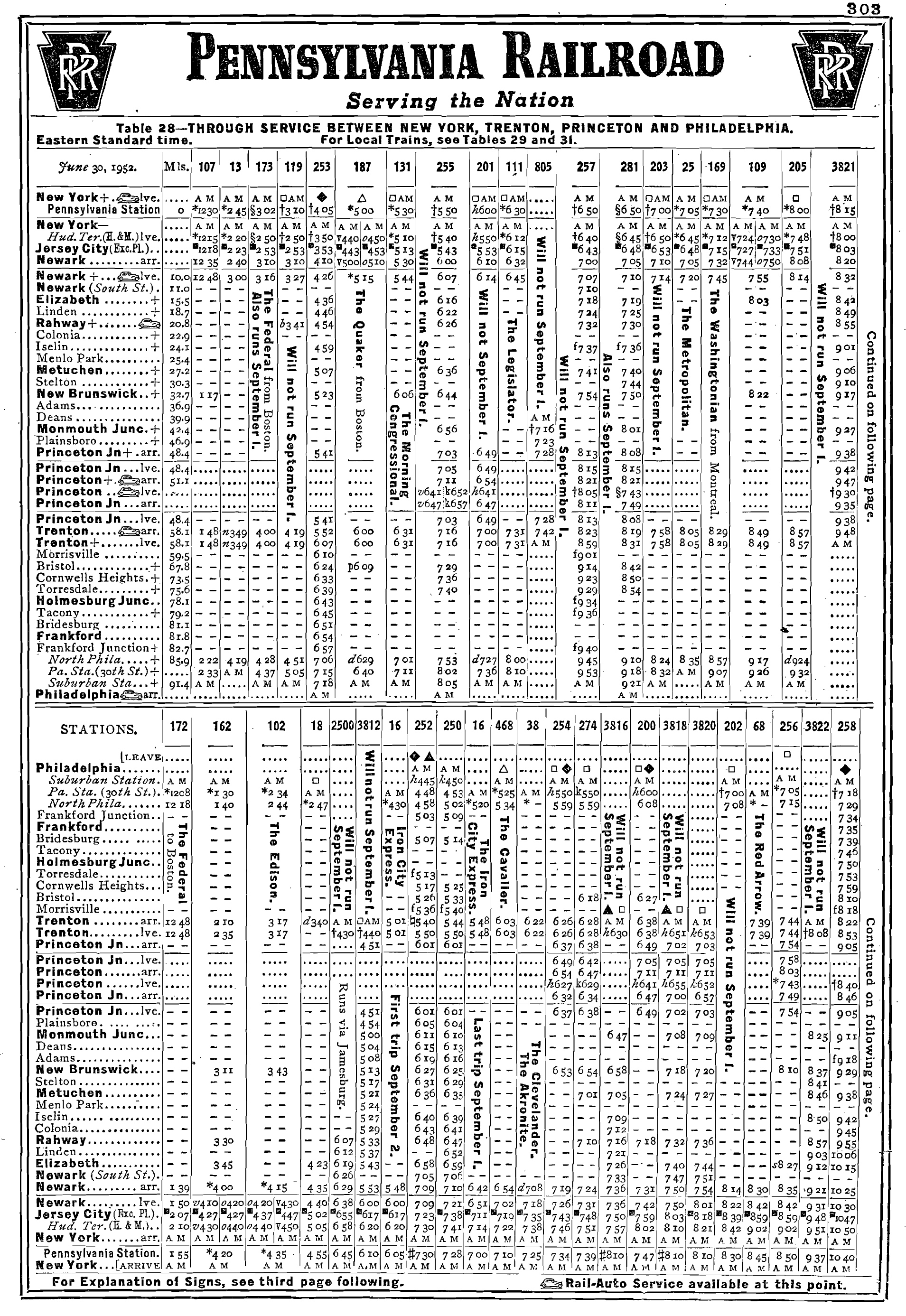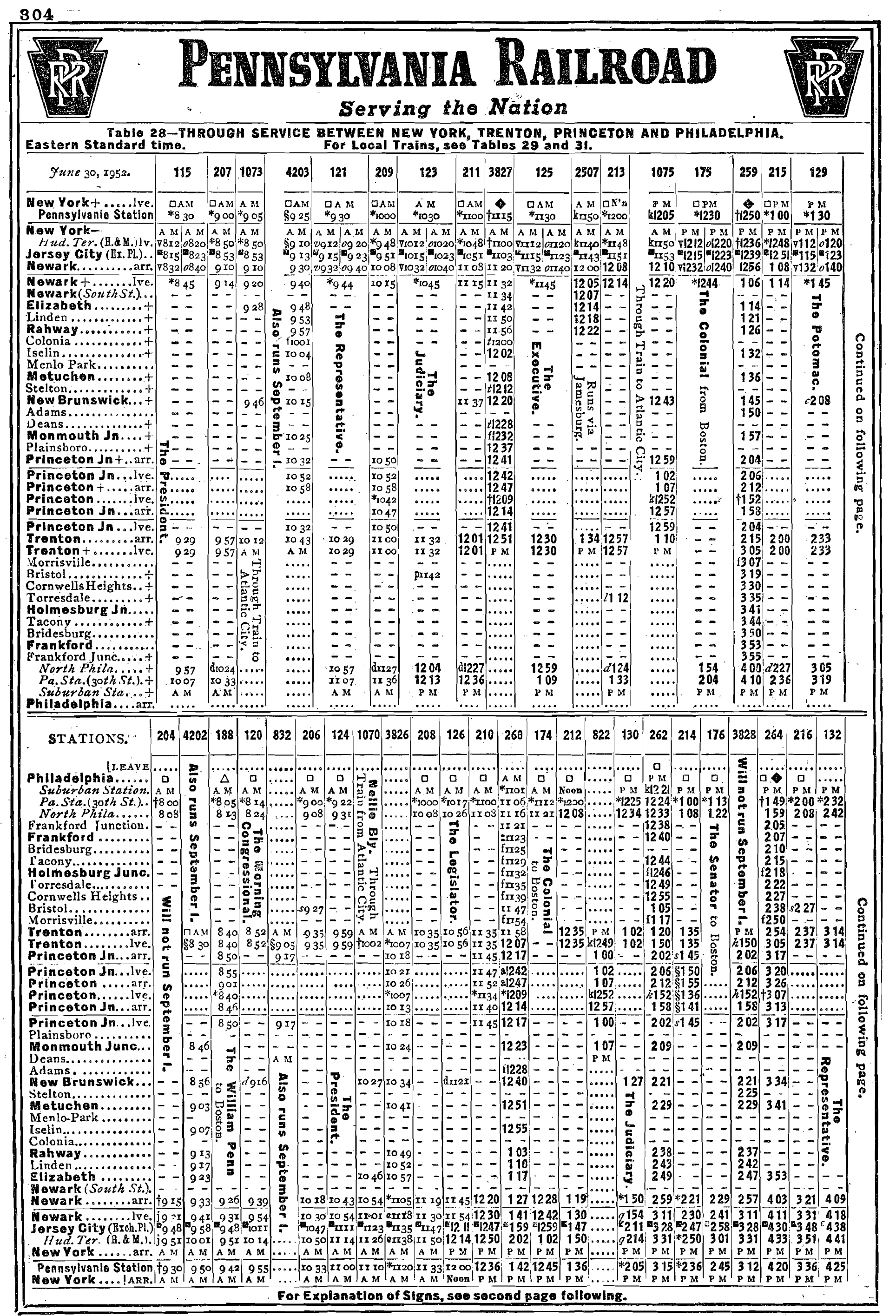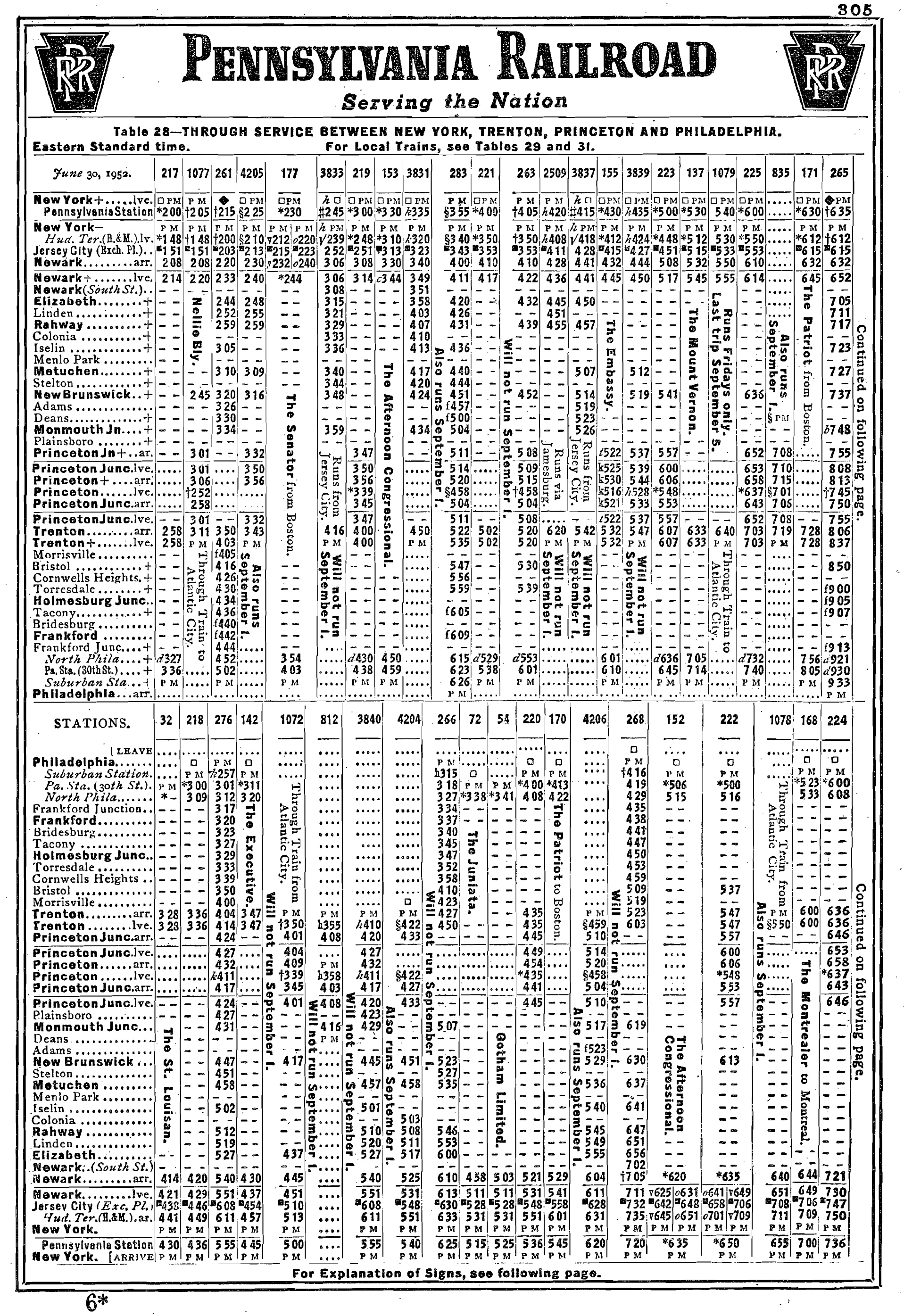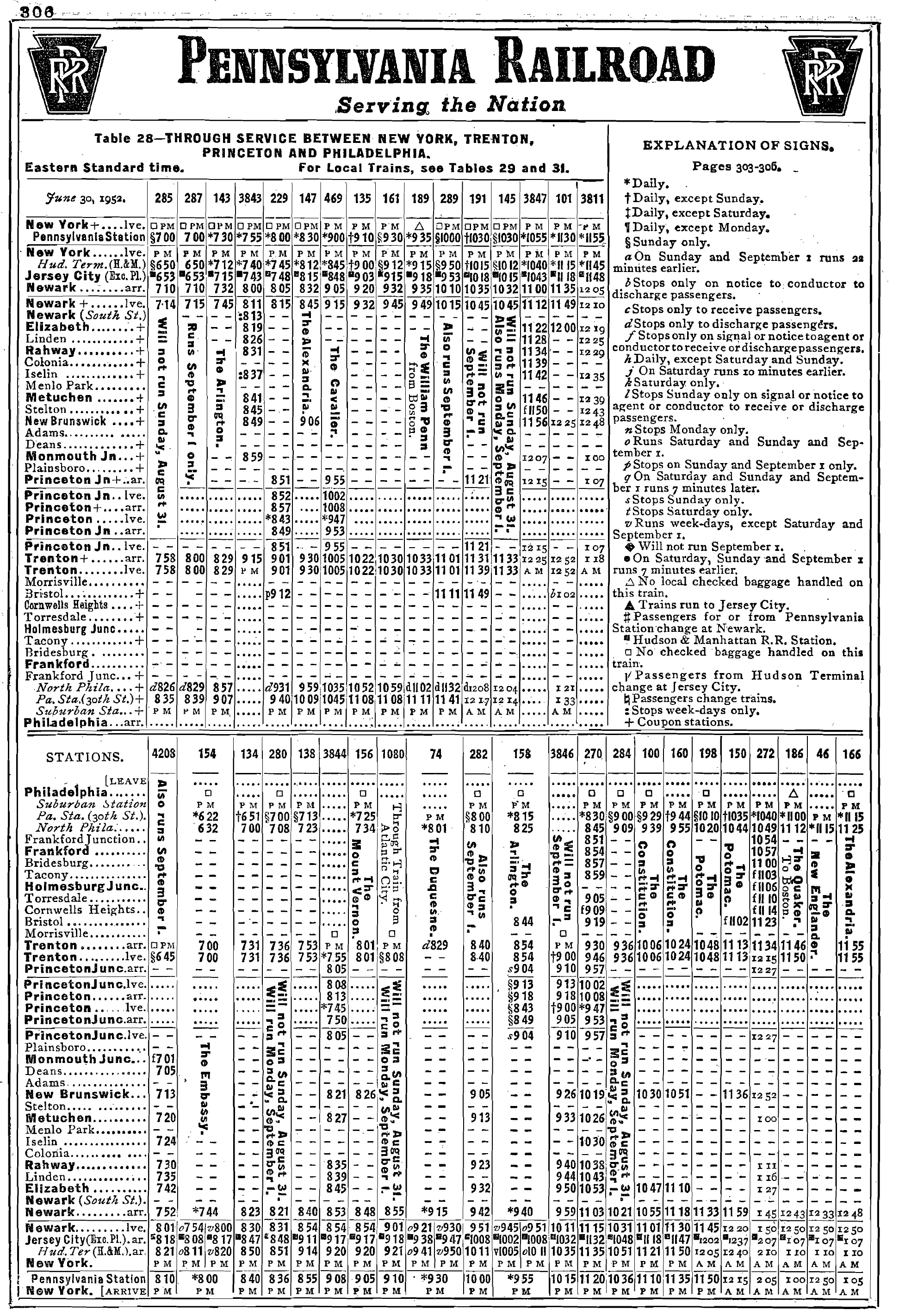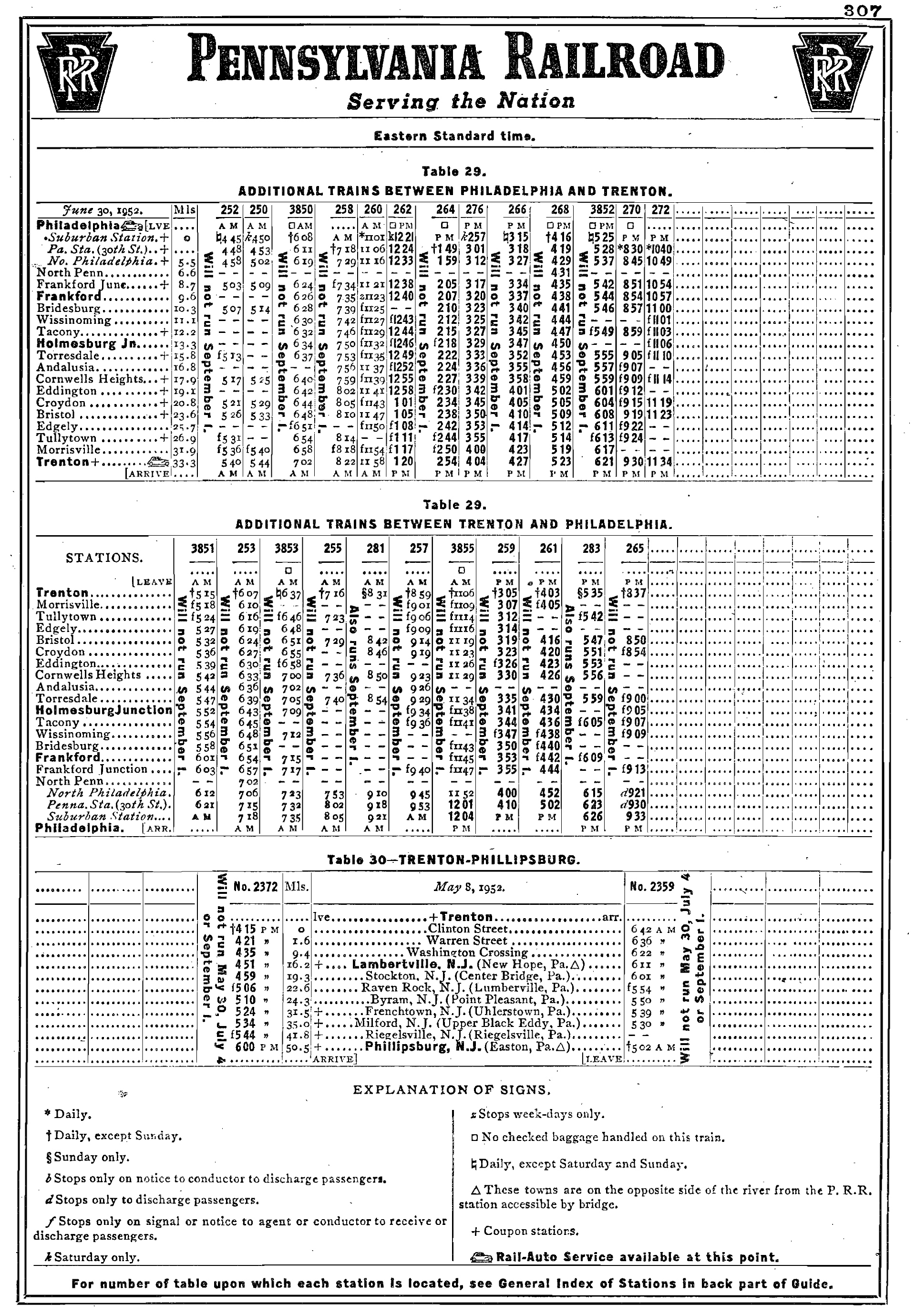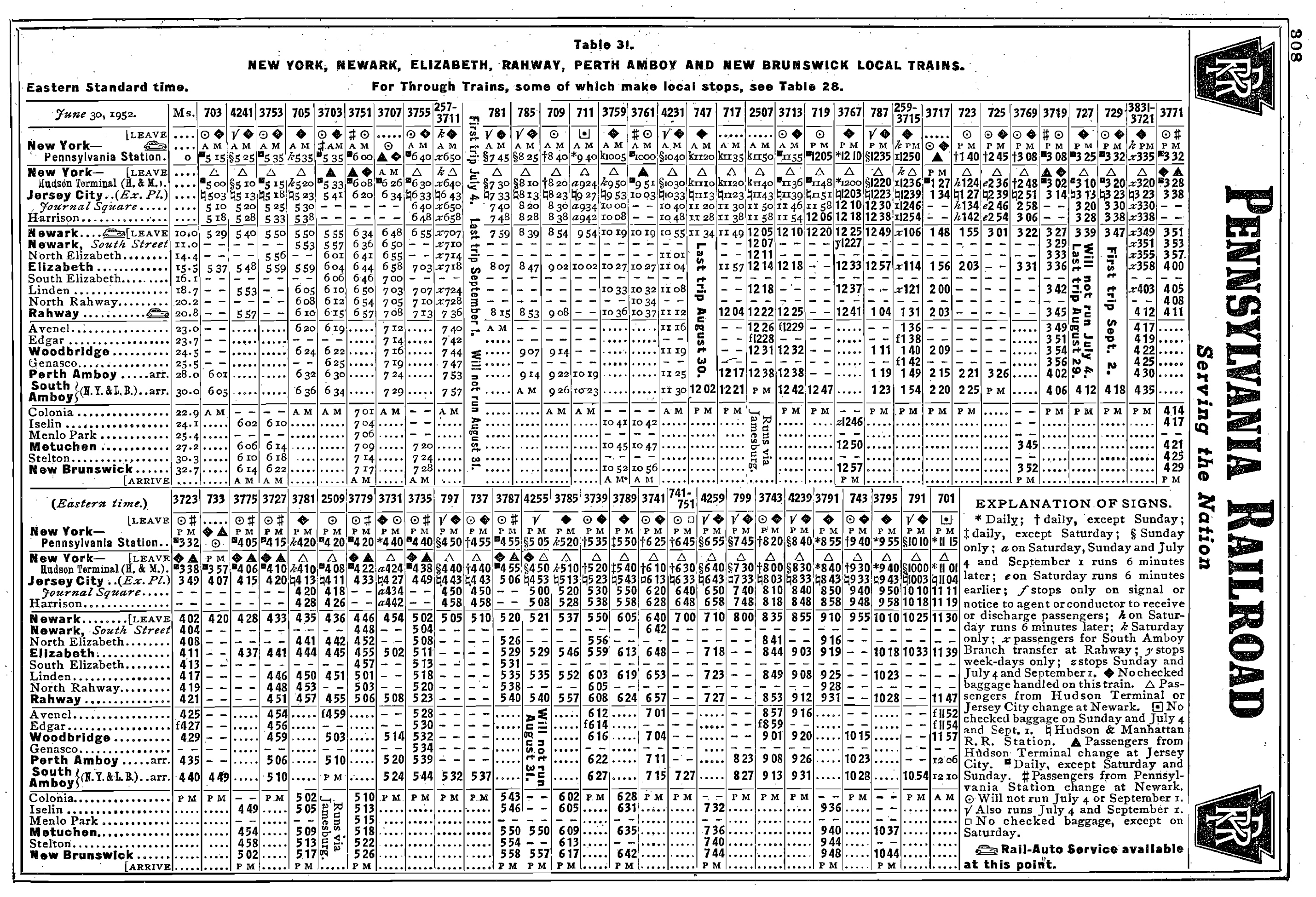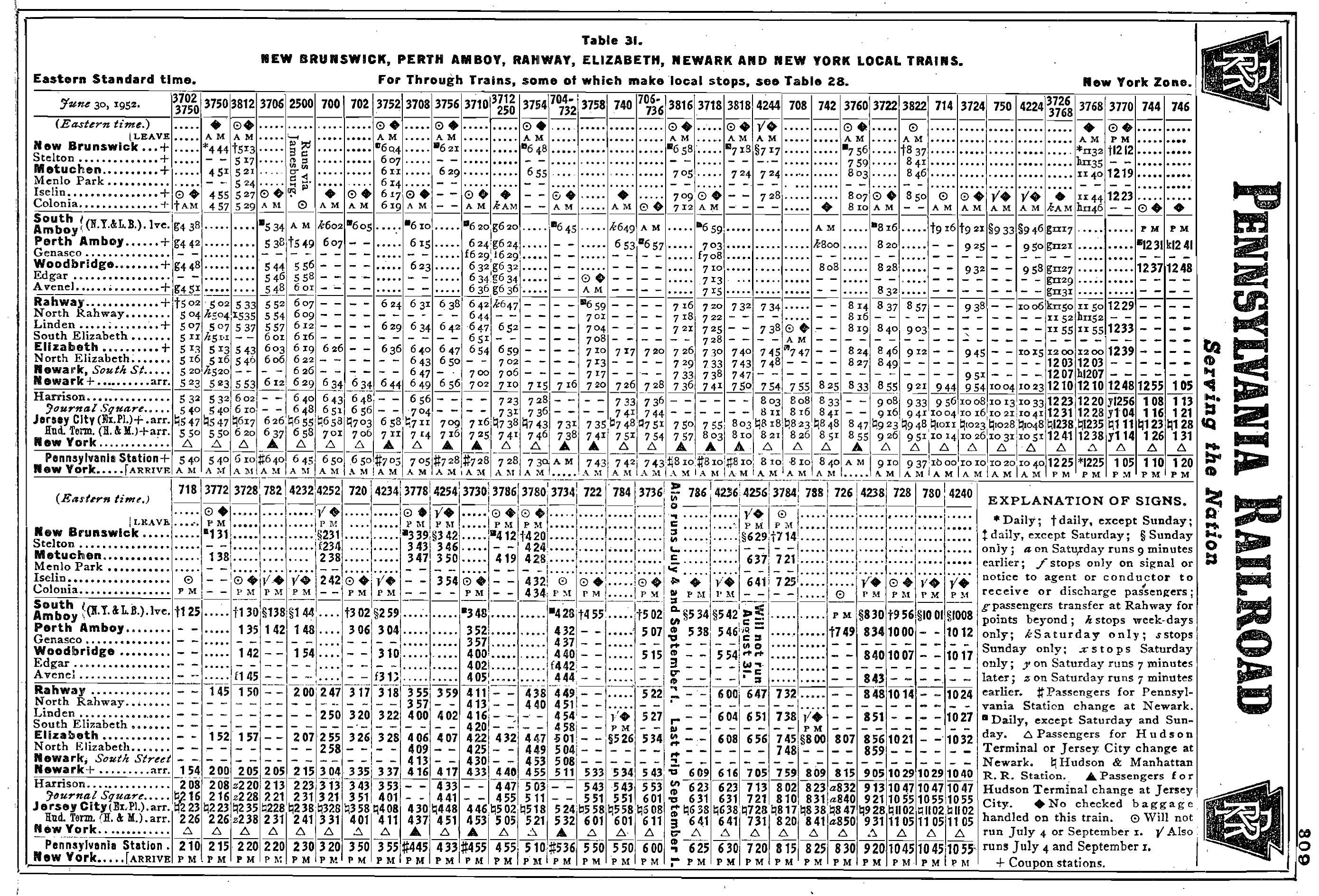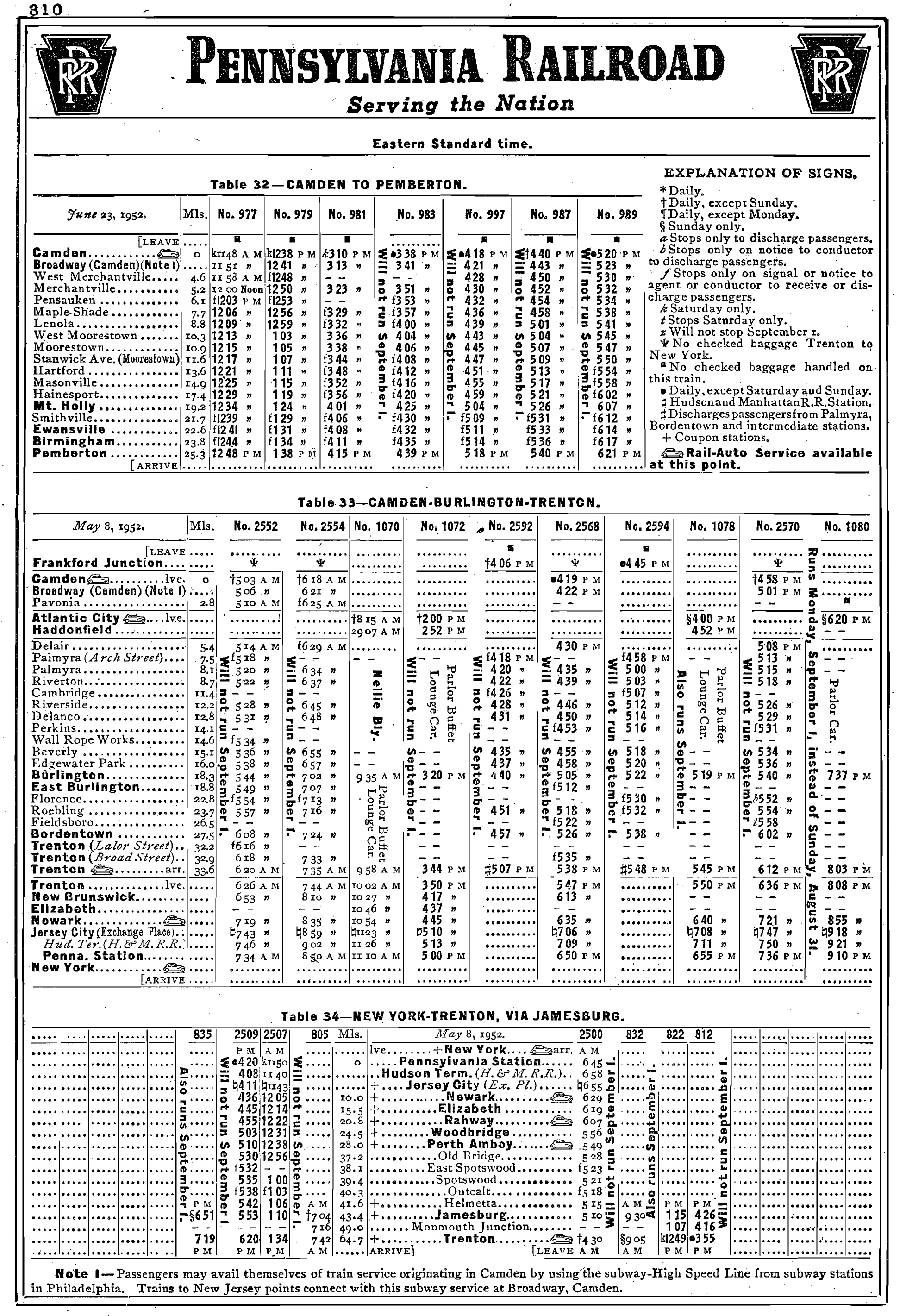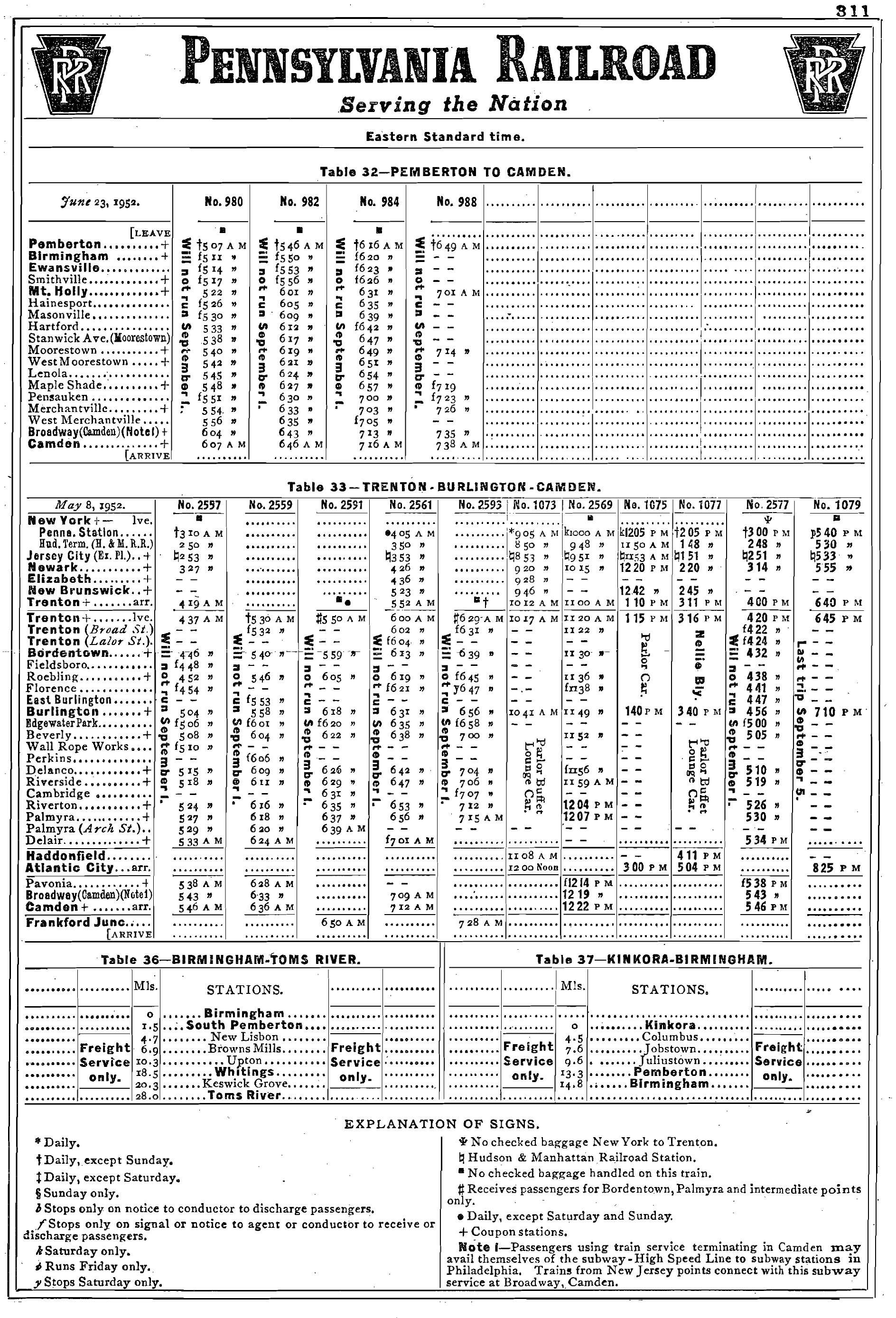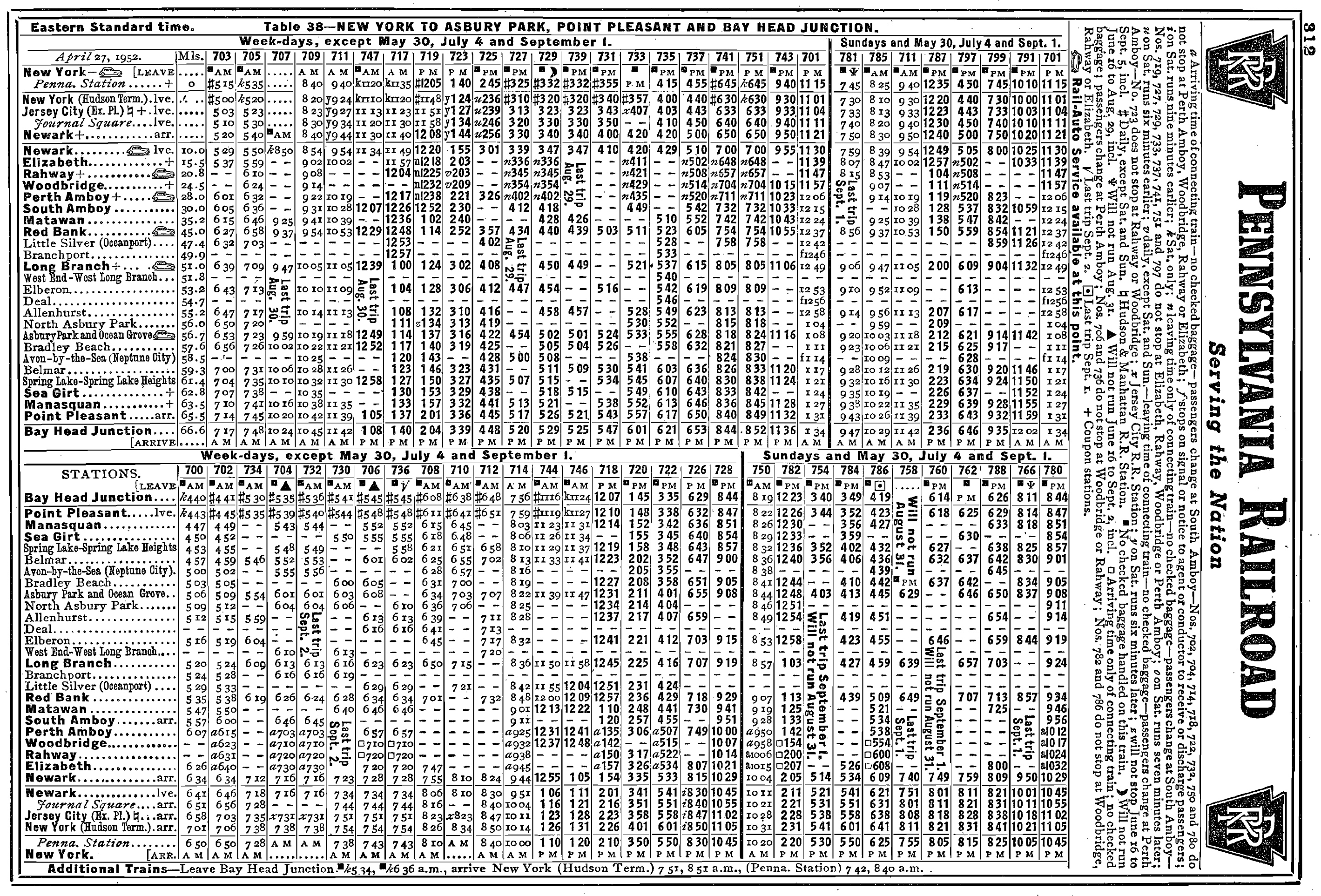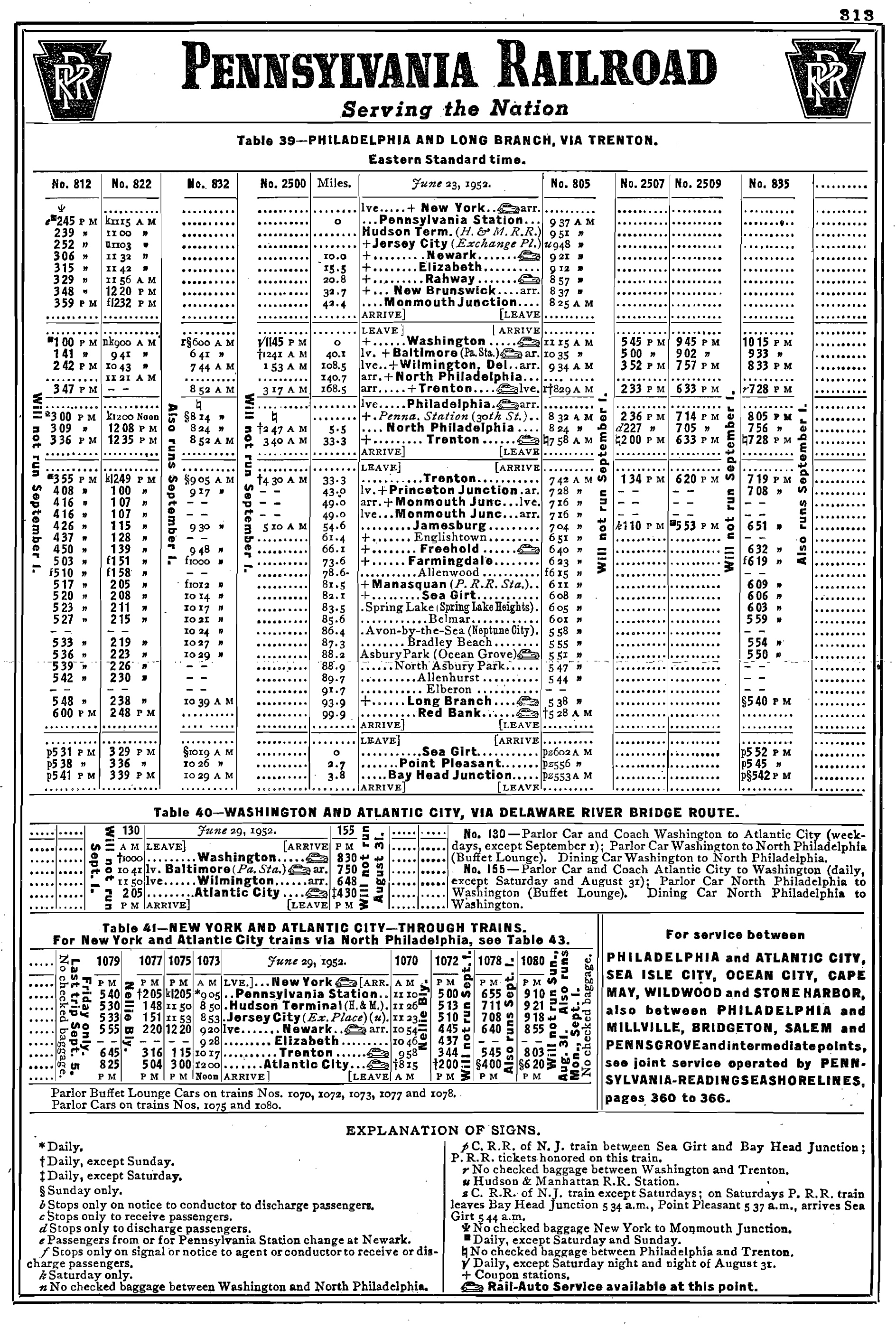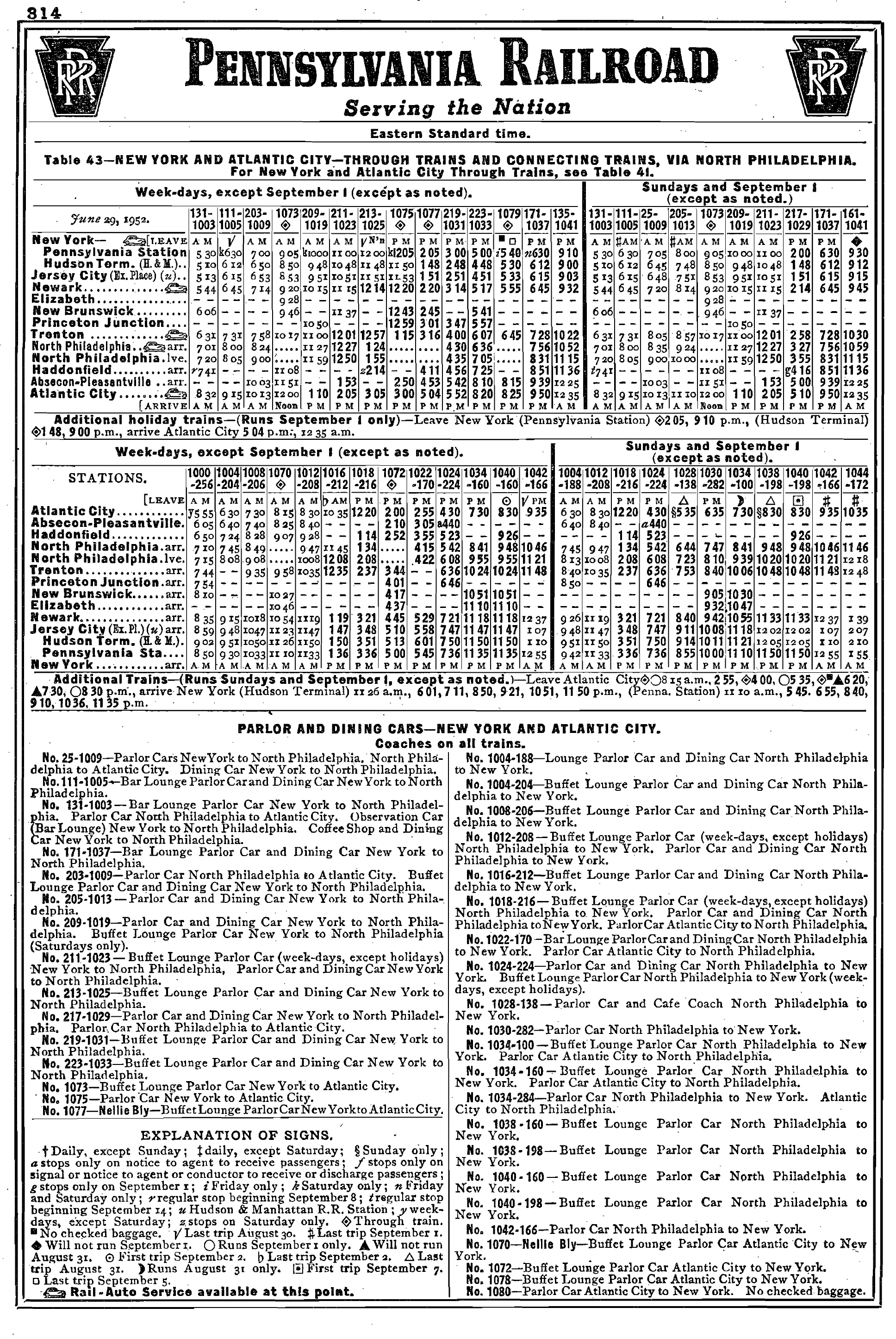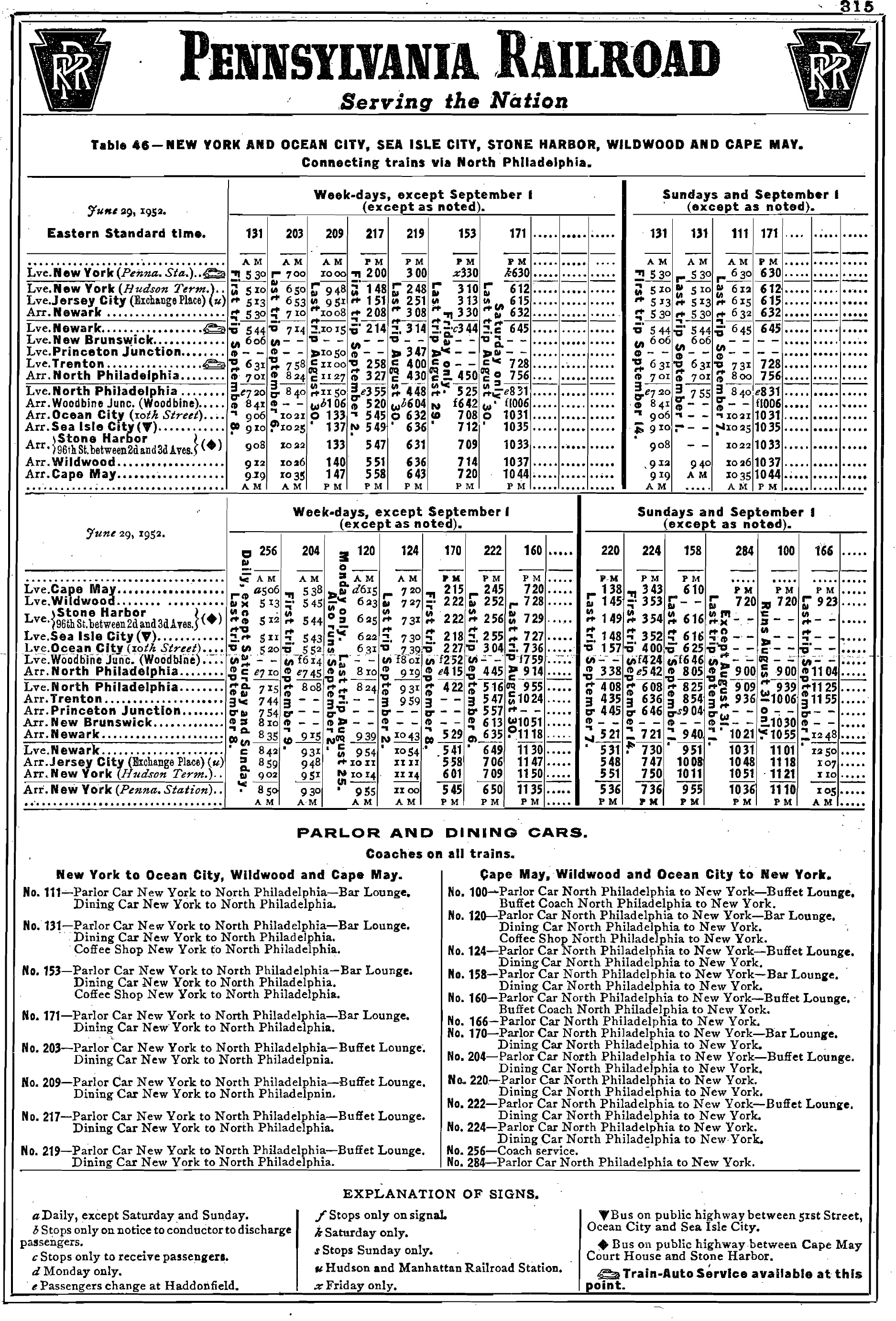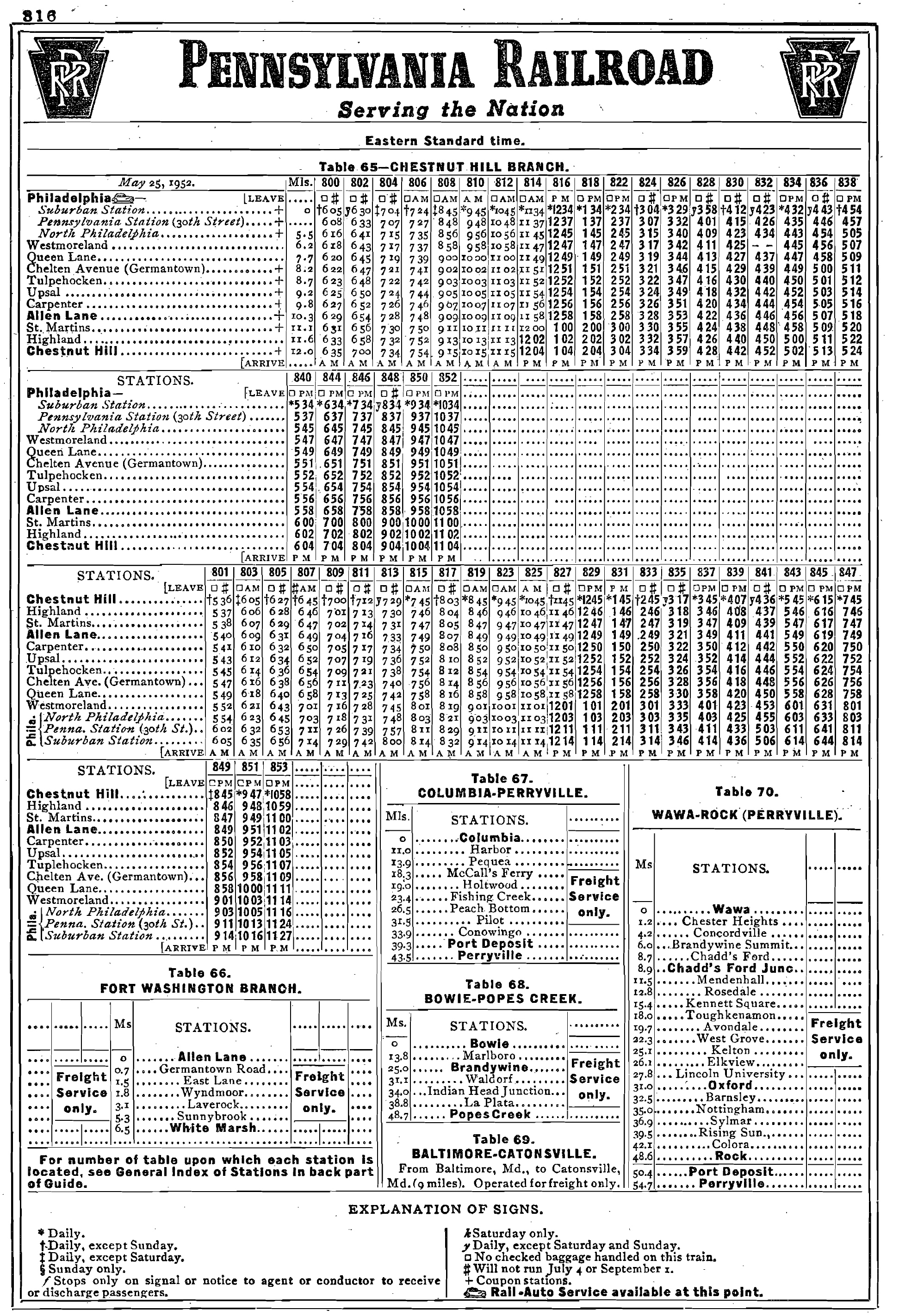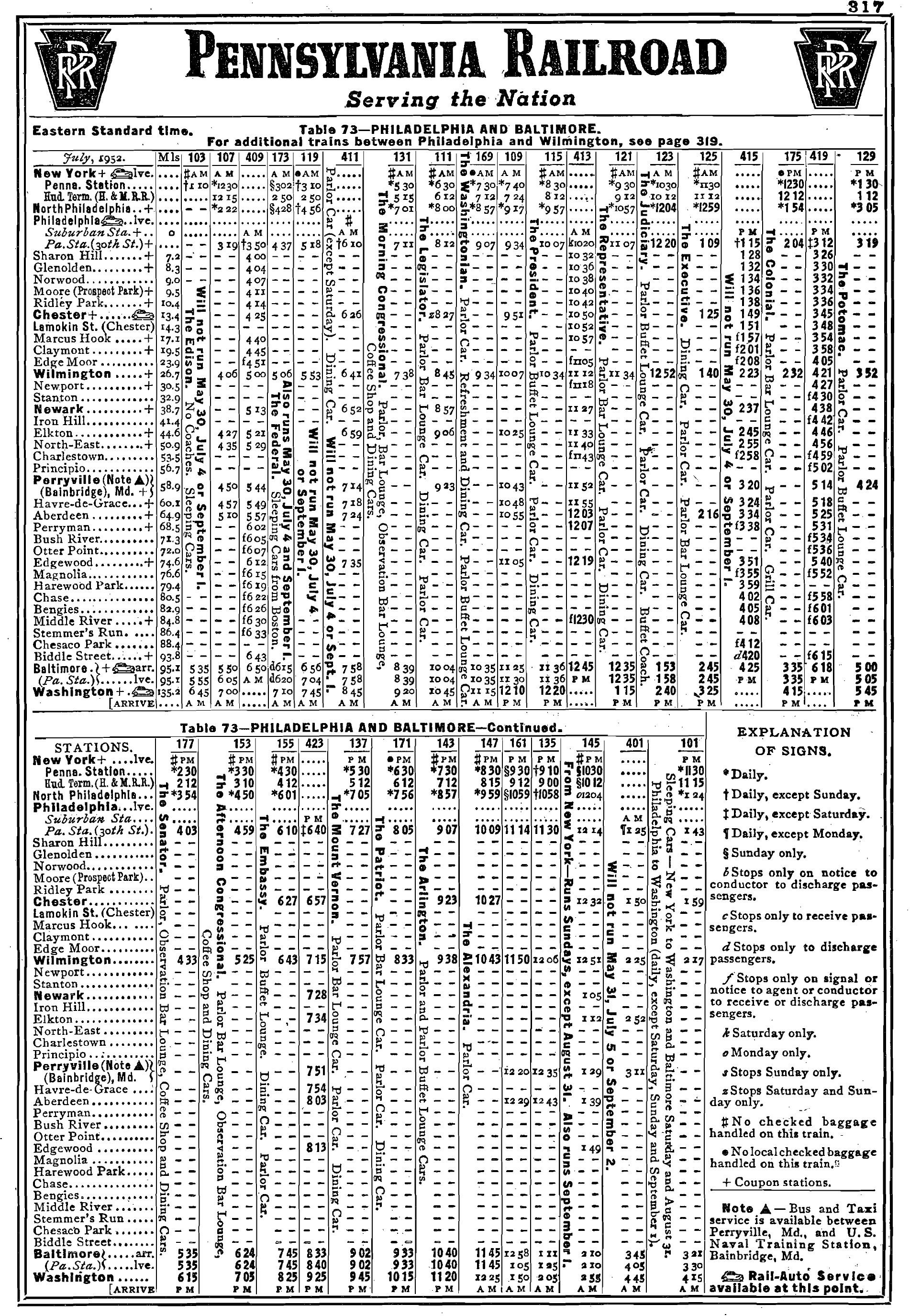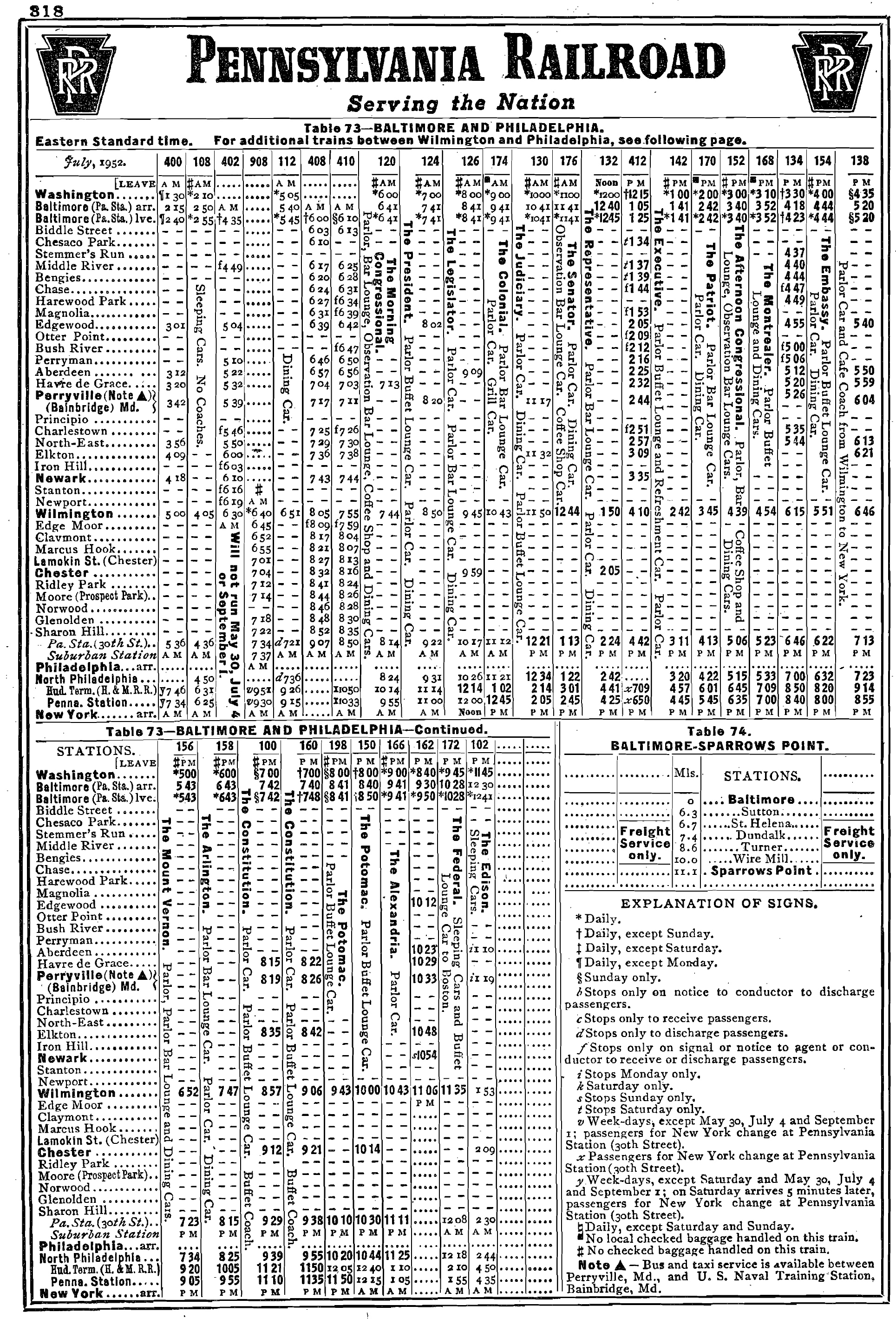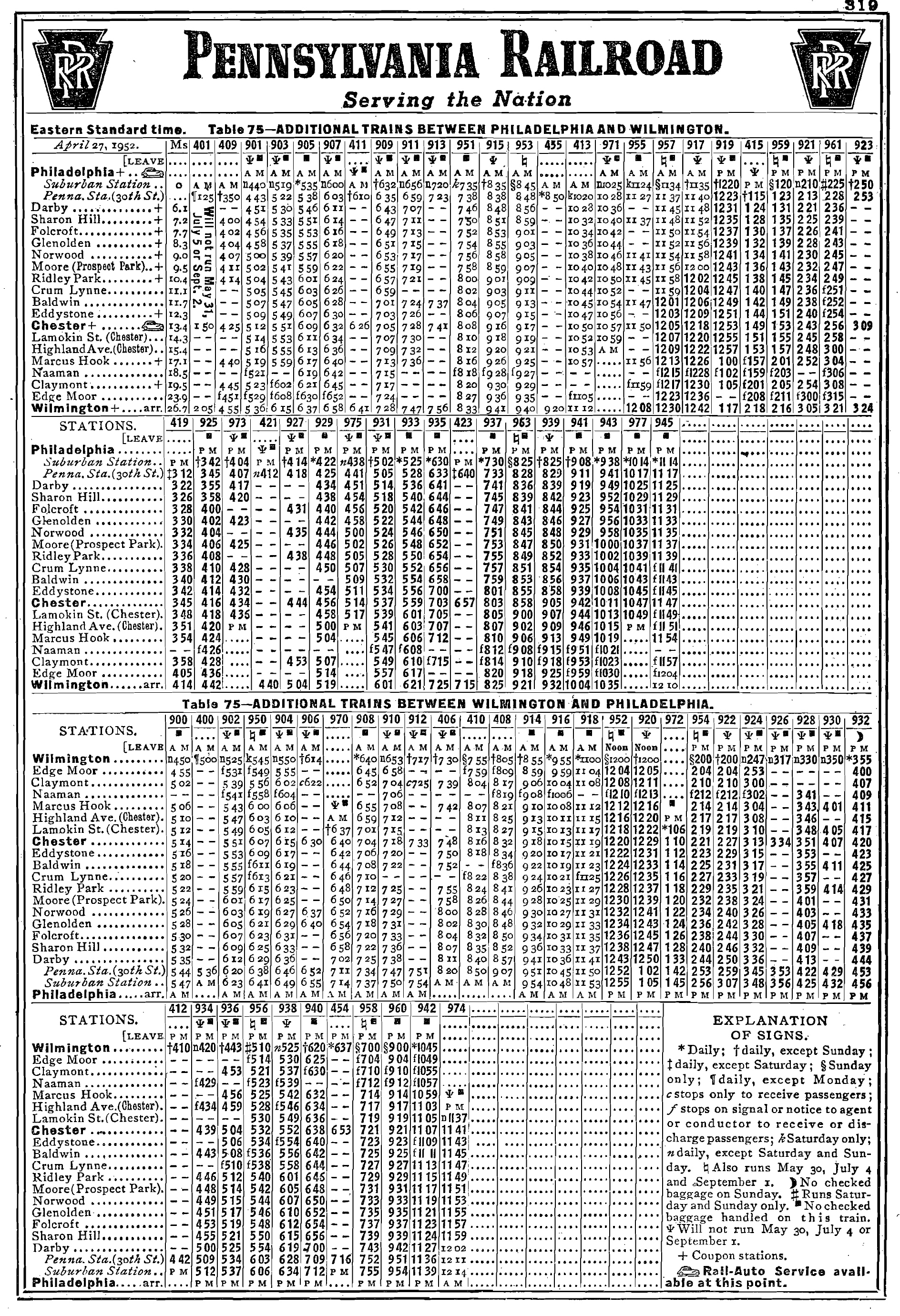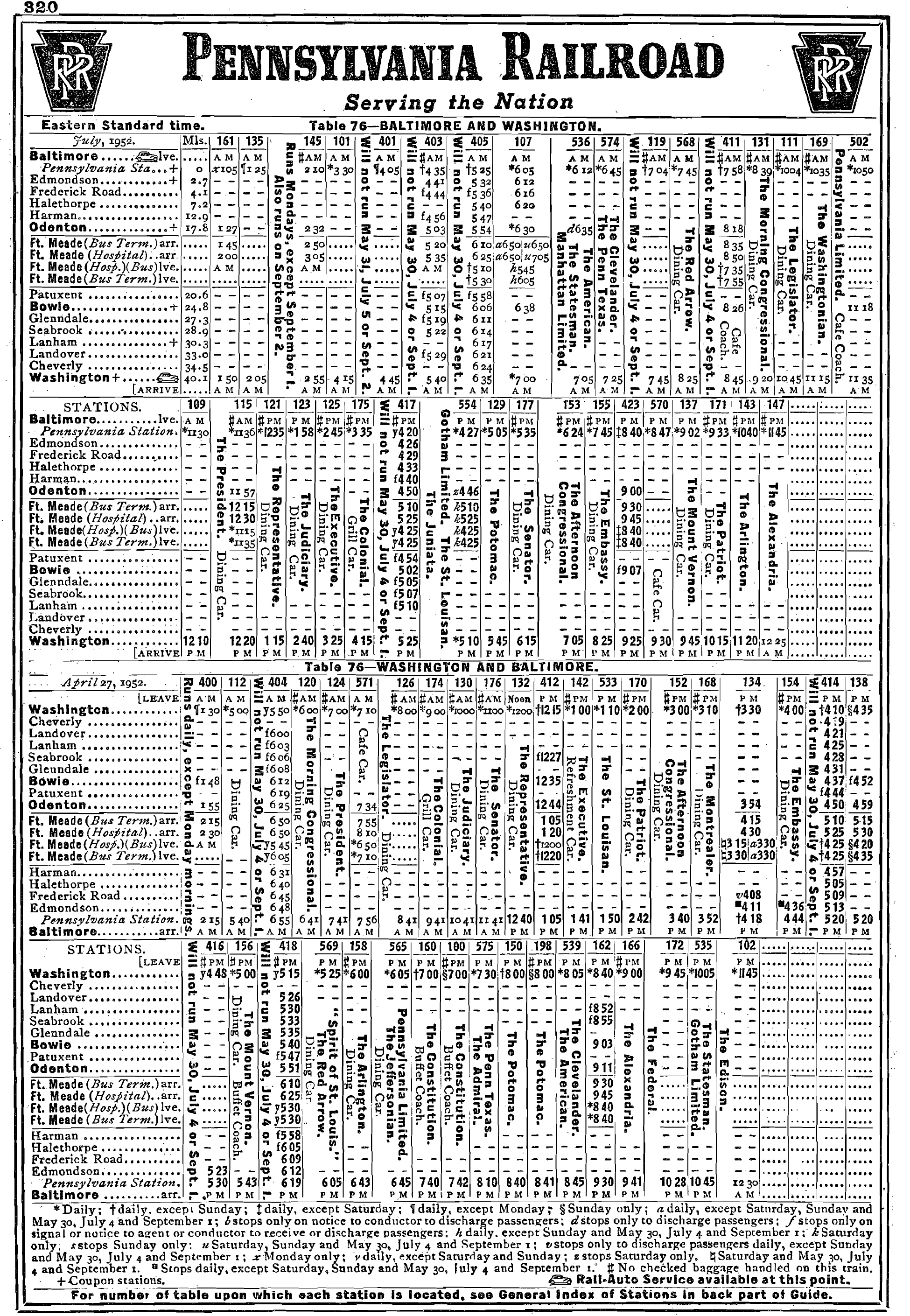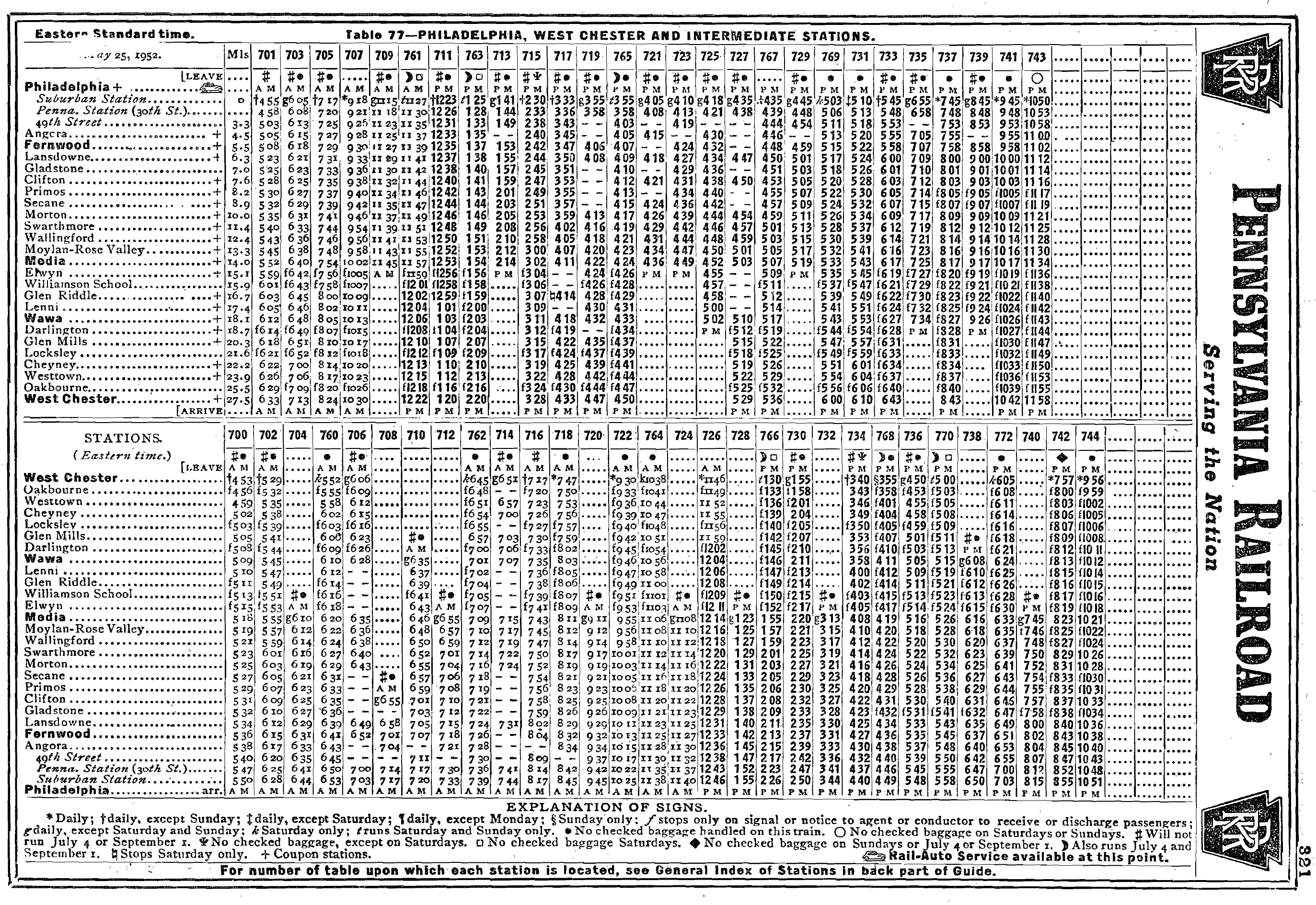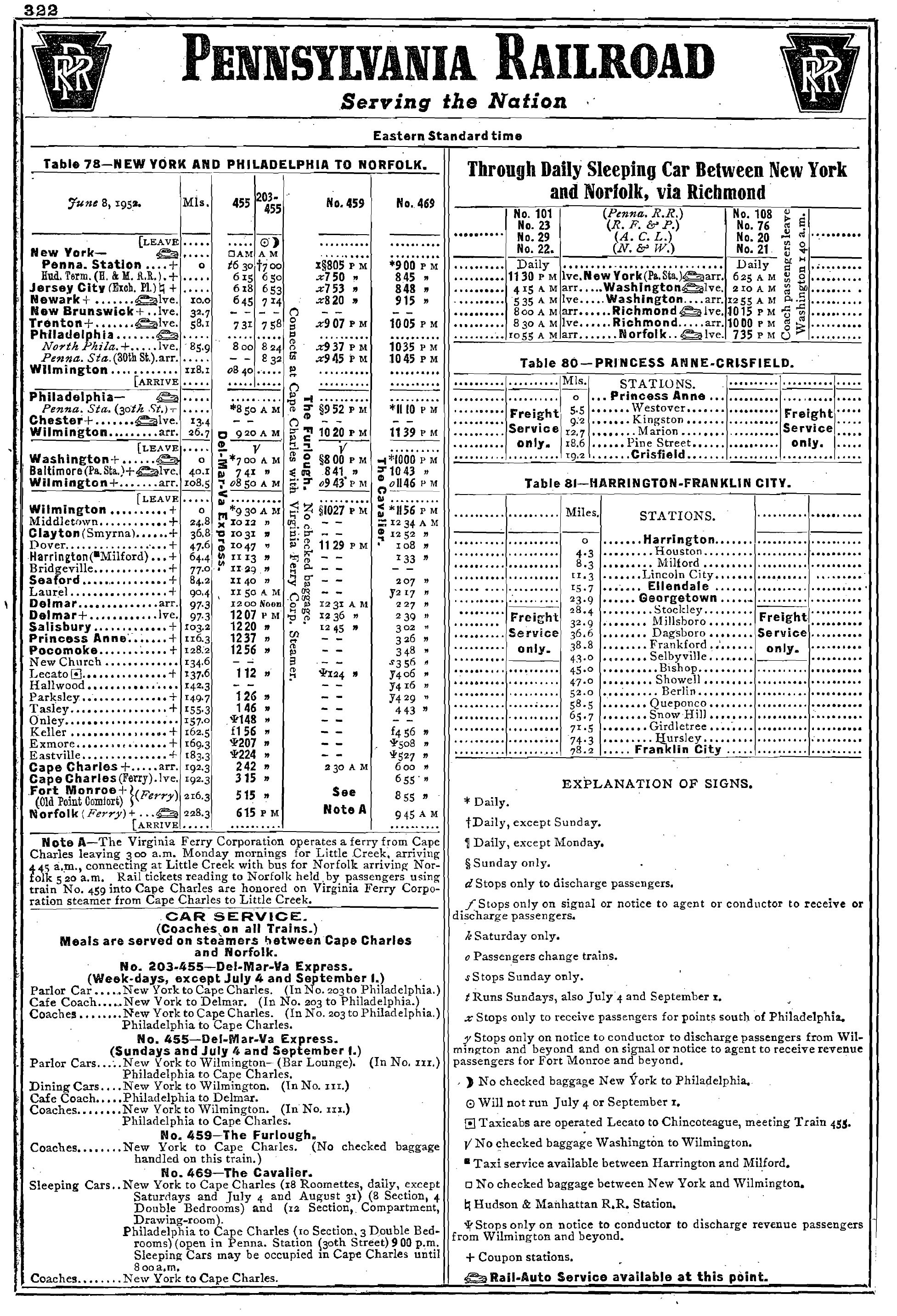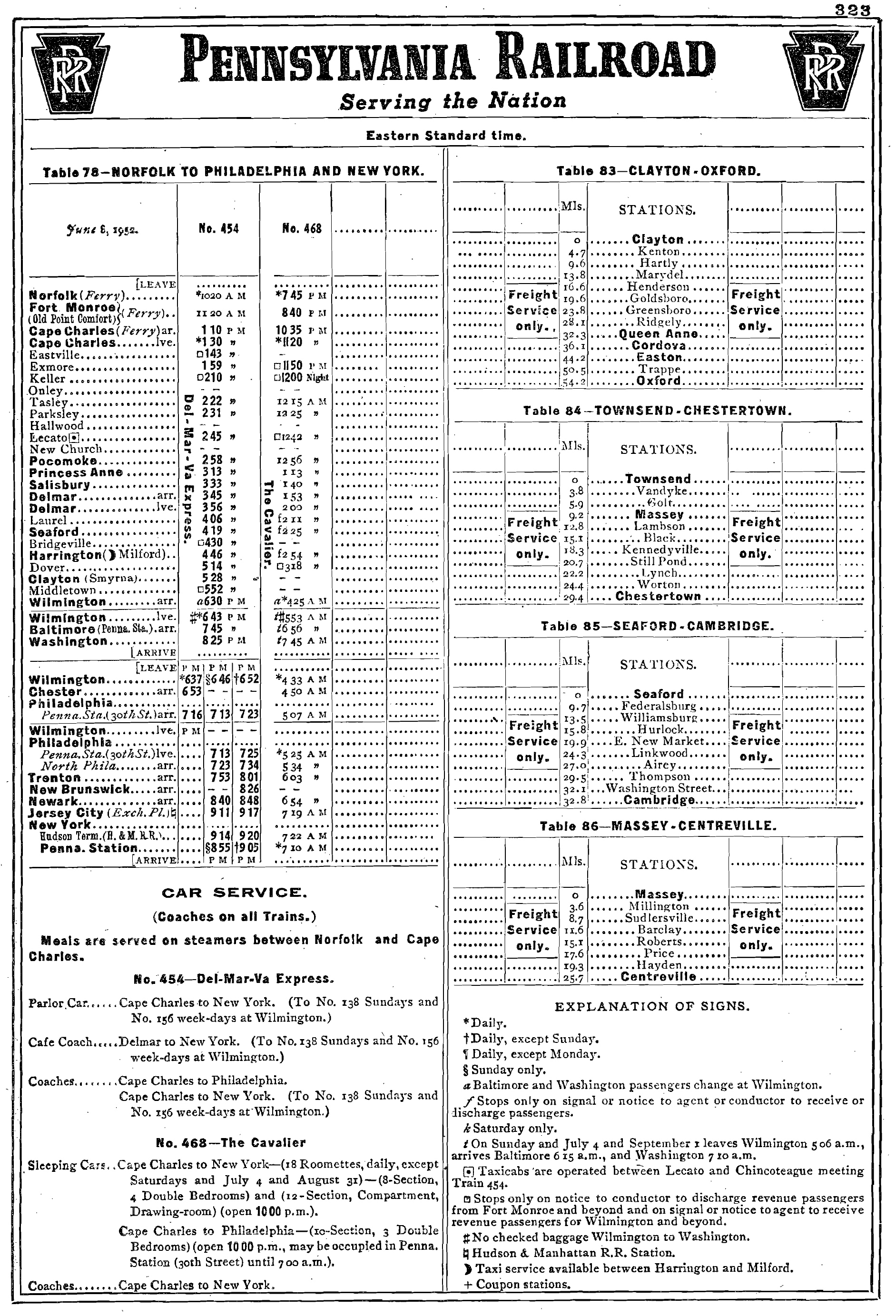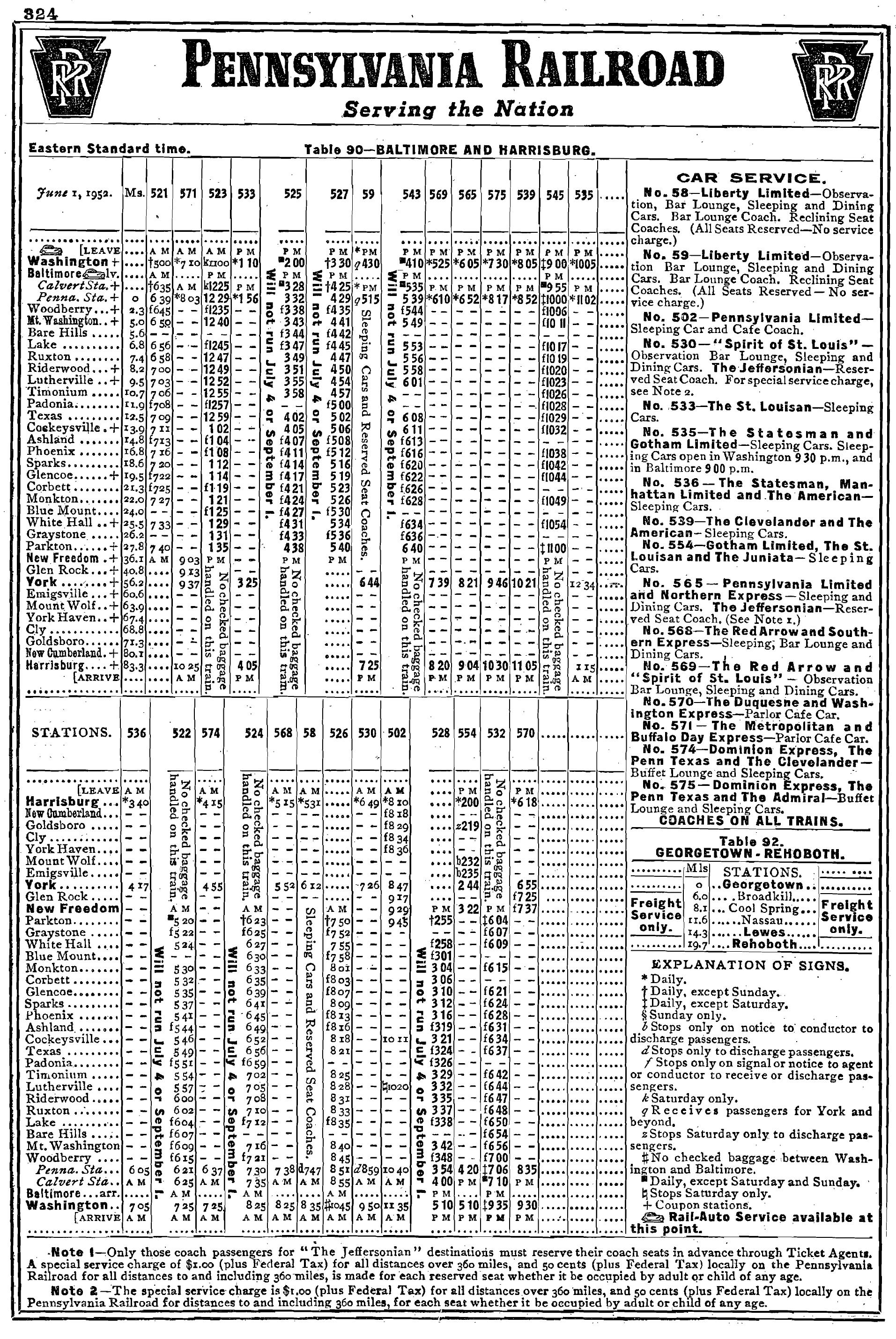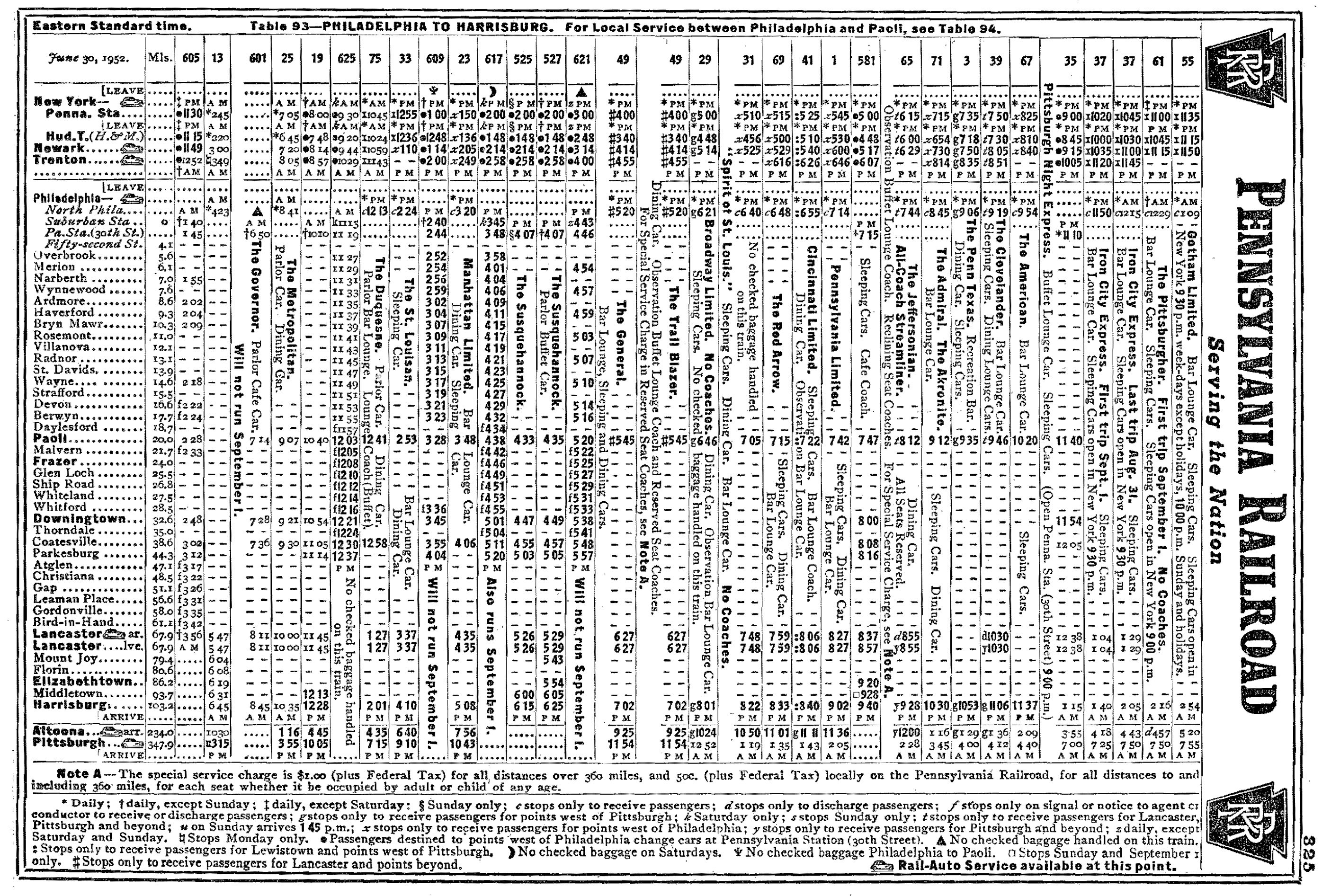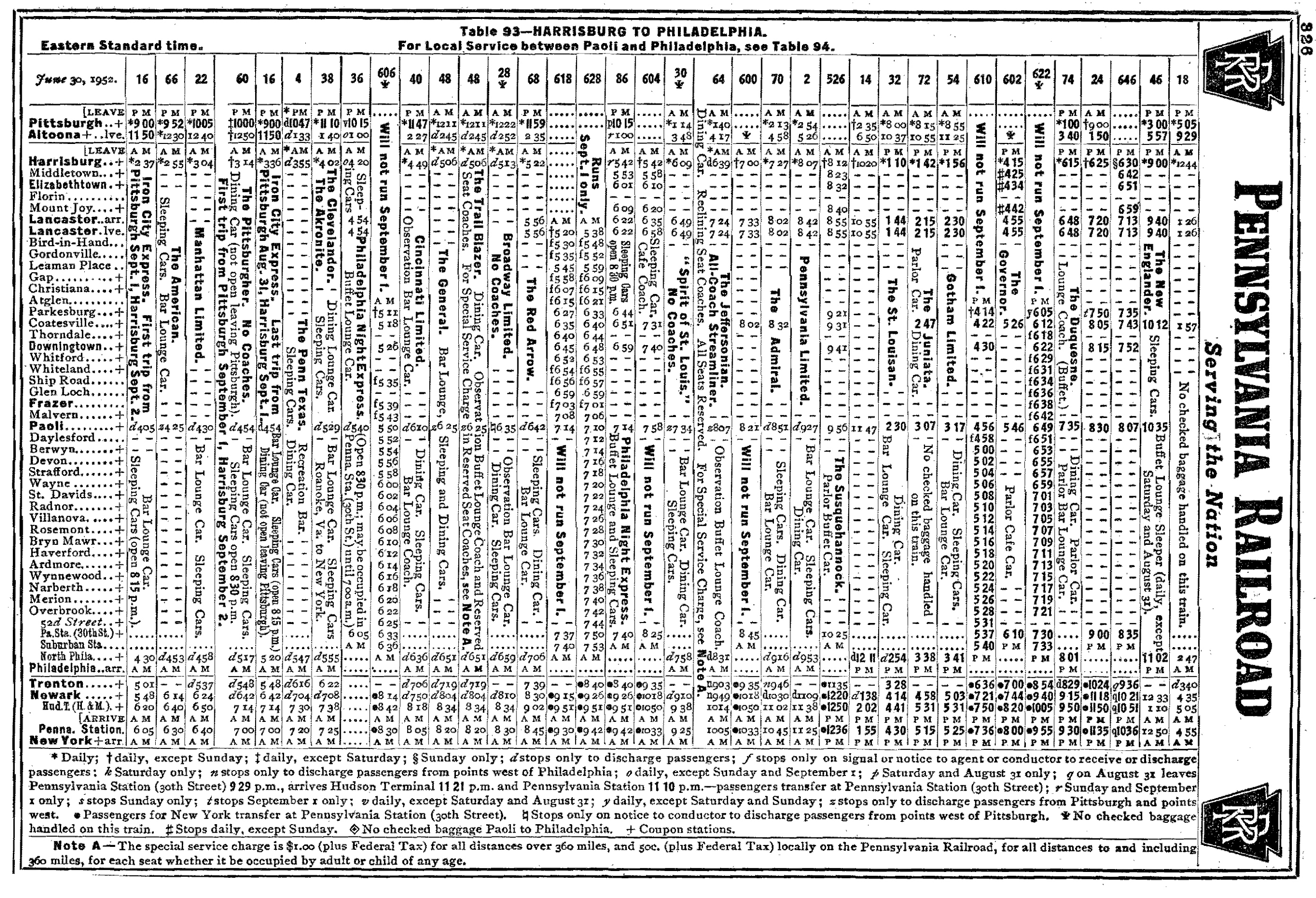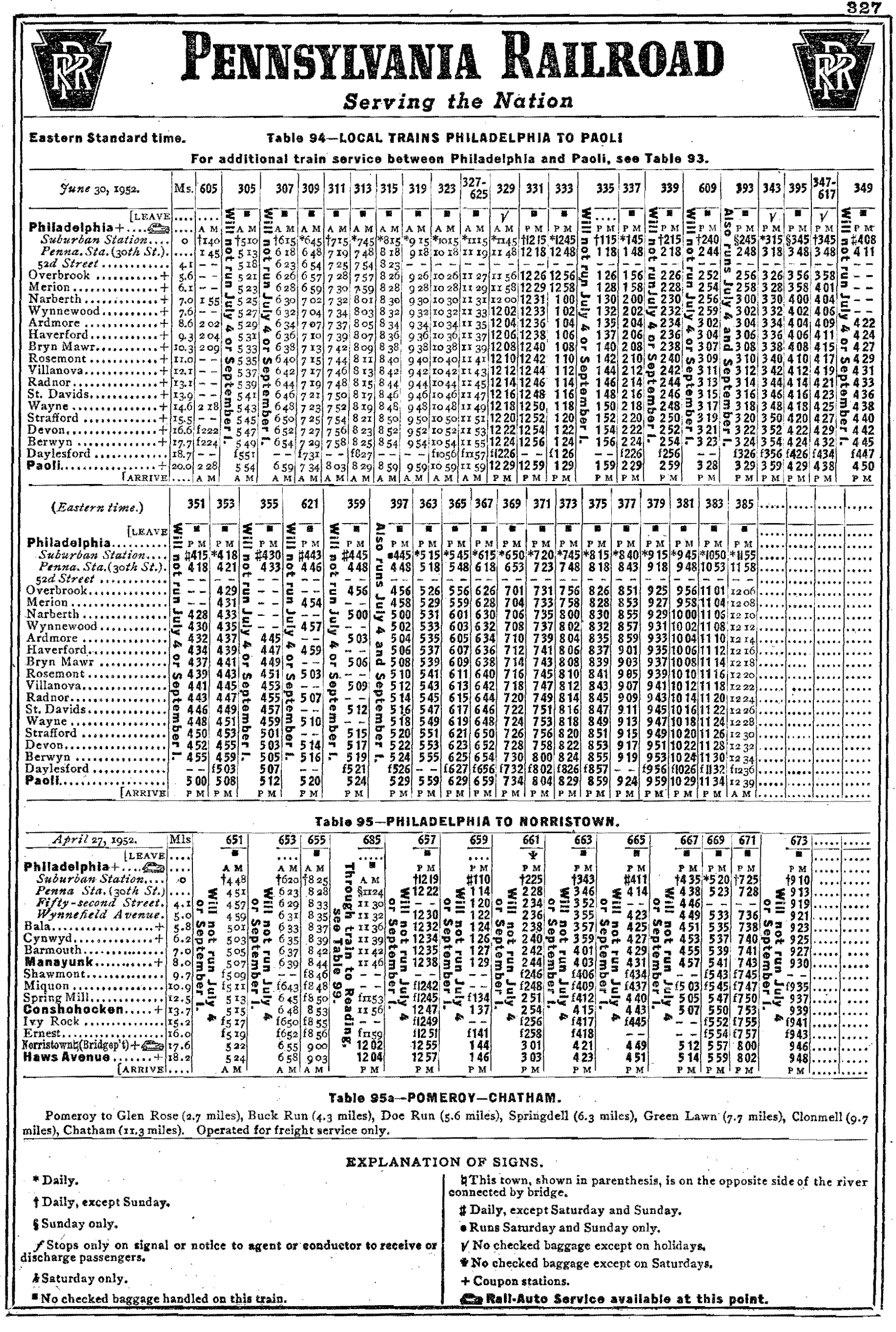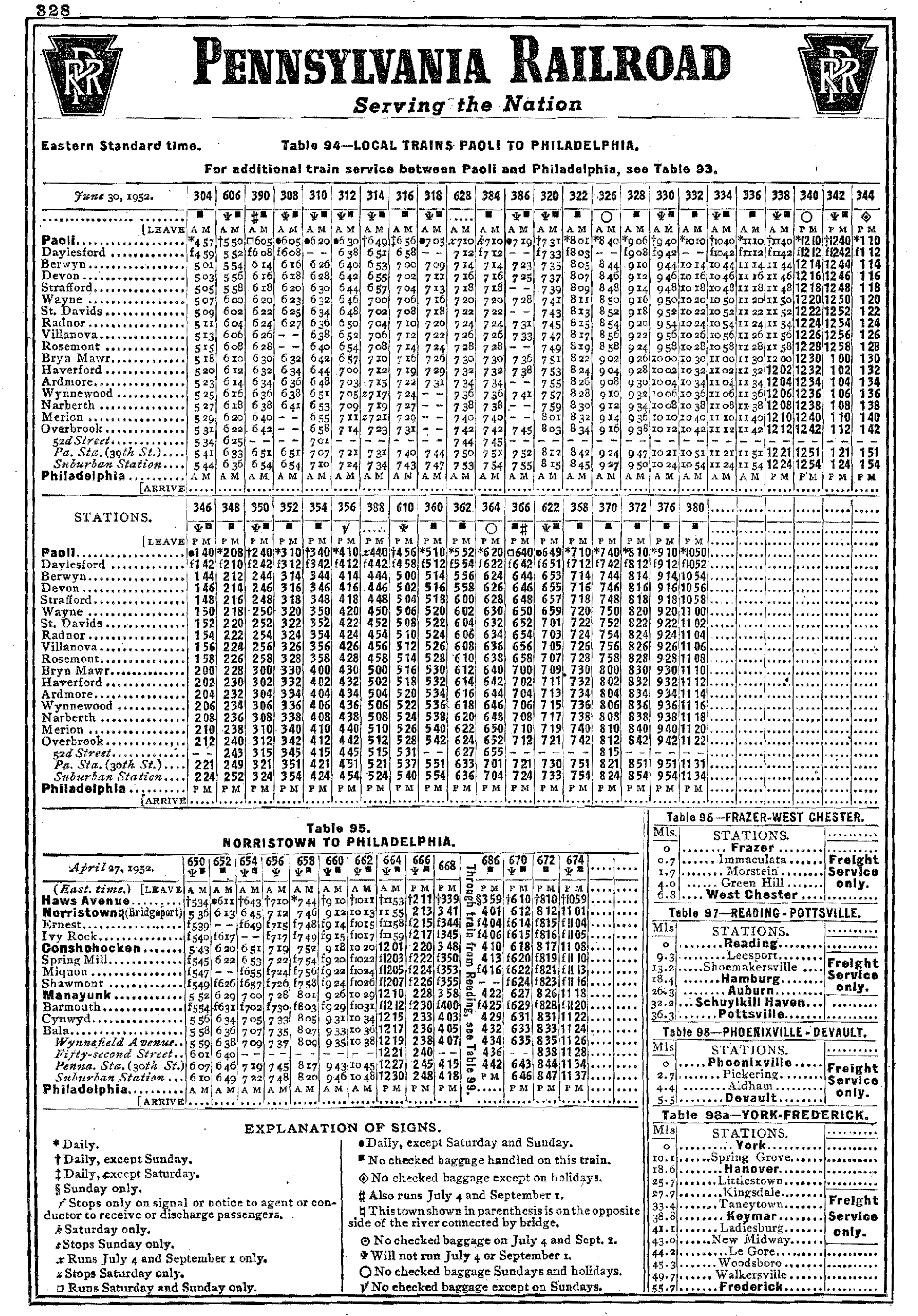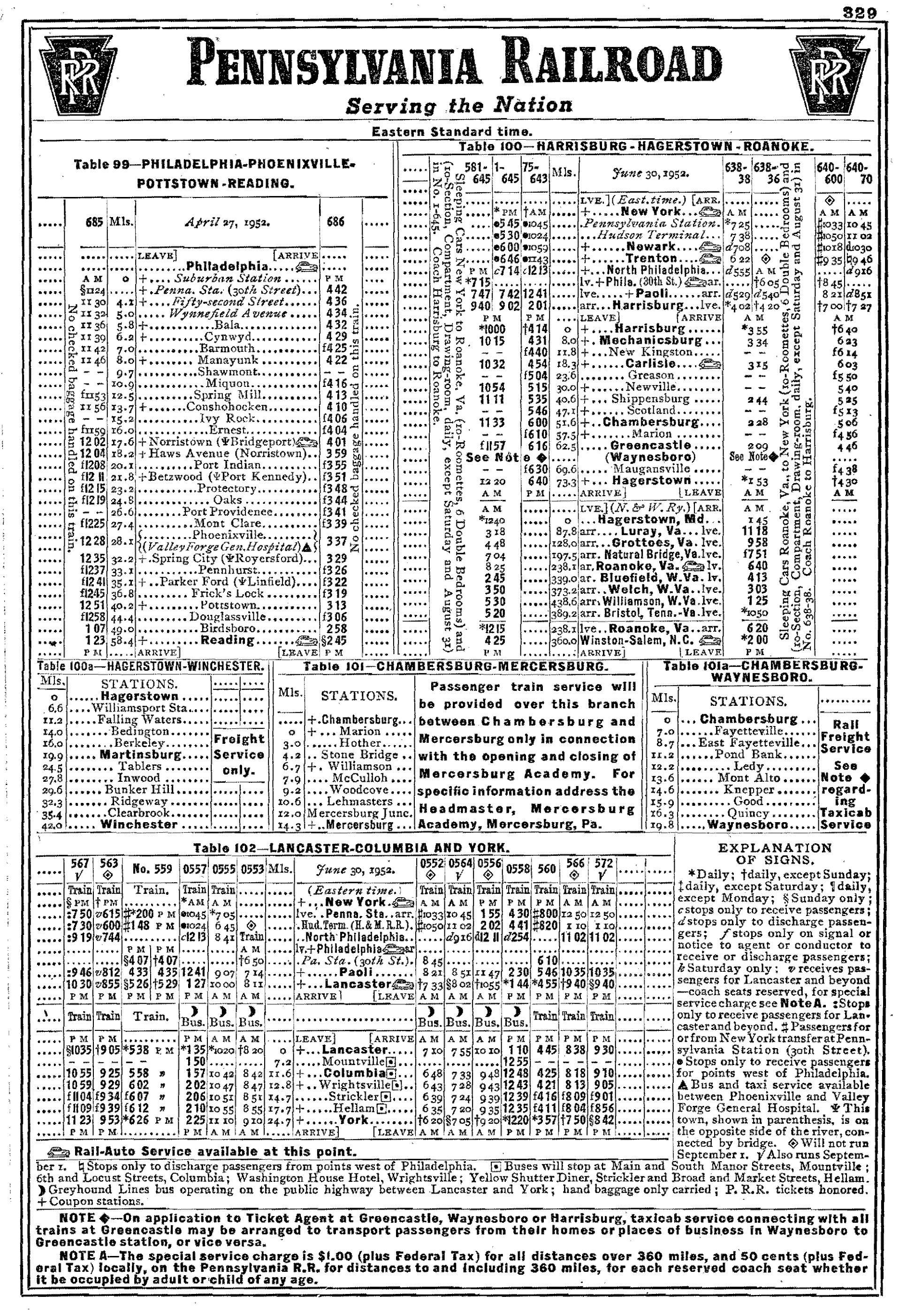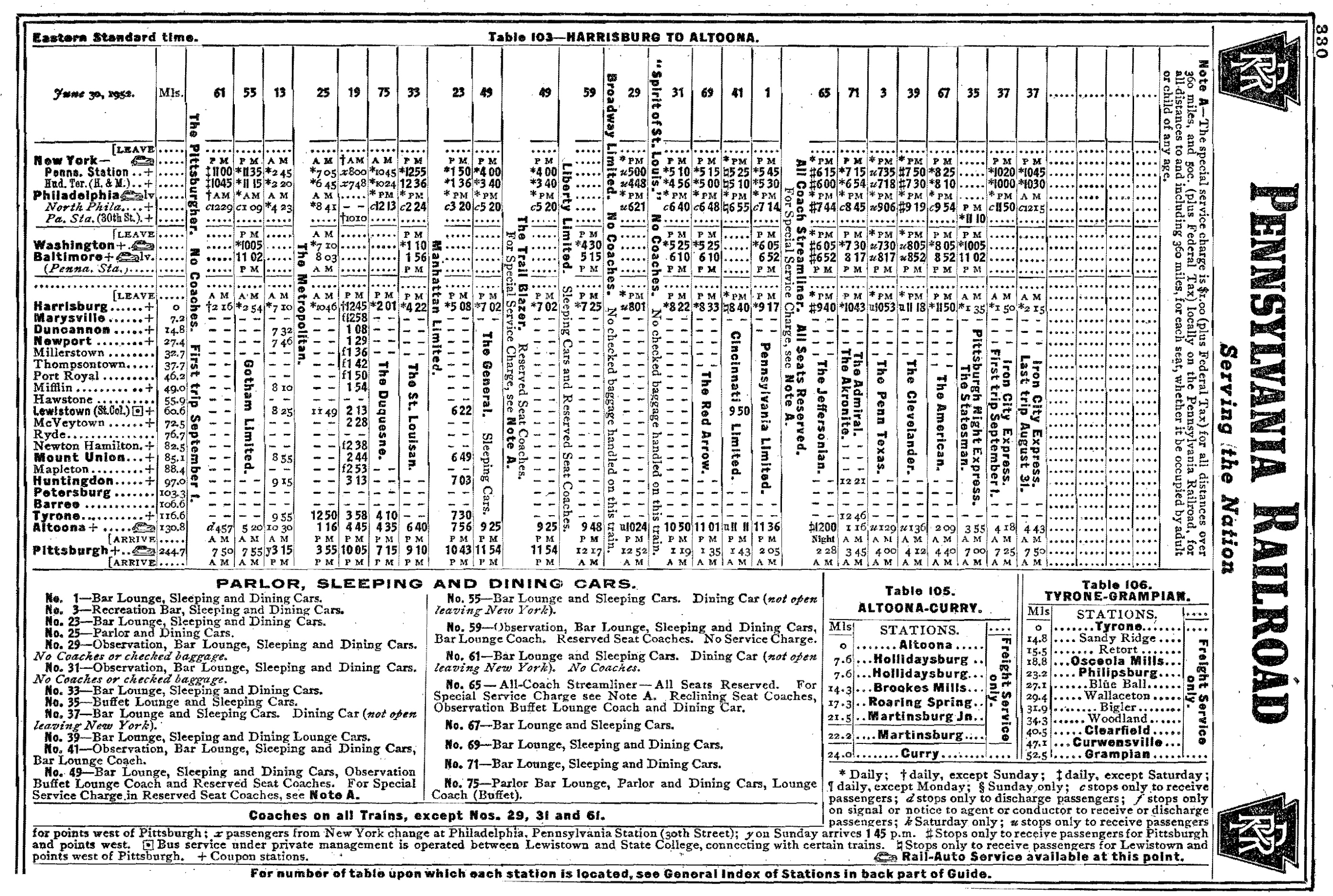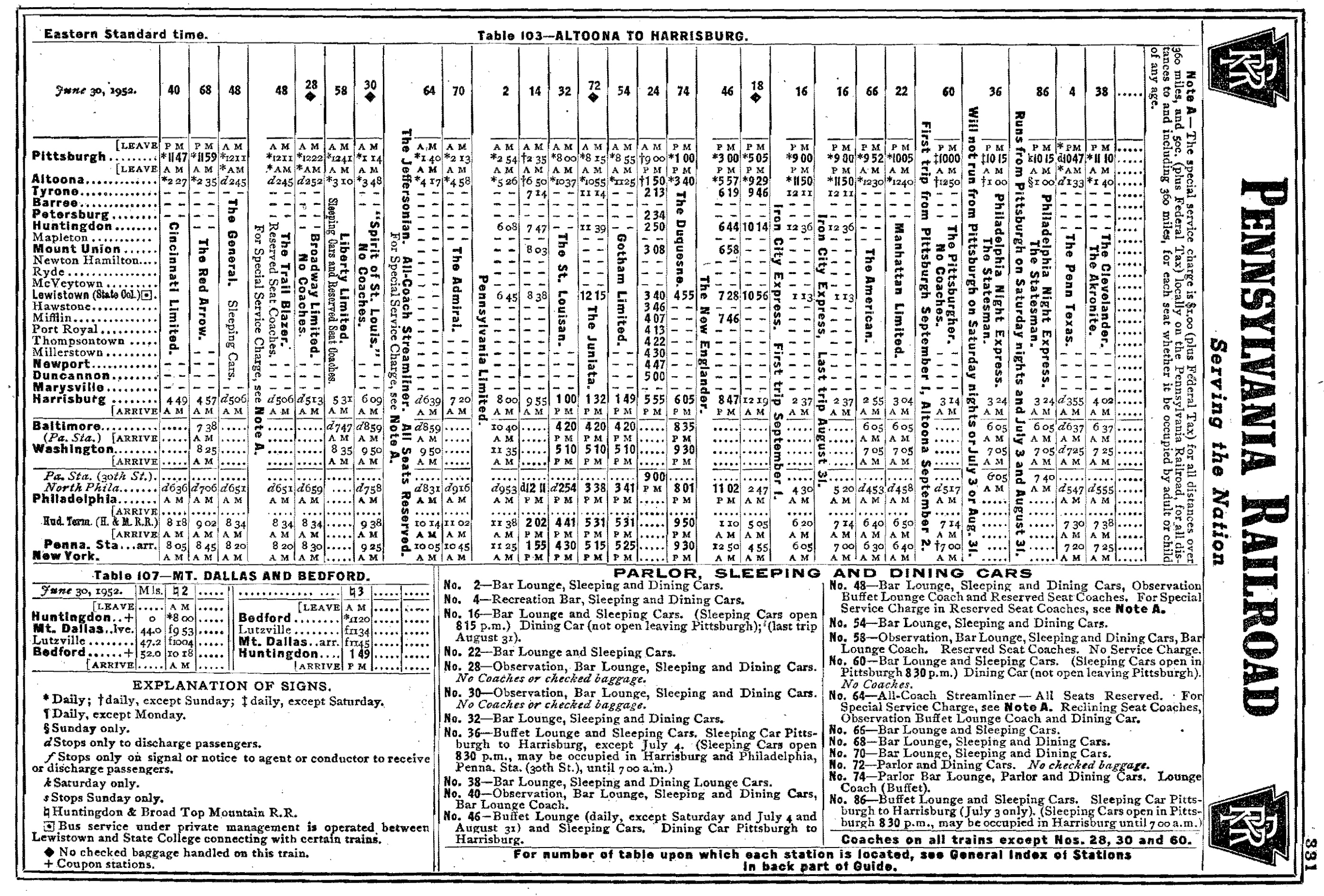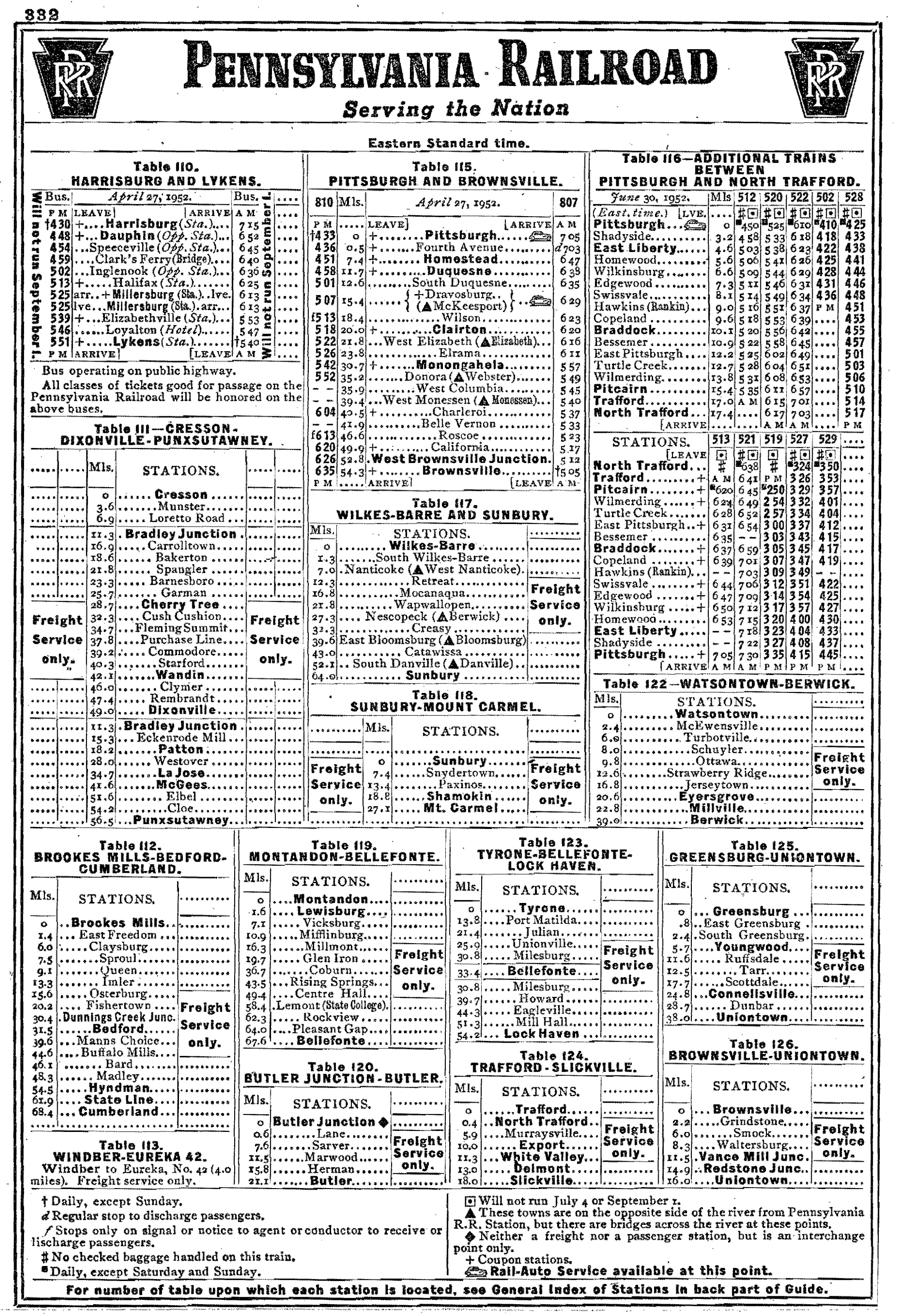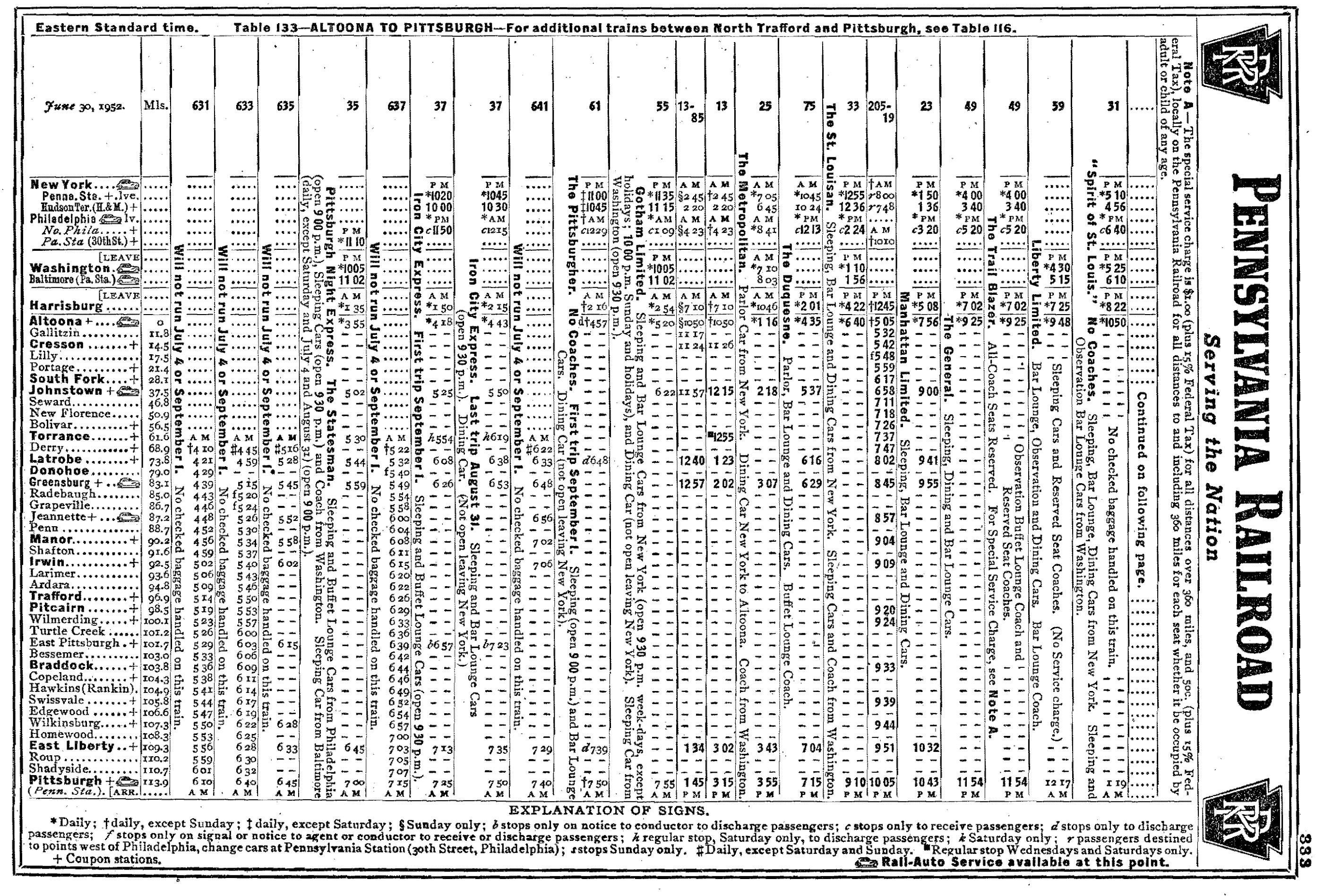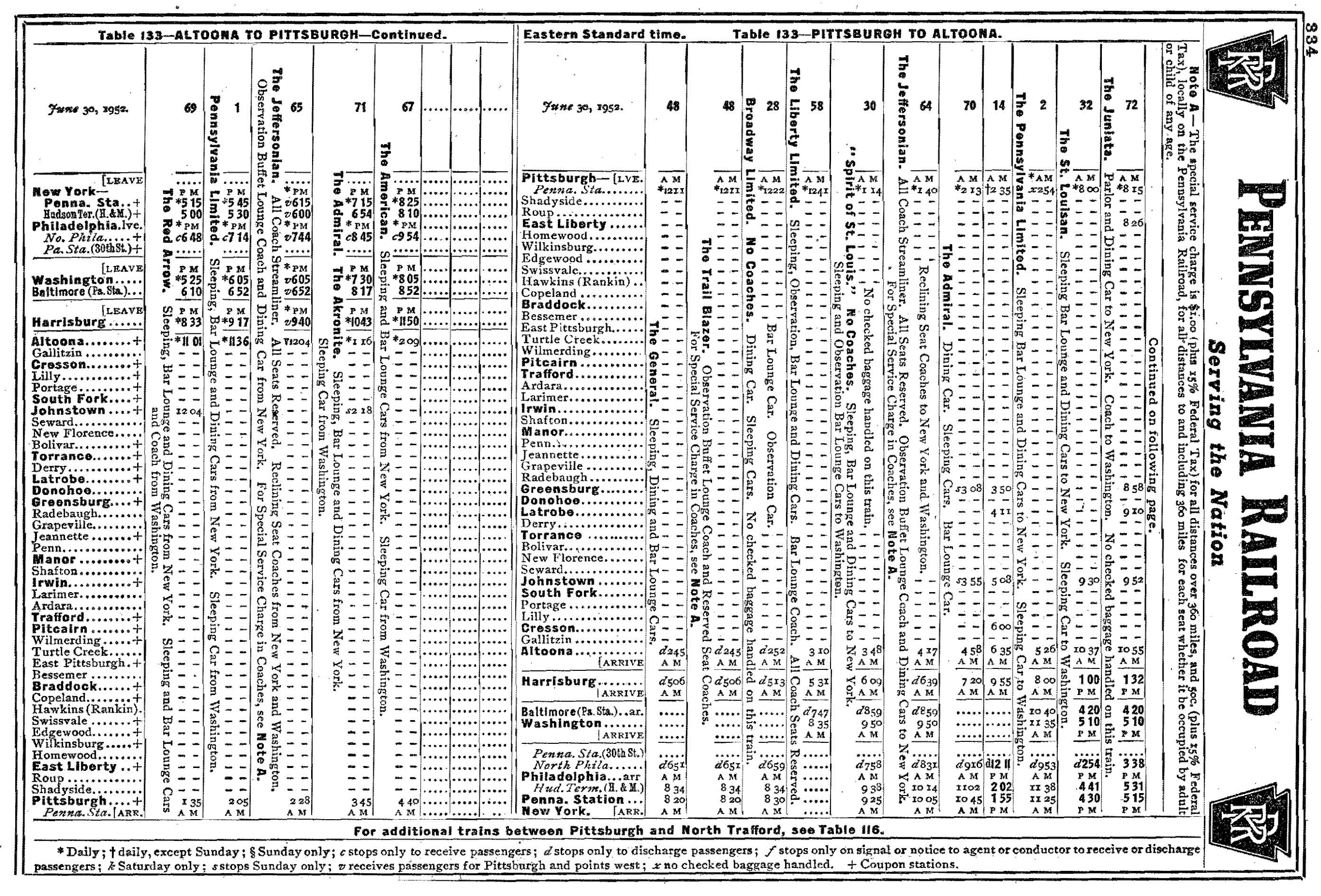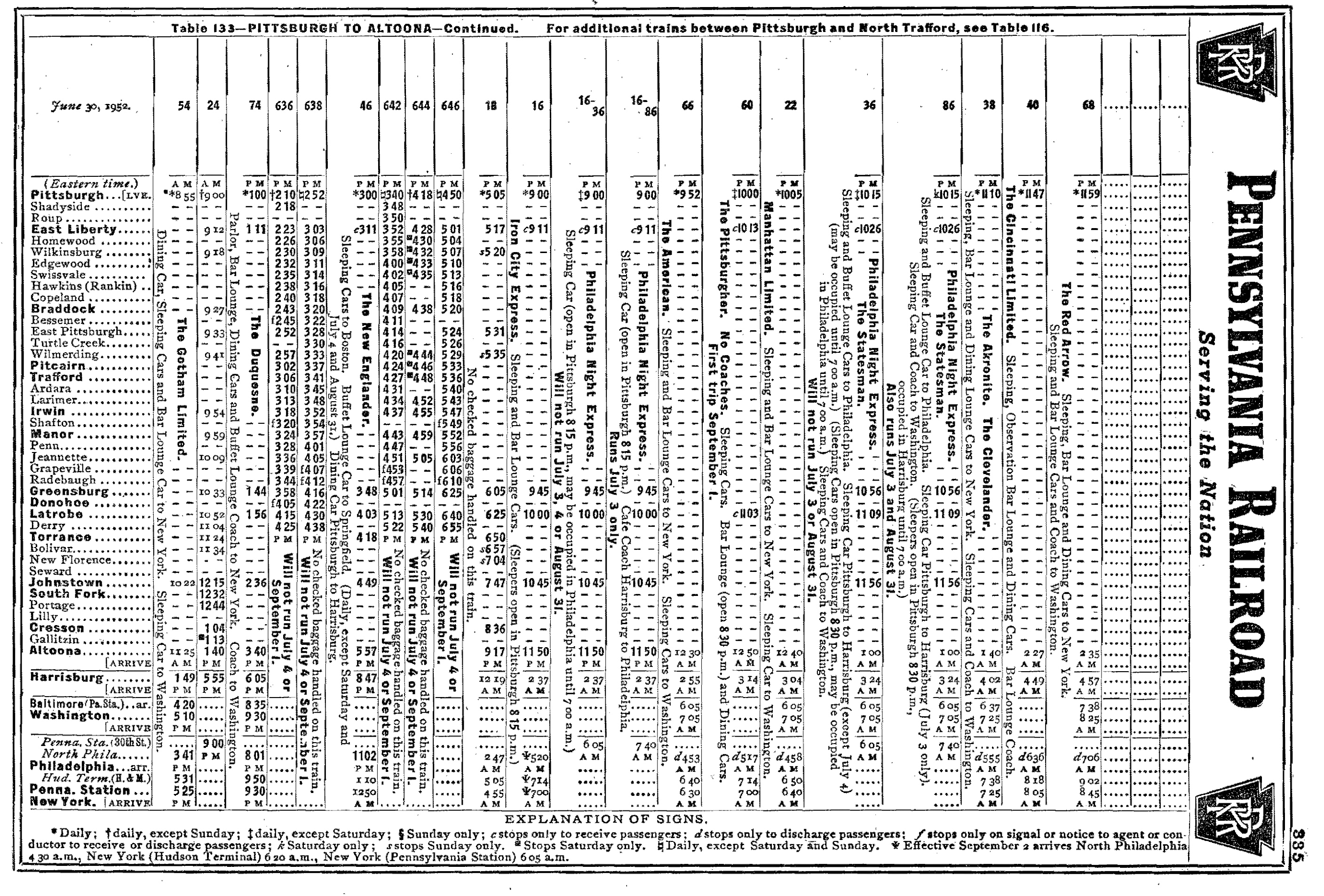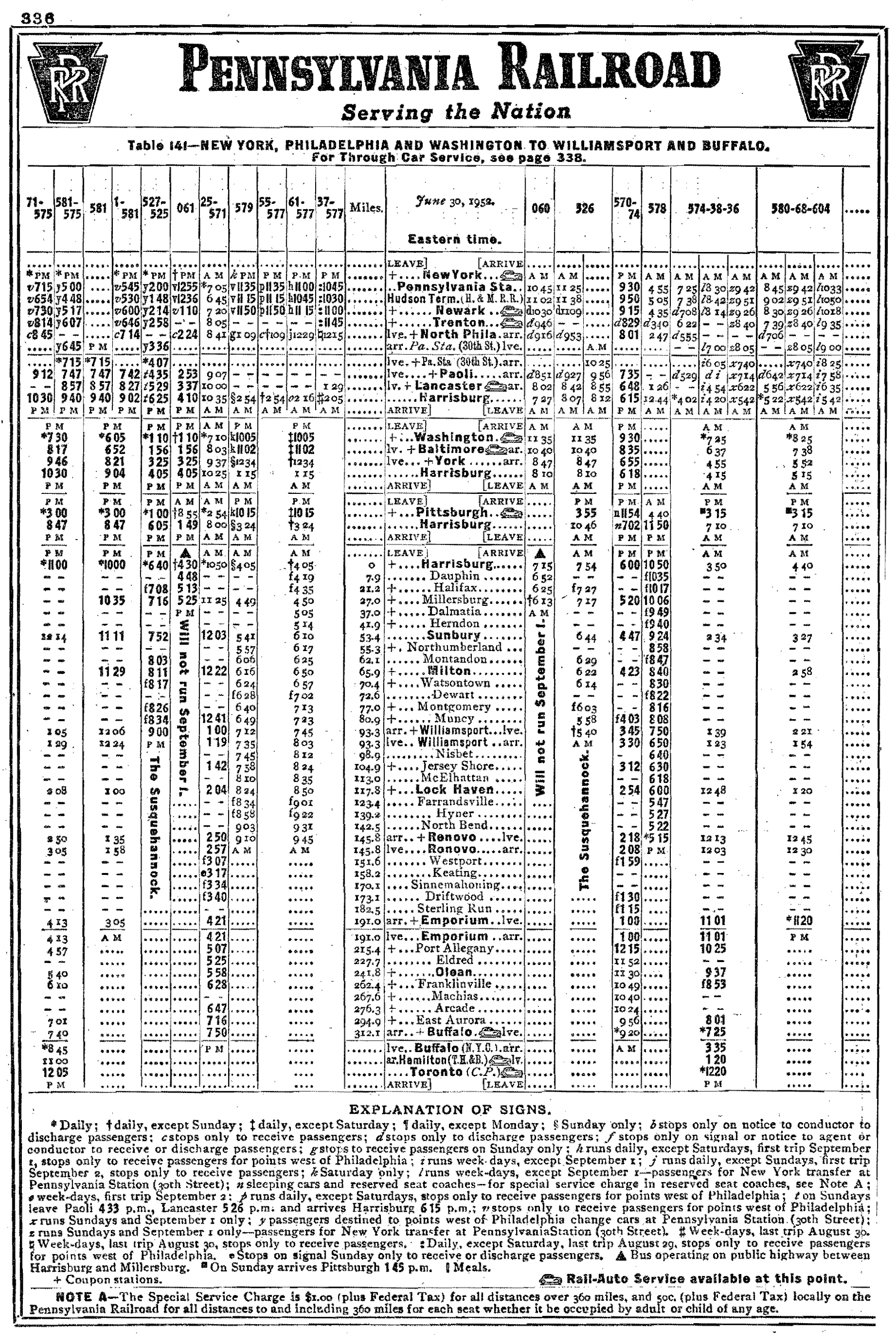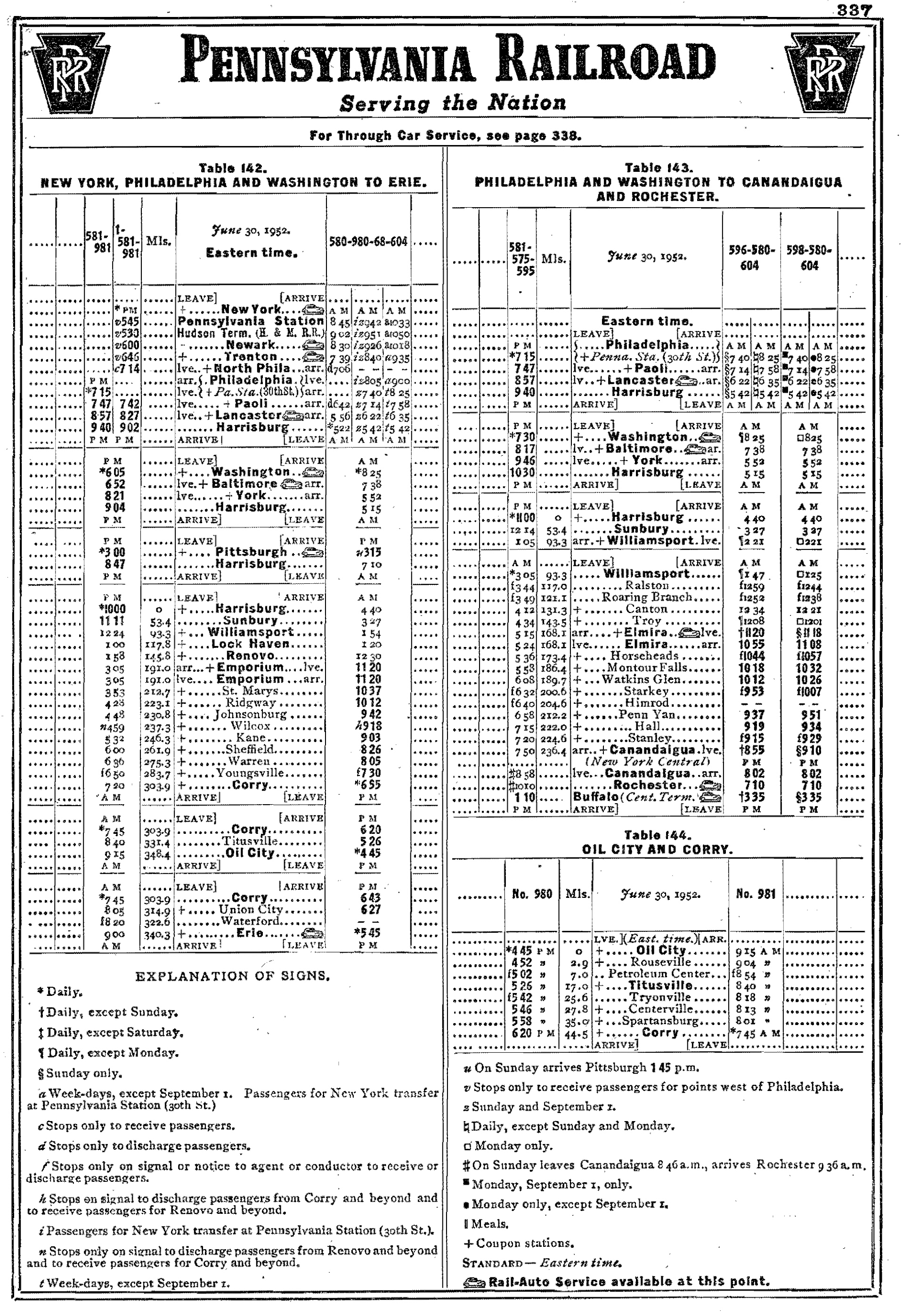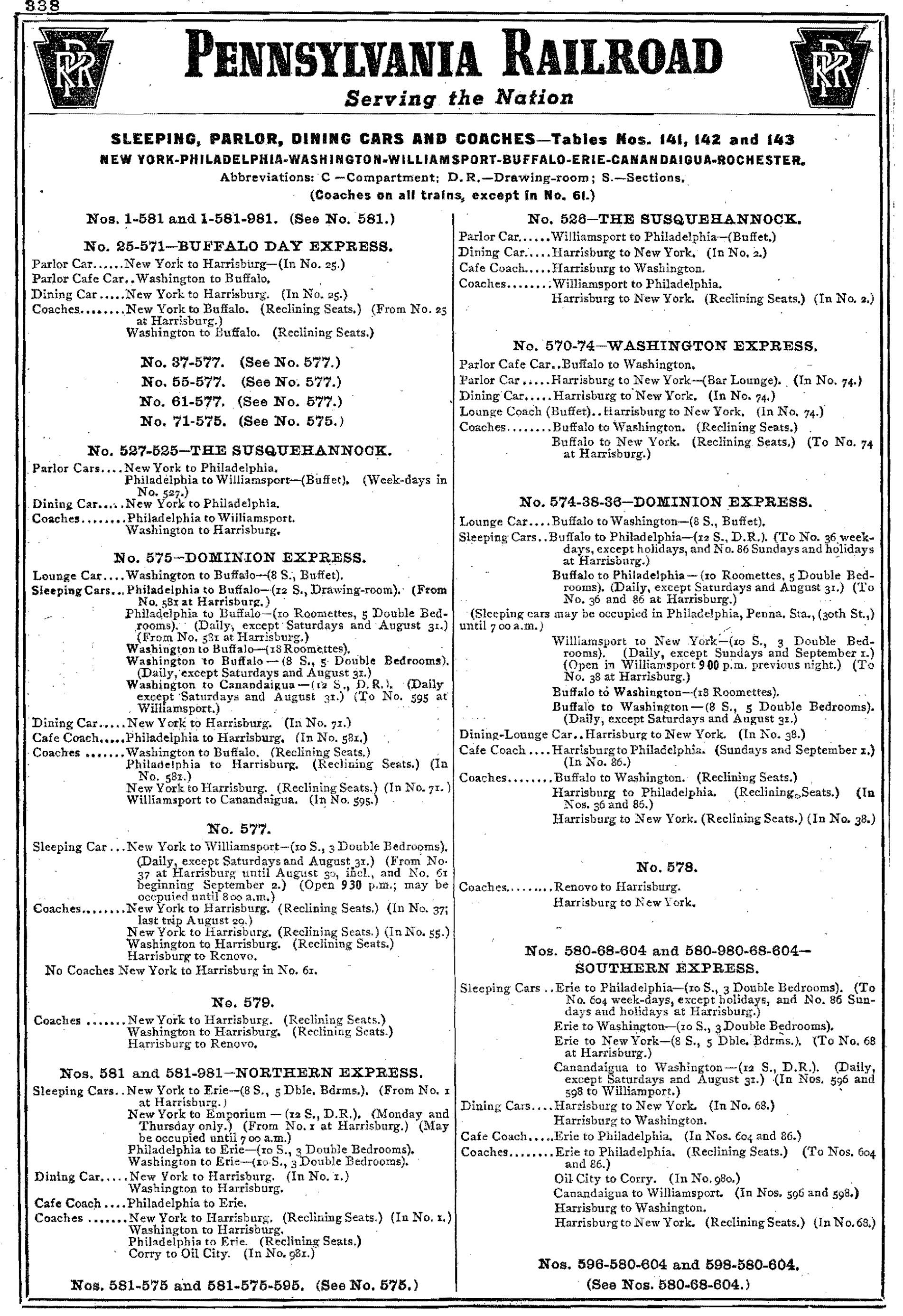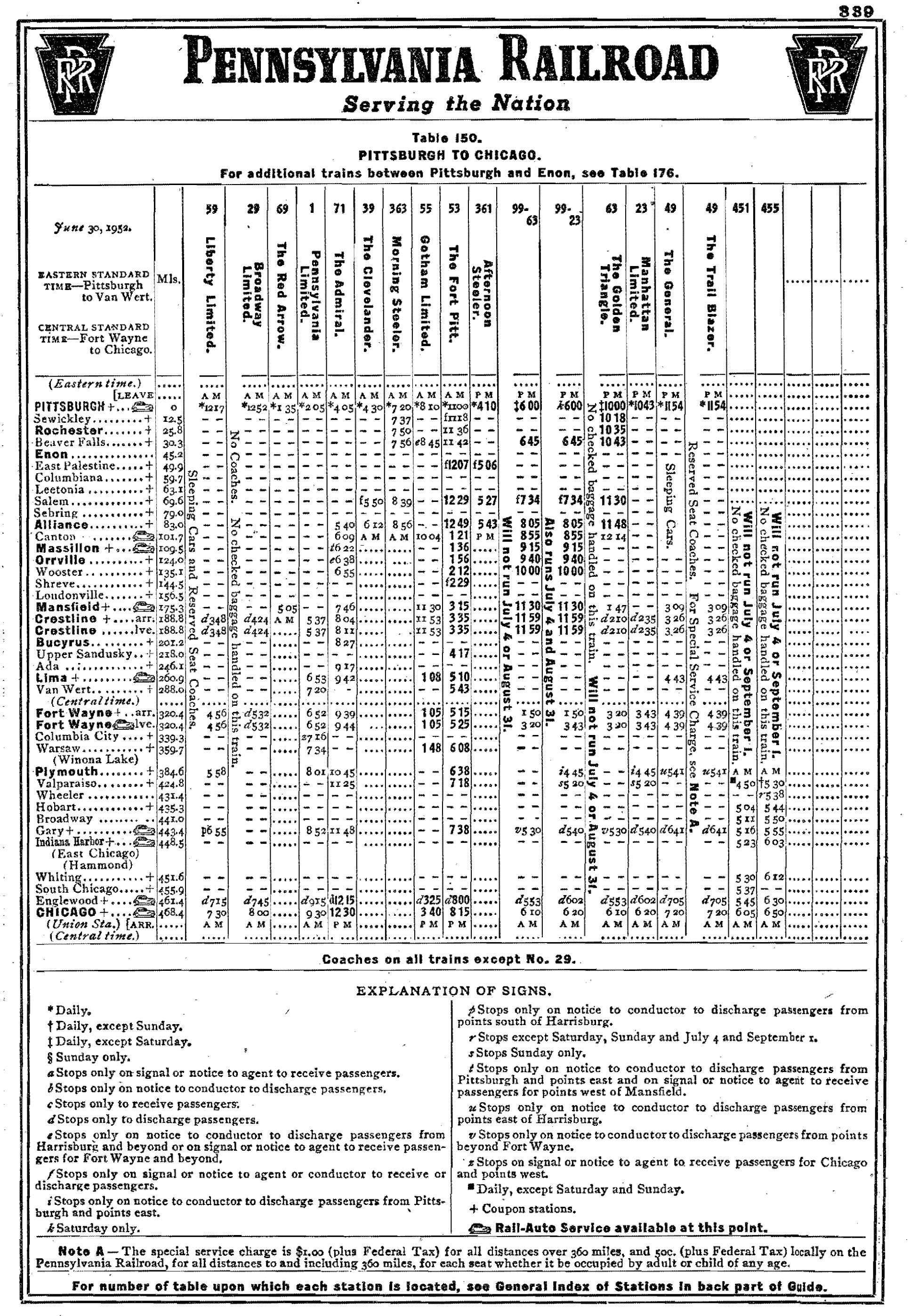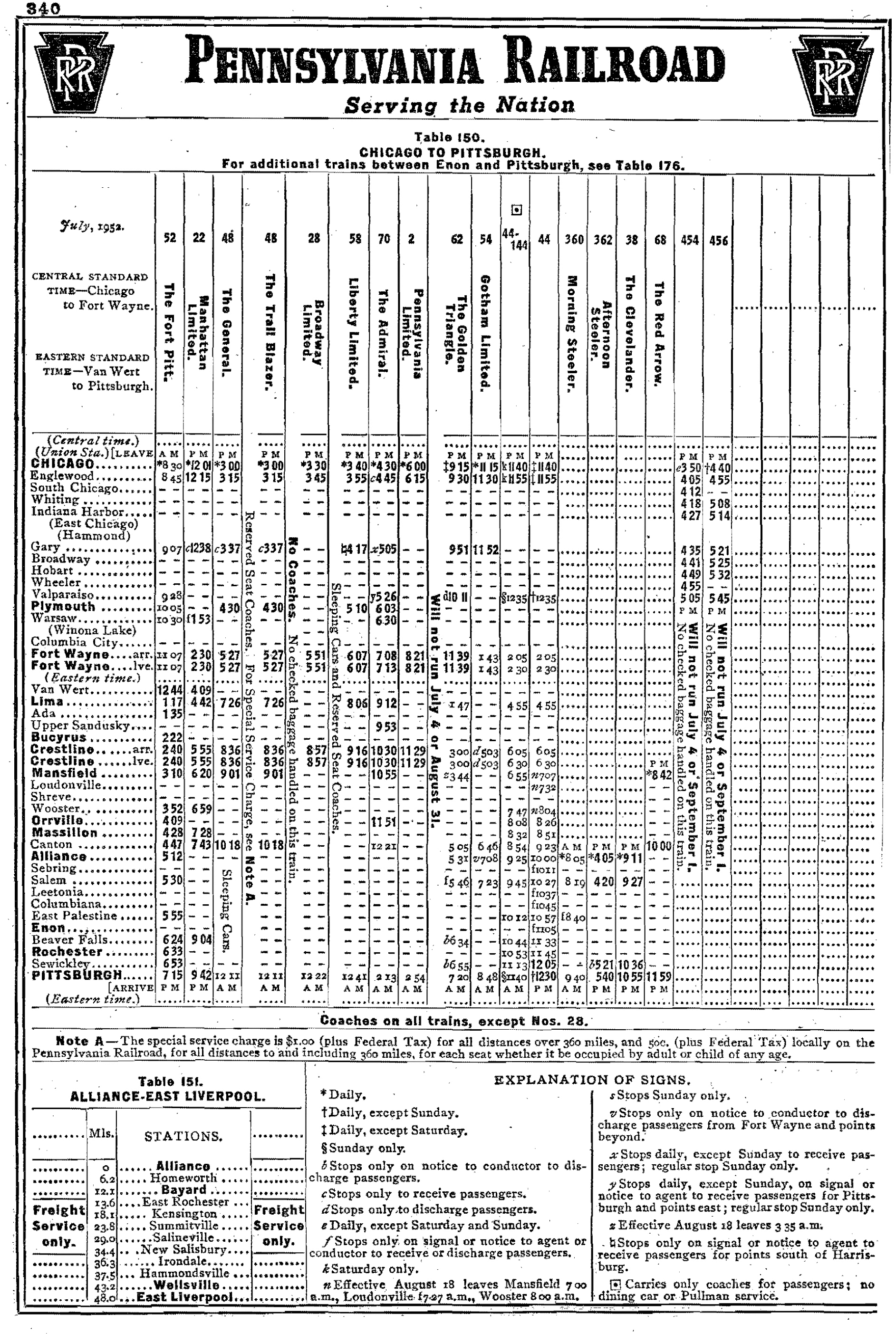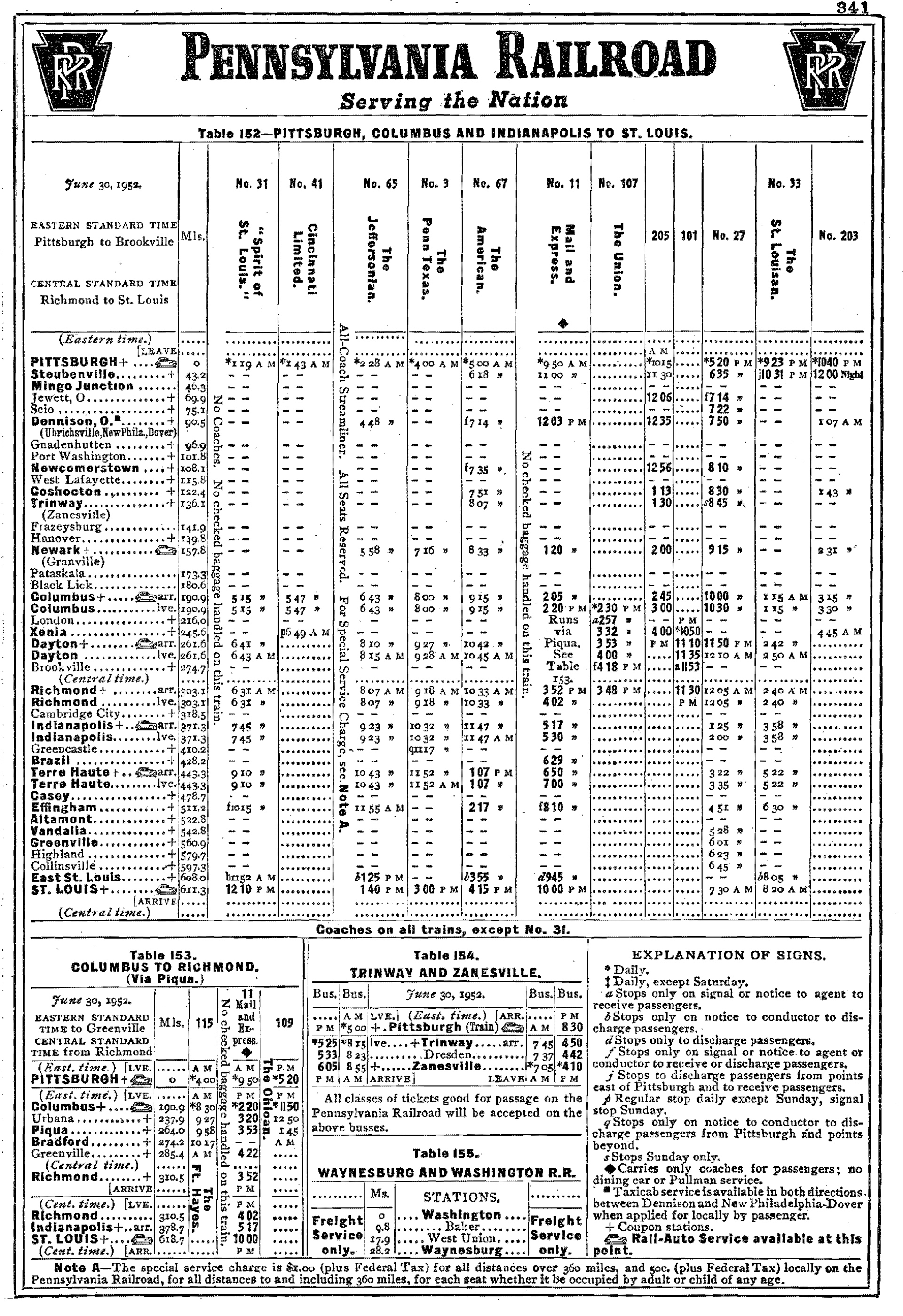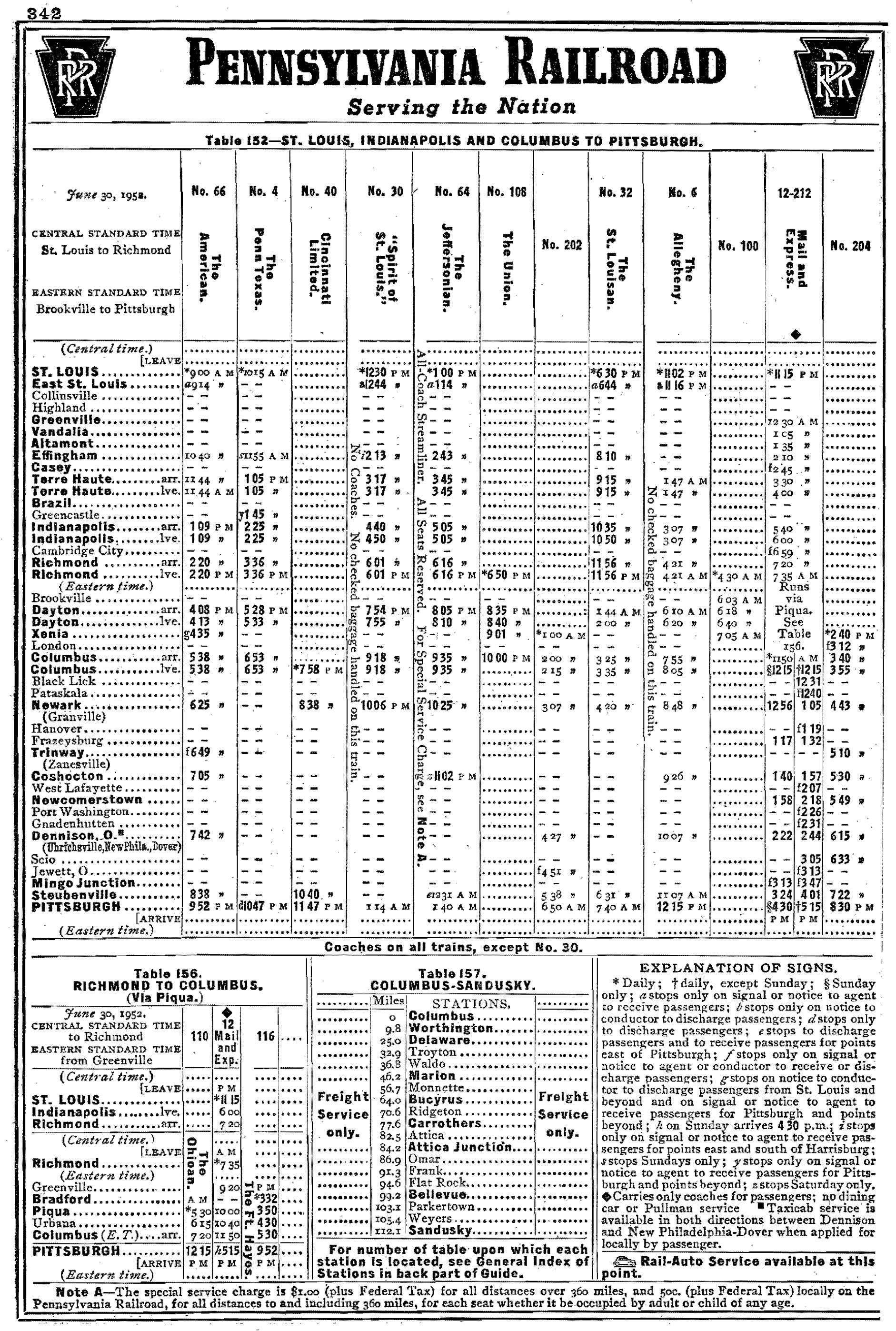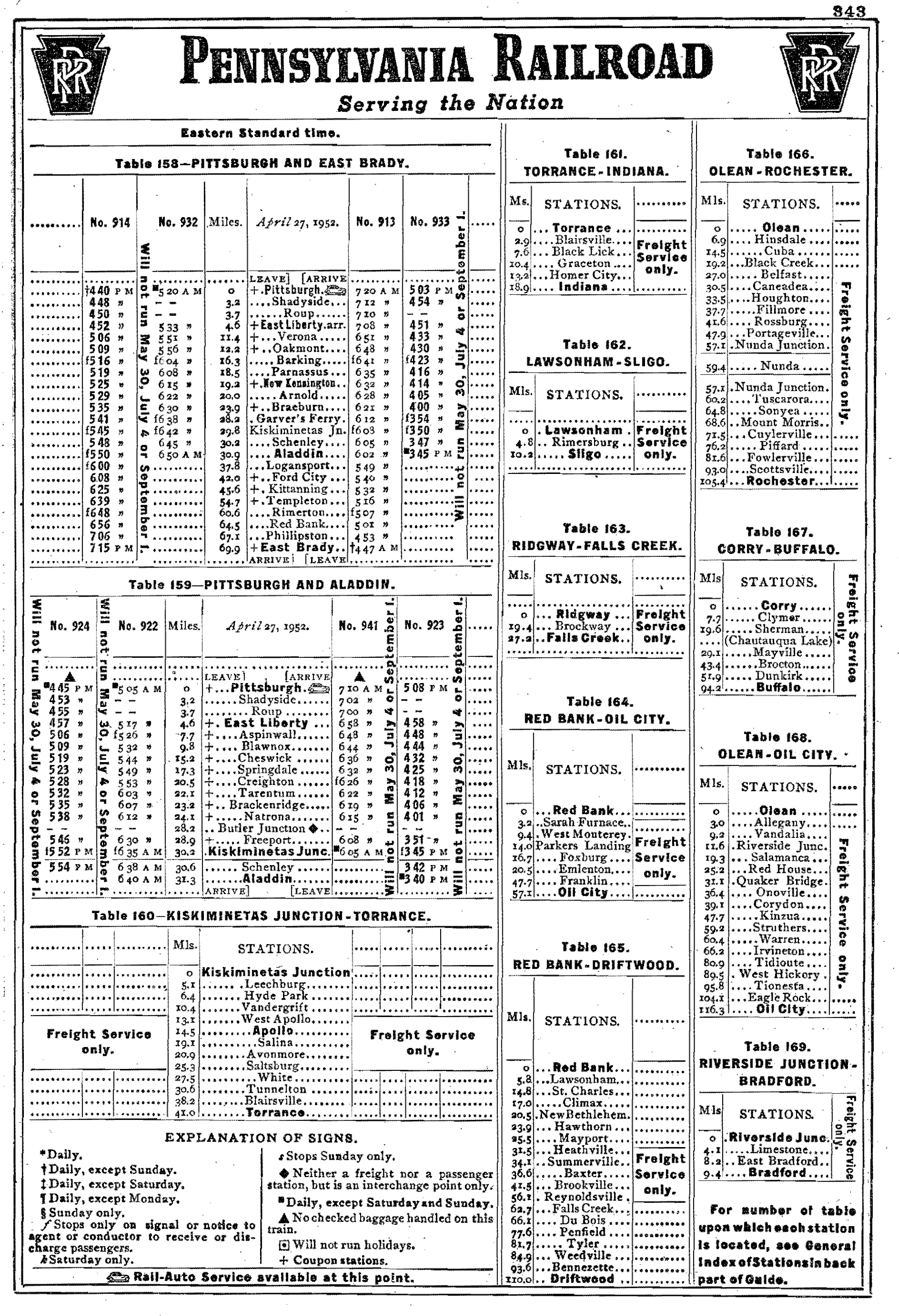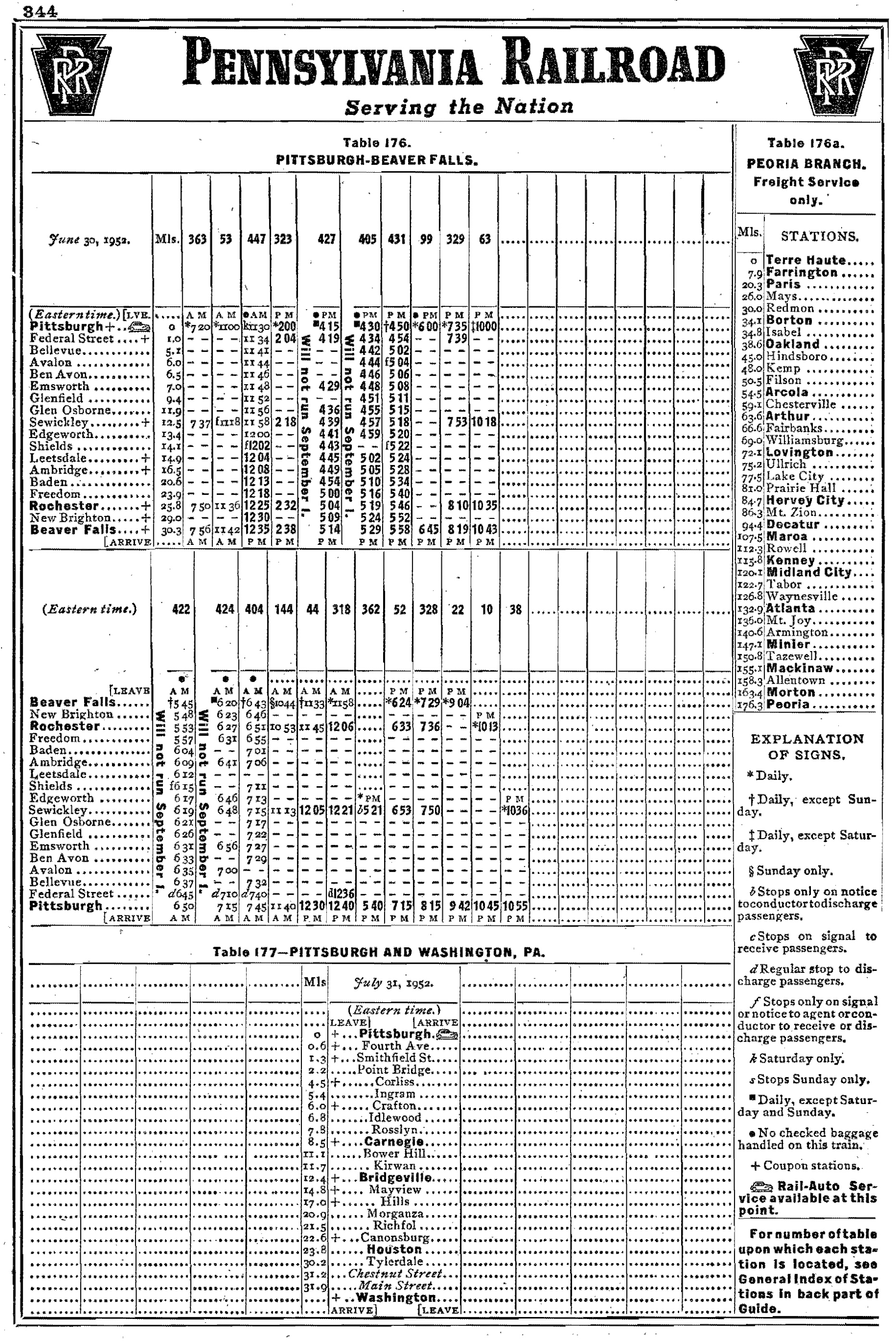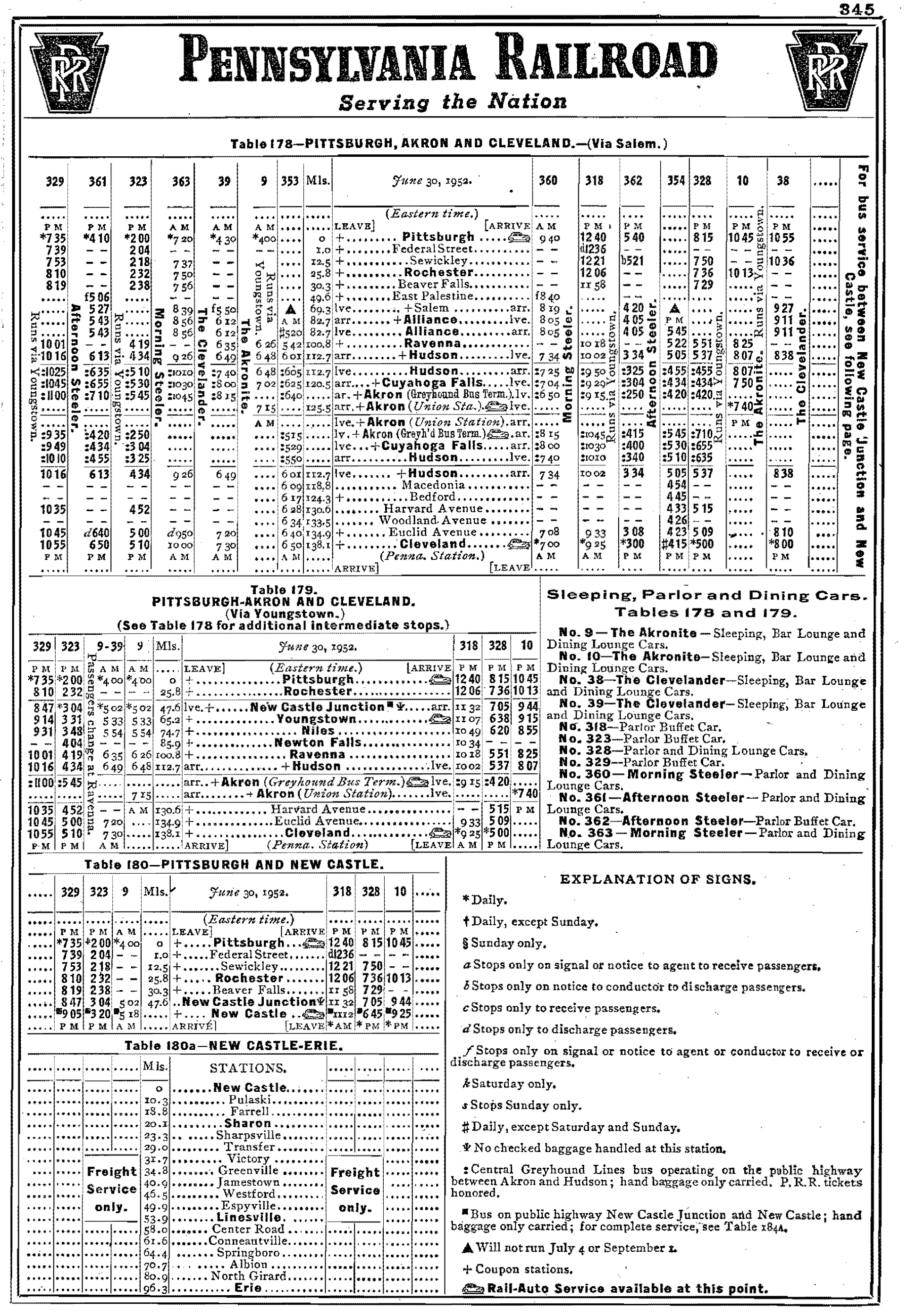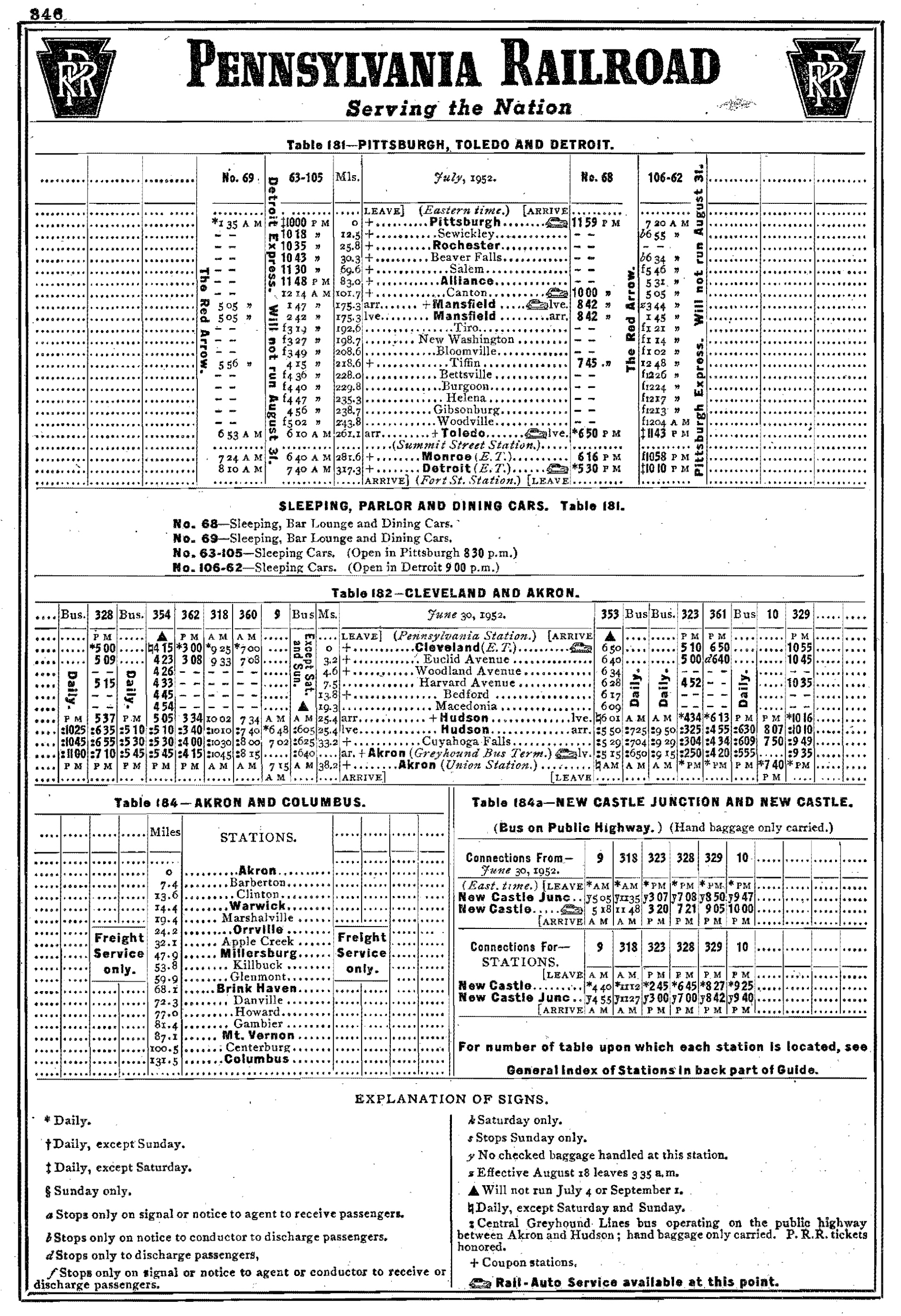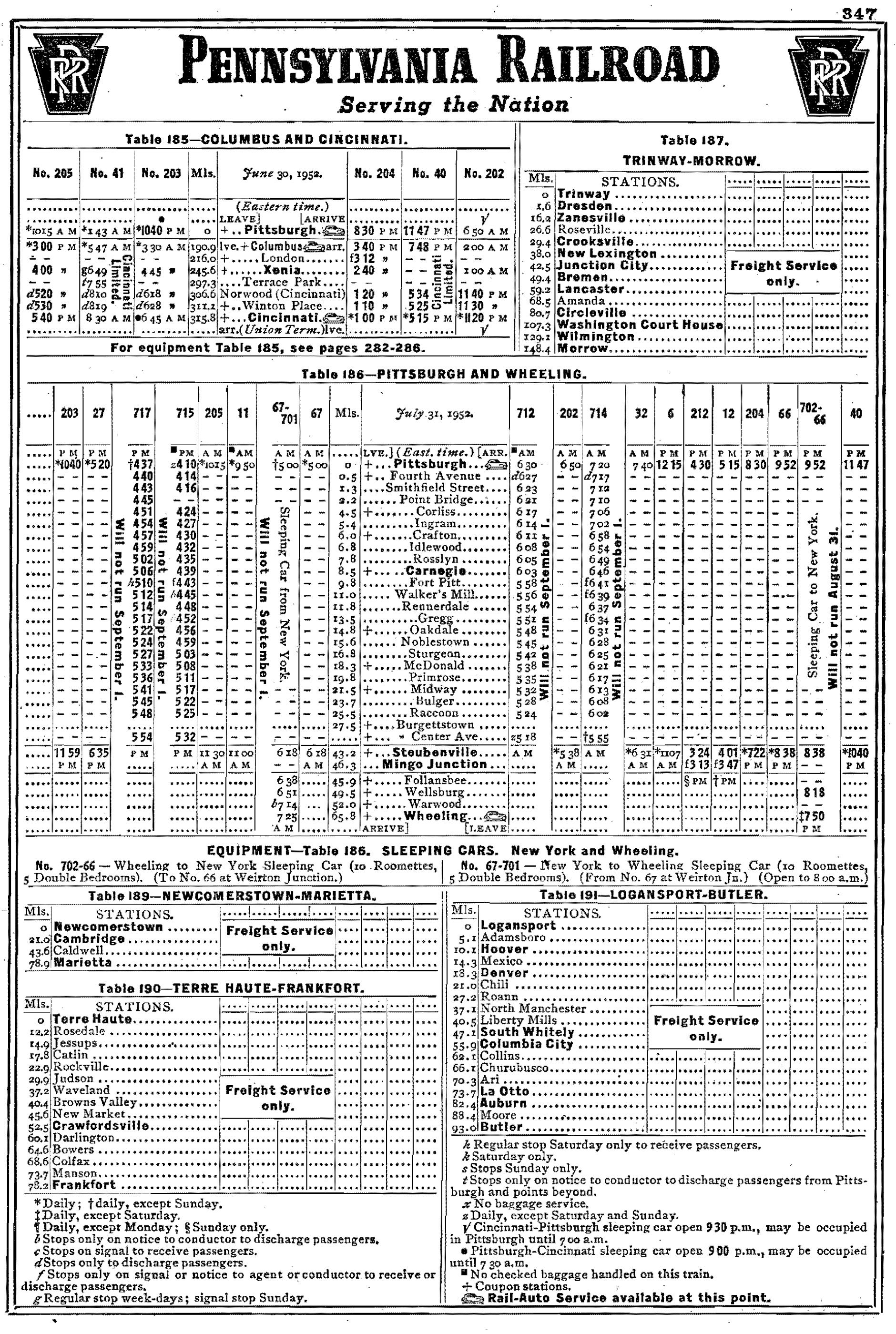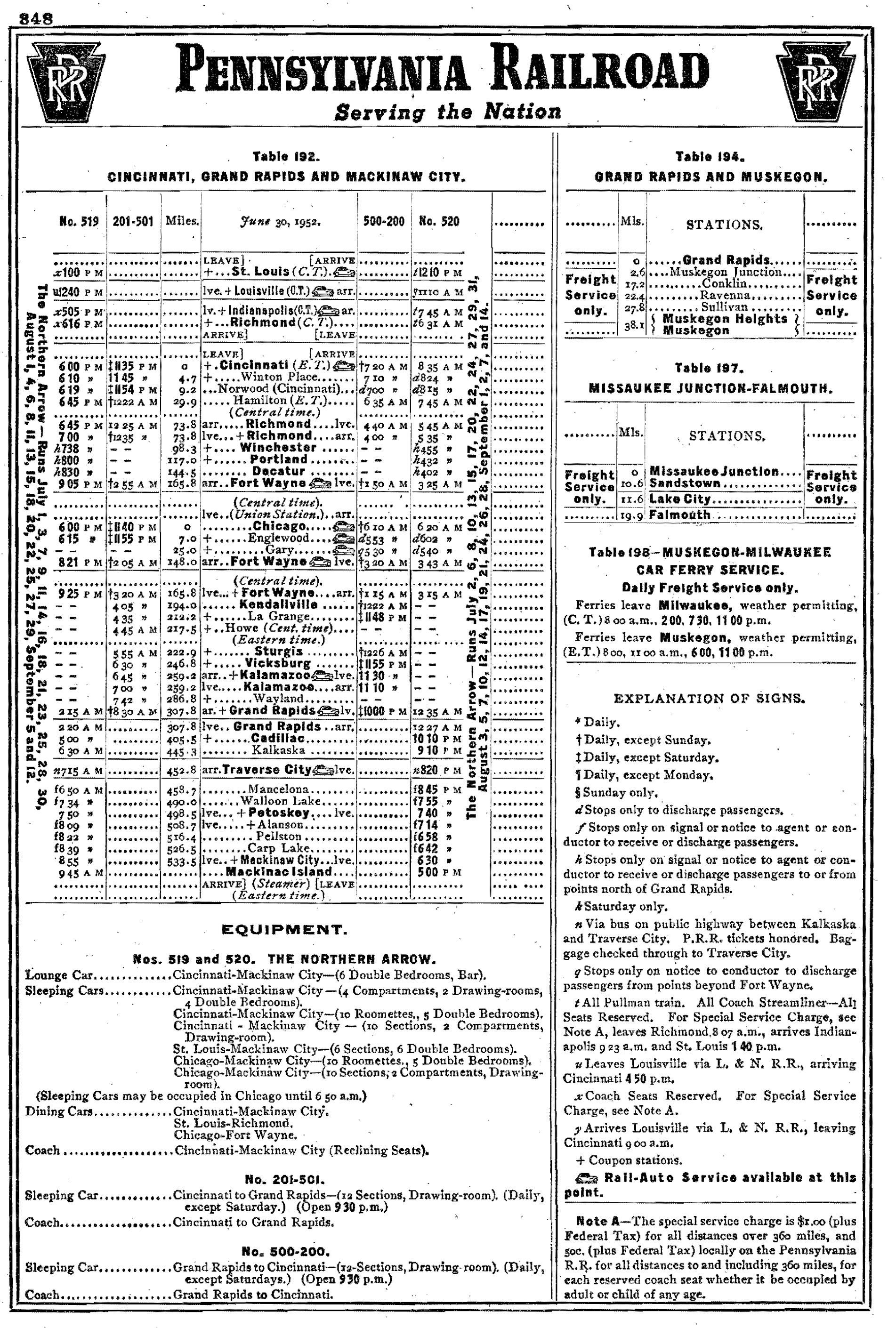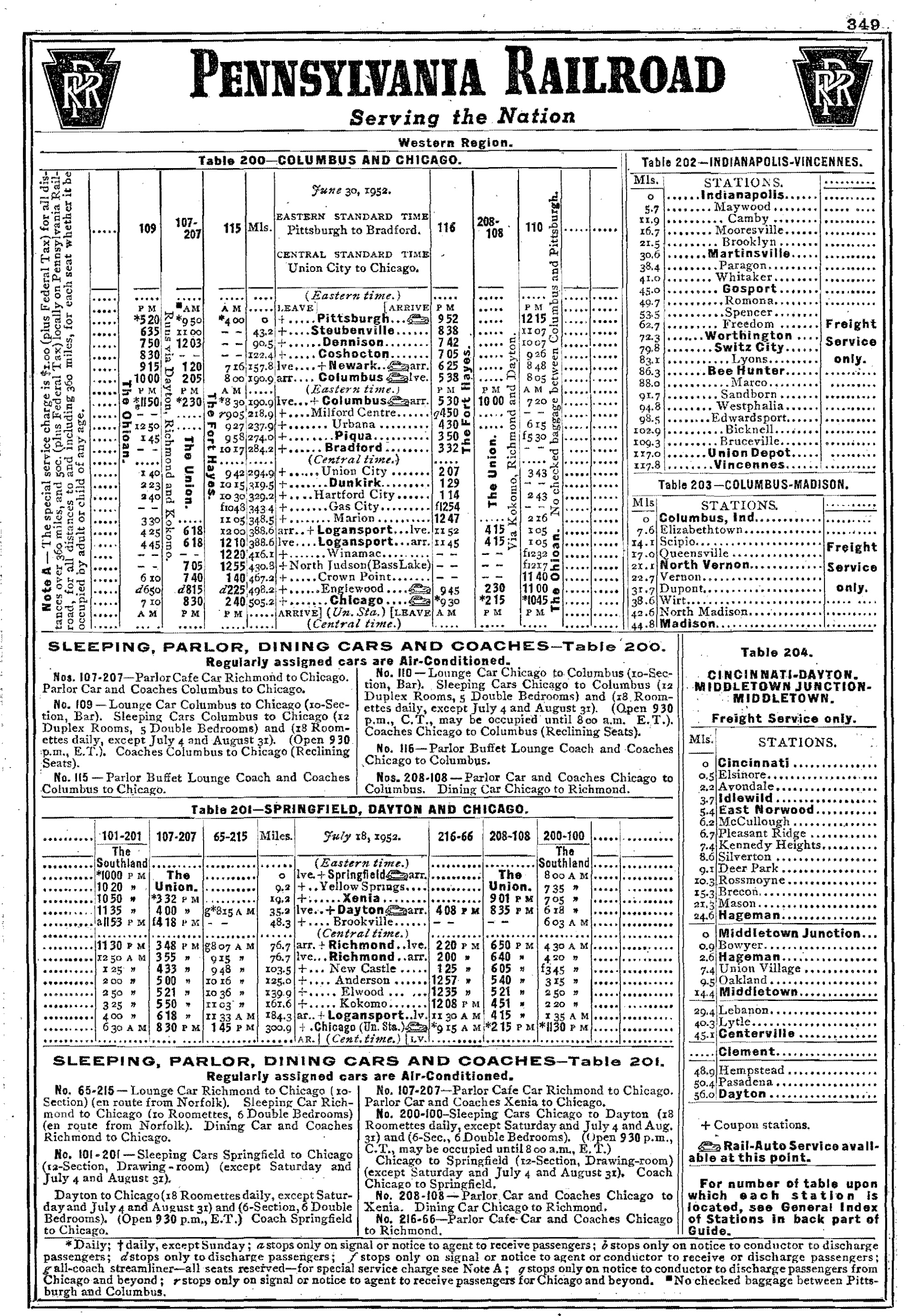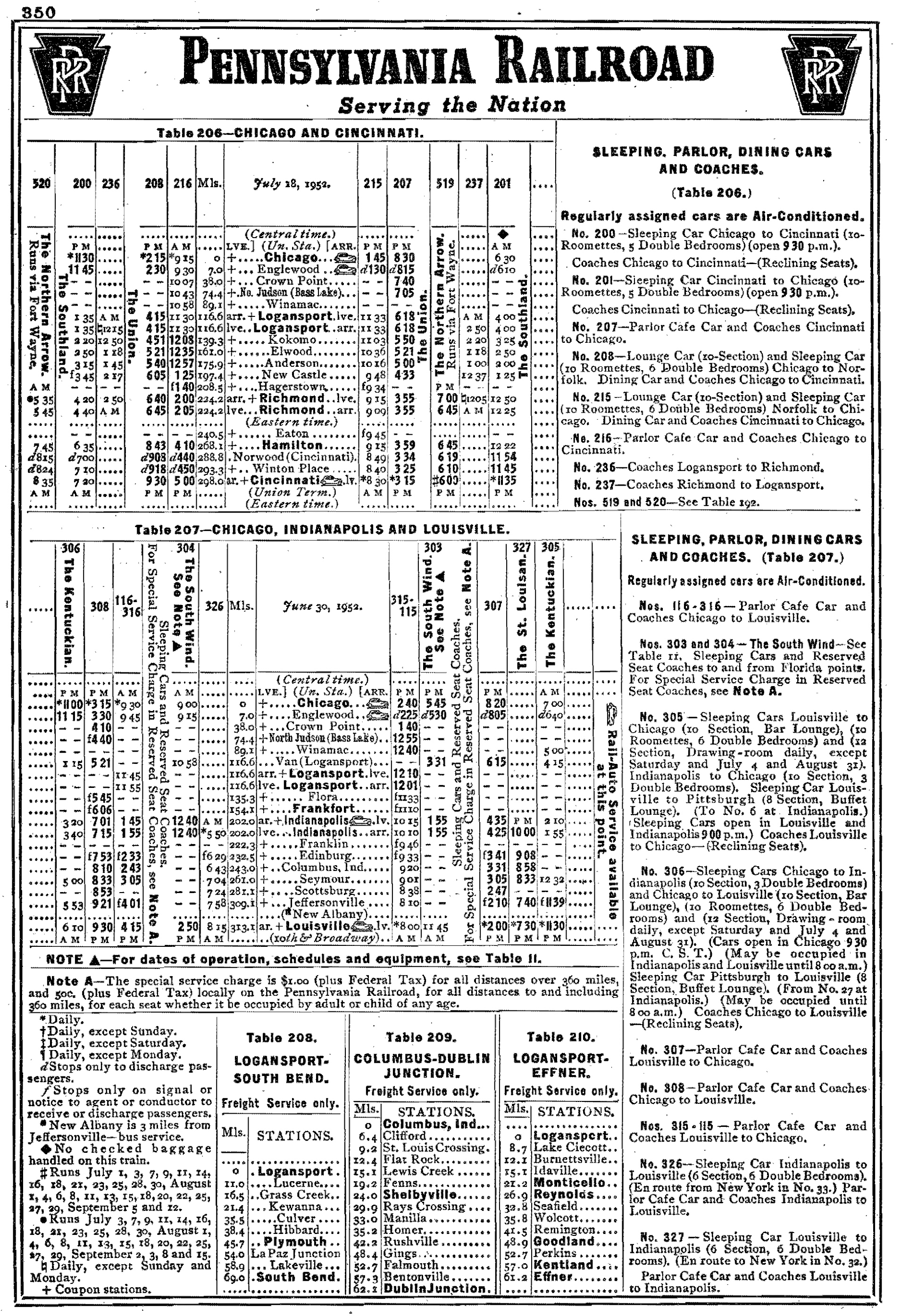Pennsylvania Railroad (PRR) Timetables: 1952
Published: October 11, 2023
By: Adam Burns
As one of the largest and most powerful railroads in the nation through the mid-20th century, the Pennsylvania featured one of the largest displays in "The Official Guide Of The Railways."
Its August, 1952 listing featured 76 pages (excluding corporate information) and covered all of the PRR's lines which totaled 10,000 miles in 1950. These public timetables also included all secondary freight branches which no longer offered passenger service.
1952 Listing
History
In 1846, the Pennsylvania Railroad (PRR), often colloquially referred to as the "Pennsy," was birthed as a response to the growing demand for transportation options. Primarily, the goal was to facilitate the movement of goods between Pittsburg and Harrisburg, thus embracing the budding industrialization era.
The railroad's reach was significant, cutting across key states in the United States. Besides Pennsylvania, PRR was instrumental in areas such as Washington D.C., Illinois, Ohio, Missouri, Michigan, Indiana, and New York. Its span was extensive, contributing greatly to the economic growth and prosperity in these regions.
The railroad’s total mileage, at its pinnacle, was an incredible feat on its own. Spanning approximately 10,515 miles, the PRR was one of the longest railroads in its epoch. This extensive network was integral to the commercial and industrial developments across the Midwest and Northeast regions.
The Pennsylvania Railroad’s primary purpose was multifaceted. Although it was initially designed for freight transport, it rapidly expanded to encompass passenger services. It connected major cities, delivered commodities, and transported mail, thereby effectively contributing to the societal and economic fabric of American life.
In 1968, a defining event for the PRR was the merger with the New York Central, giving birth to the Penn Central Transportation Company. Penn Central's reign was rather short-lived due to financial difficulties, which culminated in it becoming the largest bankruptcy in U.S. history by 1970.
The grand design of the Pennsylvania Railroad emerged from the vision to link the Appalachian coal and iron resources with eastern markets. The state, through the Main Line of Public Works, had been unable to maximize these resources fully.
The main actors pivotal in the formation of PRR included Edmund Smith, William Bingham, and John Stevens. They believed in harnessing the state's iron and coal resources, and their endeavor culminated in an enterprise of unprecedented magnitude, the Pennsylvania Railroad.
By 1852, the Pennsylvania Railroad had successfully achieved its initial goal of a direct railway from Philadelphia to Pittsburgh. This achievement, however, was just the start of a domino effect of expansion, partnerships, and absorptions that would bolster PRR's reign in the railroad industry.
From 1850 to the 1870s, PRR experienced a steady, almost explosive growth. The railroad extended its lines into major cities, opened up passenger operations, and evolved into a key player in the transportation of coal reserves from the fields to urban centers.
The Civil War era saw the Pennsylvania Railroad play a pivotal role in the Union’s logistics. Its strategic location and sheer size made it indispensable for moving troops, ammunition, and supplies. This increased the railroad's prominence, ushering it into a golden era of innovation and prosperity.
By 1910, PRR was not merely a railroad company; it was a corporate giant with stakes in real estate, steel mills, and coal mines. The management, under the leadership of Alexander Johnston Cassatt and later Samuel Rea, embarked on huge capital investments that transformed PRR into a modern and technologically advanced entity.
However, the Great Depression in the 1930s was a severe blow to the Pennsylvania Railroad. The economic downturn led to a massive decline in both freight and passenger revenues, pushing PRR to the brink of bankruptcy.
Despite the struggles during the depression years, PRR was resilient, managing to survive through cost-cutting measures and subsequent government assistance. The railroad adapted to the changing times and remained a valuable asset during World War II.
In the aftermath of World War II, Pennsylvania Railroad faced a series of new challenges brought about by a shift in transportation preferences. The passionate love affair Americans had with the automobile and the boom of commercial aviation led to a steady decline in rail passenger service
Subsequently, the 1950s saw PRR's profits dwindling due to increasing competition. Despite attempts to modernize and streamline operations, the company could not regain its former financial strength.
The merger with New York Central in 1968 was seen as a potential lifeline for the struggling Pennsylvania Railroad. The resulting company, Penn Central, hoped to control costs and increase profitability through the consolidation of their vast networks.
However, this merger didn't go as planned. Financial problems quickly escalated as the expected cost-saving benefits of the merger did not materialize. Factors such as outdated infrastructure, overcapacity, and labor disputes further compounded the difficulties.
Penn Central declared bankruptcy in 1970, marking the end of the Pennsylvania Railroad's era. The government intervened, forming the Consolidated Rail Corporation (Conrail) to rescue the railroad industry in the Northeast from total collapse.
Today, the legacy of the Pennsylvania Railroad lives on in the landscapes and cities it once connected. Many railway stations, such as the 30th Street Station in Philadelphia, stand as reminders of PRR's vibrant past.
The Pennsylvania Railroad was indeed an influential force during its century of operation. It shaped the physical, economic, and cultural landscapes of the areas it served, contributing significantly to the development of modern America.
Throughout its existence, Pennsylvania Railroad demonstrated innovation, adaptability, and resilience in an ever-changing environment. Even though it succumbed to external financial pressures, its impact on American railroad history cannot be denied.
The story of the Pennsylvania Railroad serves as a stark reminder of the dynamic nature of economies and industries. From its humble beginnings, the rise to prominence, and its eventual decline, the narrative offers invaluable lessons in business strategy, resilience, and adaptability. Despite its closing chapter, the PRR's contribution to the railroad industry remains iconic and enduring.
SteamLocomotive.com
Wes Barris's SteamLocomotive.com is simply the best web resource on the study of steam locomotives.
It is difficult to truly articulate just how much material can be found at this website.
It is quite staggering and a must visit!

